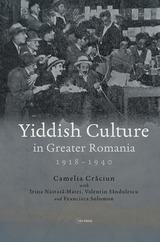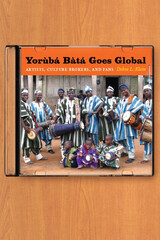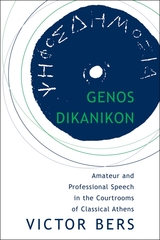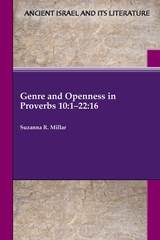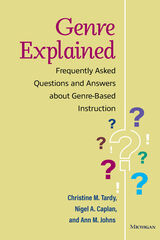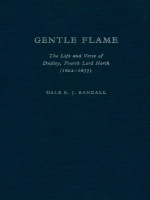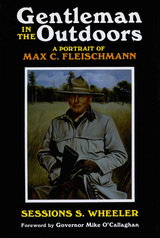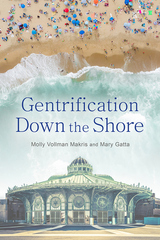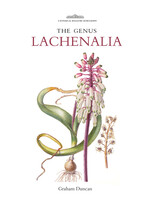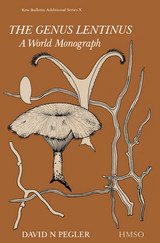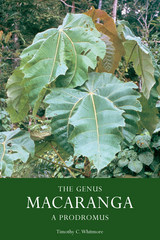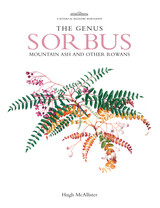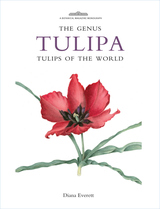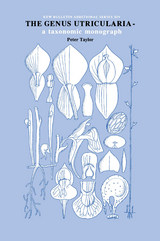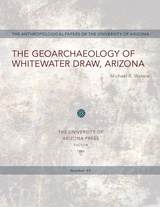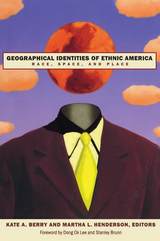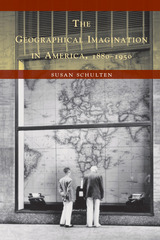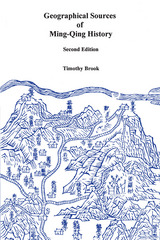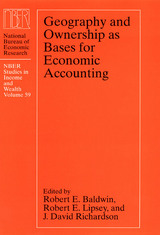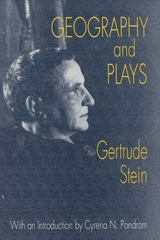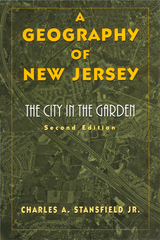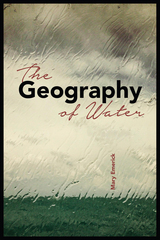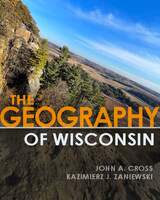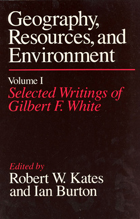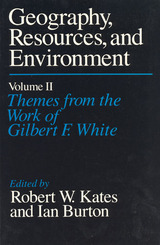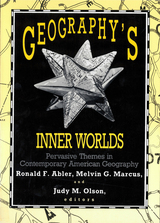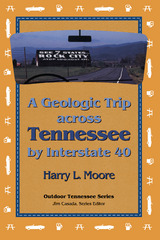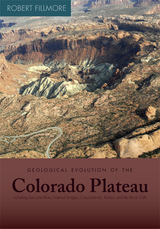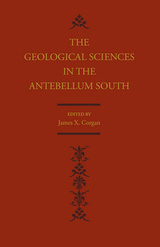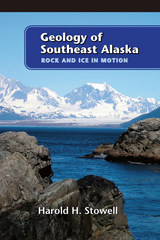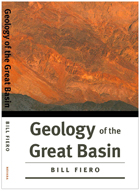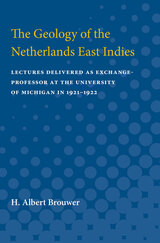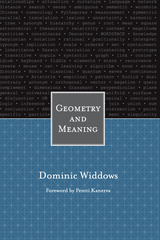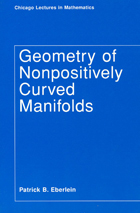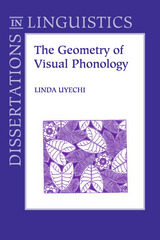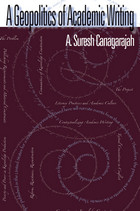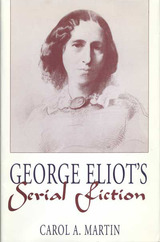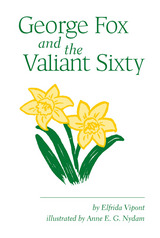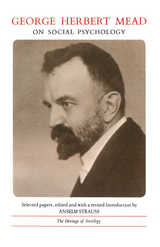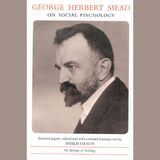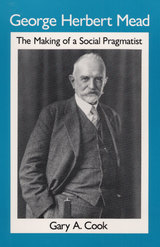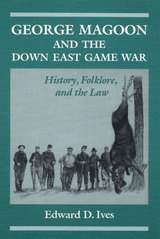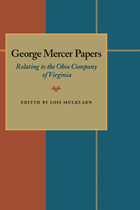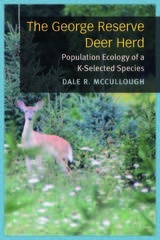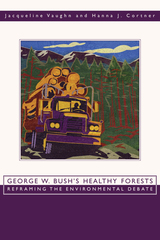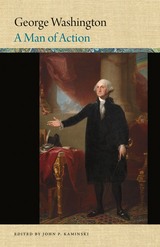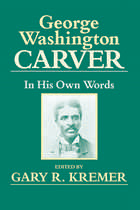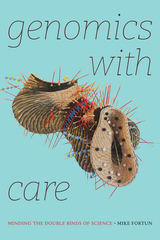 Genomics with Care: Minding the Double Binds of Science
Mike Fortun
Duke University Press, 2023 In Genomics with Care Mike Fortun presents an experimental ethnography of contemporary genomics, analyzing science as a complex amalgam of cognition and affect, formal logics and tacit knowledge, statistics, and ethics. Fortun examines genomics in terms of care—a dense composite of affective and cognitive forces that drive scientists and the relations they form with their objects of research, data, knowledge, and community. Reading genomics with care shows how each resists definition yet is so entangled as to become indistinguishable. Fortun analyzes four patterns of genomic care—curation, scrupulousness, solicitude, and friendship—seen in the conceptual, technological, social, and methodological changes that transpired as the genetics of the 1980s became the genomics of the 1990s, and then the “post-genomics” of the 2000s. By tracing the dense patterns made where care binds to science, Fortun shows how these patterns mark where scientists are driven to encounter structural double binds that are impossible to resolve, and yet are where scientific change and creativity occur.
Genos Dikanikon: Amateur and Professional Speech in the Courtrooms of Classical Athens
Victor Bers
Harvard University Press, 2009 Under the Athenian democracy, litigants were expected to speak for themselves, though they could memorize a speech written for them. The texts of about one hundred judicial speeches of the genos dikanikon (the forensic genre) have survived, all attributed to Demosthenes or another of the ten writers of canonical status. These professionals wrote either for themselves or members of a small elite. Victor Bers argues that men too poor to afford a professionally written speech frequently spoke before judicial bodies in procedures crucial to their status, wealth, or even their lives, and that these amateur performances often manifested an unmanly yielding to emotions of anger or fear; professional speech, Bers seeks to demonstrate, was to a large degree crafted in reaction to amateur stumbling.
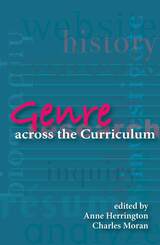 Genre Across The Curriculum
edited by Anne Herrington and Charles Moran
Utah State University Press, 2005 Genre across the Curriculum will function as a "good" textbook, one not for the student, but for the teacher, and one with an eye on the context of writing. Here you will find models of practice, descriptions written by teachers who have integrated the teaching of genre into their pedagogy in ways that both support and empower the student writer. While authors here look at courses across disciplines and across a range of genres, they are similar in presenting genre as situated within specific classrooms, disciplines, and institutions. Their assignments embody the pedagogy of a particular teacher, and student responses here embody students' prior experiences with writing. In each chapter, the authors define a particular genre, define the learning goals implicit in assigning that genre, explain how they help their students work through the assignment, and, finally, discuss how they evaluate the writing their students do in response to their teaching.
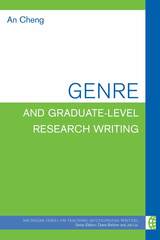 Genre and Graduate-Level Research Writing
An Cheng
University of Michigan Press, 2018 In the context of the well-known pedagogical materials for graduate-level writers by Swales & Feak, An Cheng has written a resource that provides support for instructors who have the daunting task of scaffolding graduate writers’ efforts to navigate discipline-specific research genres--genres that may be unfamiliar to instructors themselves.
Genre and Graduate-Level Research Writing is grounded in genre-based theory and full of best practices examples. The book opens by presenting the case for the use of genre in graduate-level research writing and by examining rhetorical consciousness-raising and its ties to genre. Unique to the volume is a thorough analysis of the materials designed to teach genre and research writing—focused on the textbooks of Swales & Feak (e.g., Academic Writing for Graduate Students) and similar texts. Other chapters provide examples of discovery-based genre tasks, evaluative methods for assessing discipline-specific writing, and techniques for becoming a more confident instructor of graduate-level research writing.
Genre and Openness in Proverbs 10:1-22:16
Suzanna R. Millar
SBL Press, 2020 A fruitful reading strategy that reveals expansive meaning in Proverbs
Interpreters often characterize Proverbs 10:1–22:16 as a dead-end of cold, disengaged dogma closed off from the realities of the world. In Genre and Openness in Proverbs 10:1–22:16, Suzanna R. Millar takes a different view, arguing that the didactic proverbs in these chapters are not dull and dry but are filled with poetic complexities open to many possible interpretations and uses. By incorporating paremiology, the technical study of the proverb genre, Millar sheds light on important debates such as character development, kingship, the connection between act and consequence, and the acquisition of wisdom.
Features
- A clarification of the genre of the sayings in light of modern genre theory
- A linguistic analysis of how openness is generated in biblical proverbs
- An examination of the didactic use of proverbs to train the hearer’s mind
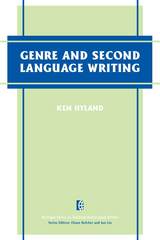 Genre and Second Language Writing
Ken Hyland
University of Michigan Press, 2004 Second language students not only need strategies for drafting and revising to write effectively, but also a clear understanding of genre so that they can appropriately structure their writing for various contexts. Over that last decade, increasing attention has been paid to the notion of genre and its central place in language teaching and learning. Genre and Second Language Writing enters into this important debate, providing an accessible introduction to current theory and research in the area of written genres-and applying these understandings to the practical concerns of today's EFL/ESL classroom. Each chapter includes discussion and review questions and small-scale practical research activities. Like the other texts in the popular Michigan Series on Teaching Multilingual Writers, this book will interest ESL teachers in training, teacher educators, current ESL instructors, and researchers and scholars in the area of ESL writing.
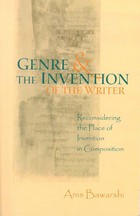 Genre And The Invention Of The Writer: Reconsidering the Place of Invention in Composition
Anis Bawarshi
Utah State University Press, 2003 In a focused and compelling discussion, Anis Bawarshi looks to genre theory for what it can contribute to a refined understanding of invention. In describing what he calls "the genre function," he explores what is at stake for the study and teaching of writing to imagine invention as a way that writers locate themselves, via genres, within various positions and activities. He argues, in fact, that invention is a process in which writers are acted upon by genres as much as they act themselves. Such an approach naturally requires the composition scholar to re-place invention from the writer to the sites of action, the genres, in which the writer participates. This move calls for a thoroughly rhetorical view of invention, roughly in the tradition of Richard Young, Janice Lauer, and those who have followed them.
Instead of mastering notions of "good" writing, Bawarshi feels that students gain more from learning how to adapt socially and rhetorically as they move from one "genred" site of action to the next.
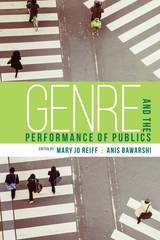 Genre and the Performance of Publics
Mary Jo Reiff
Utah State University Press, 2016 In recent decades, genre studies has focused attention on how genres mediate social activities within workplace and academic settings. Genre and the Performance of Publics moves beyond institutional settings to explore public contexts that are less hierarchical, broadening the theory of how genres contribute to the interconnected and dynamic performances of public life. Chapters examine how genres develop within publics and how genres tend to mediate performances in public domains, setting up a discussion between public sphere scholarship and rhetorical genre studies. The volume extends the understanding of genres as not only social ways of organizing texts or mediating relationships within institutions but as dynamic performances themselves. By exploring how genres shape the formation of publics, Genre and the Performance of Publicsbrings rhetoric/composition and public sphere studies into dialogue and enhances the understanding of public genre performances in ways that contribute to research on and teaching of public discourse.
Genre Explained: Frequently Asked Questions and Answers about Genre-Based Instruction
Christine M. Tardy, Nigel A. Caplan & Ann M. Johns
University of Michigan Press, 2023 The idea of teaching writing through genres—rather than, say, through prescriptive forms, templates, and rhetorical modes—is intuitively appealing. Yet many teachers have questions, and they are absolutely right to ask them: What are genres? What is genre-based instruction? What do students write if they don’t write essays? Isn’t it easier to teach and learn five-paragraph essays? What’s the role of language in genre teaching? And many more. These are all excellent questions and ones that new and experienced teachers alike have also struggled with. This book sets out to tackle some of the most common questions that teachers, teacher educators, and administrators may have when moving toward a genre-based teaching approach.
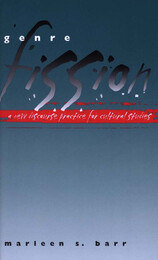 Genre Fission: A New Discourse Practice for Culture Studies
Marleen S. Barr
University of Iowa Press, 2000 What do Amsterdam prostitutes, NASA astronauts, cross-dressing texts, and Star Trek characters have in common? Only Marleen Barr knows for sure. In Genre Fission, the award-winning author revitalizes literary and cultural theory by proposing an entirely new discourse practice of examining the points where genres and attendant meanings first converge, then reemerge as something new. Part literary analysis, part cultural studies, part feminist critique flavored with a smattering of science fiction and utopian studies, it is witty and eccentric, entertaining and enlightening.
Barr expands postmodern assumptions about cultural studies by suggesting that "genre fission" is occurring among discrete literary and cultural "types" of events--mainstream novels, science fiction, historical narratives, film, paintings, and museum displays. For her literary insights, Barr turns her attention to such mainstream authors as Saul Bellow, John Updike, Marge Piercy, and John Barth as well as science fiction writers Ursula Le Guin and Octavia Butler and Hispanic American writers Julia Alvarez, Ana Castillo, and Cristina García, among others.
Barr moves from literary to culture studies by addressing such phenomena from contemporary mass culture as the urban landscapes of New York and Los Angeles, Jackie Kennedy, the Star Trek industry, Lynn Redgrave, Amsterdam's red light district, Lorena Bobbitt, and the Apollo astronauts--to provide only a few of the relevant examples. Thus Genre Fission attains what Barr herself designates (in describing the art of Judy Chicago and Lee Bontecou) as "utopian interweavings of difference," crossing numerous boundaries in order to frame a larger territory for exploration.
 Genre in Popular Music
Fabian Holt
University of Chicago Press, 2007 The popularity of the motion picture soundtrack O Brother, Where Art Thou? brought an extraordinary amount of attention to bluegrass, but it also drew its share of criticism from some aficionados who felt the album’s inclusion of more modern tracks misrepresented the genre. This soundtrack, these purists argued, wasn’t bluegrass, but “roots music,” a new and, indeed, more overarching category concocted by journalists and marketers. Why is it that popular music genres like these and others are so passionately contested? And how is it that these genres emerge, coalesce, change, and die out?
In Genre in Popular Music, Fabian Holt provides new understanding as to why we debate music categories, and why those terms are unstable and always shifting. To tackle the full complexity of genres in popular music, Holt embarks on a wide-ranging and ambitious collection of case studies. Here he examines not only the different reactions to O Brother, but also the impact of rock and roll’s explosion in the 1950s and 1960s on country music and jazz, and how the jazz and indie music scenes in Chicago have intermingled to expand the borders of their respective genres. Throughout, Holt finds that genres are an integral part of musical culture—fundamental both to musical practice and experience and to the social organization of musical life.
 Genre Matters: Essays in Theory and Criticism
Edited by Garin Dowd, Lesley Stevenson, and Jeremy Strong
Intellect Books, 2006 This collection of new essays addresses a topic of established and expanding critical interest throughout the humanities. It demonstrates that genre matters in a manner not constrained by disciplinary boundaries and includes new work on Genre Theory and applications of thinking about genre from Aristotle to Derrida and beyond. The essays focus on economies of expectation and competency, genre as media form, recent developments in television broadcast genres, translation and genericity, the role played by genre in film publicity, gender and genre, genre in fiction, and the problematics of classification. An introductory essay places the contributions in the context of a wide range of thinking about genre in the arts, media and humanities. The volume will be of interest to both undergraduates and postgraduates, especially those following courses on Genre Theory and Genre Criticism, and to academics working in a range of subject areas such as Cultural Studies, Film Studies, Media Studies and Literary Studies.
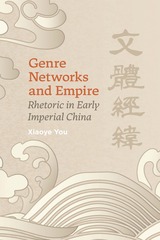 Genre Networks and Empire: Rhetoric in Early Imperial China
Xiaoye You
Southern Illinois University Press, 2023 A decolonial reading of Han Dynasty rhetoric reveals the logics and networks that governed early imperial China
In Genre Networks and Empire, Xiaoye You integrates a decolonial and transnational approach to construct a rhetorical history of early imperial China. You centers ancient Chinese rhetoric by focusing on how an imperial matrix of power was established in the Han Dynasty through genres of rhetoric and their embodied circulation, and through epistemic constructs such as the Way, heaven, ritual, and yin-yang.
Through the concept of genre networks, derived from both ancient Chinese and Western scholarship, You unlocks the mechanisms of early Chinese imperial bureaucracy and maps their far-reaching influence. He considers the communication of governance, political issues, court consultations, and the regulation of the inner quarters of empire. He closely reads debates among government officials, providing insight into their efforts to govern and legitimize the regime and their embodiment of different schools of thought. Genre Networks and Empire embraces a variety of rhetorical forms, from edicts, exam essays, and commentaries to instruction manuals and memorials. It captures a range of literary styles serving the rhetorical purposes of praise and criticism. In the context of court documentation, these genre networks reflect systems of words in motion, mediated governmental decisions and acts, and forms of governmental logic, strategy, and reason.
A committed work of decolonial scholarship, Genre Networks and Empire shows, through Chinese words and writing, how the ruling elites of Han China forged a linguistic matrix of power, a book that bears implications for studies of rhetoric and empire in general.
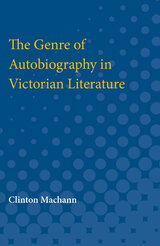 Genre of Autobiography in Victorian Literature
Clinton Machann
University of Michigan Press, 1994 Clinton Machann challenges recent popular approaches to the Victorian autobiography that treat the genre ahistorically or as a subgenre of fiction. Machann argues instead for considering these autobiographies interntextually and as a historically defined genre that can profitably be studied as nonfiction and as a referential art. The plots of Victorian autobiographies are highliy variable in terms of developing motifs and tropes. Autobiographers undergo spiritual and mental crises, live out Romantic and biblical myths, follow historical and scientific paradigms and the dynamic patterns of their own ideas. Nevertheless, underlying this diversity are profound structural similarities in plots of self-development and the implied relationships between self and public works and ideas. In the course of discussing eleven Victorian autobiographies in chronological order, Machann suggests many formal and conventional continuities among them. The eleven autobiographies include those of John Stuart Mill, Anthony Trollope, John Ruskin, and Charles Darwin, among other luminaries of the Victorian era. Juxtaposing well-known works with less familiar ones, Machann helps the reader to explore the boundaries of the genre, appreciate stylistic variations, and identify profound structural similarities, all of which result from the larger Victorian culture. This book will be of interest to students of the Victorian era as well as scholars of life-writing and historical constructions of self.
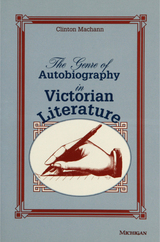 Genre of Autobiography in Victorian Literature
Clinton Machann
University of Michigan Press, 1995 Clinton Machann challenges recent popular approaches to the Victorian autobiography that treat the genre ahistorically or as a subgenre of fiction. Machann argues instead for considering these autobiographies interntextually and as a historically defined genre that can profitably be studied as nonfiction and as a referential art. The plots of Victorian autobiographies are highliy variable in terms of developing motifs and tropes. Autobiographers undergo spiritual and mental crises, live out Romantic and biblical myths, follow historical and scientific paradigms and the dynamic patterns of their own ideas. Nevertheless, underlying this diversity are profound structural similarities in plots of self-development and the implied relationships between self and public works and ideas. In the course of discussing eleven Victorian autobiographies in chronological order, Machann suggests many formal and conventional continuities among them. The eleven autobiographies include those of John Stuart Mill, Anthony Trollope, John Ruskin, and Charles Darwin, among other luminaries of the Victorian era. Juxtaposing well-known works with less familiar ones, Machann helps the reader to explore the boundaries of the genre, appreciate stylistic variations, and identify profound structural similarities, all of which result from the larger Victorian culture. This book will be of interest to students of the Victorian era as well as scholars of life-writing and historical constructions of self.
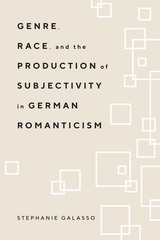 Genre, Race, and the Production of Subjectivity in German Romanticism
Stephanie Galasso
Northwestern University Press, 2024 Exposes German Romanticism’s entanglements of aesthetic philosophy with racialized models of humanity
Late Enlightenment philosophers and writers like Herder, Goethe, and Schiller broke with conventions of form and genre to prioritize an idealized, and racially coded, universality. Newly translated literatures from colonial contexts served as the basis for their evaluations of how to contribute to a distinctly “German” national literary tradition, one that valorized modernity and freedom and thus fortified crucial determinants of modern concepts of whiteness. Through close readings of both canonical and less-studied Romantic texts, Stephanie Galasso examines the intimately entwined histories of racialized subjectivity and aesthetic theory and shows how literary genre is both symptomatic and generative of the cultural violence that underpinned the colonial project.
Poetic expression and its generic conventions continue to exert pressure on the framing and reception of the stories that can be told about interpersonal and structural experiences of oppression. Genre, Race, and the Production of Subjectivity in German Romanticism explores how white subjectivity is guarded by symbolic and material forms of violence.
 Genre Worlds: Popular Fiction and Twenty-First-Century Book Culture
Kim Wilkins, Beth Driscoll, and Lisa Fletcher
University of Massachusetts Press, 2022 Works of genre fiction are a source of enjoyment, read during cherished leisure time and in incidental moments of relaxation. This original book takes readers inside popular genres of fiction, including crime, fantasy, and romance, to reveal how personal tastes, social connections, and industry knowledge shape genre worlds. Attuned to both the pleasure and the profession of producing genre fiction, the authors investigate contemporary developments in the field—the rise of Amazon, self-publishing platforms, transmedia storytelling, and growing global publishing conglomerates—and show how these interact with older practices, from fan conventions to writers’ groups. Sitting at the intersection of literary studies, genre studies, fan studies, and studies of the book and publishing cultures, Genre Worlds considers how contemporary genre fiction is produced and circulated on a global scale. Its authors propose an innovative theoretical framework that unfolds genre fiction’s most compelling characteristics: its connected social, industrial, and textual practices. As they demonstrate, genre fiction books are not merely texts; they are also nodes of social and industrial activity involving the production, dissemination, and reception of the texts.
Genre-Based Writing: What Every ESL Teacher Needs to Know
Christine M. Tardy
University of Michigan Press, 2019 In Genre-Based Writing, author Christine Tardy defines genre and genre-based writing instruction and the five principles of a genre-based pedagogy. She then explains how to design genre-based writing activities. By discussing the genre-related practices and social and rhetorical aspects of genre, she is able to outline strategies for exploring rhetorical moves and playing with genre form in the classroom. In addition, the book provides general tips for bringing a genre approach into the writing classroom as well as several application activities and specific suggestions for classroom tasks.
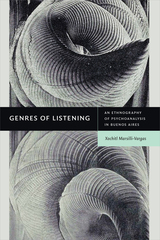 Genres of Listening: An Ethnography of Psychoanalysis in Buenos Aires
Xochitl Marsilli-Vargas
Duke University Press, 2022 In Genres of Listening Xochitl Marsilli-Vargas explores a unique culture of listening and communicating in Buenos Aires. She traces how psychoanalytic listening circulates beyond the clinical setting to become a central element of social interaction and cultural production in the city that has the highest number of practicing psychologists and psychoanalysts in the world. Marsilli-Vargas develops the concept of genres of listening to demonstrate that hearers listen differently, depending on where, how, and to whom they are listening. In particular, she focuses on psychoanalytic listening as a specific genre. Porteños (citizens of Buenos Aires) have developed a “psychoanalytic ear” that emerges during conversational encounters in everyday interactions in which participants offer different interpretations of the hidden meaning the words carry. Marsilli-Vargas does not analyze these interpretations as impositions or interruptions but as productive exchanges. By outlining how psychoanalytic listening operates as a genre, Marsilli-Vargas opens up ways to imagine other modes of listening and forms of social interaction.
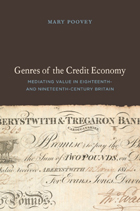 Genres of the Credit Economy: Mediating Value in Eighteenth- and Nineteenth-Century Britain
Mary Poovey
University of Chicago Press, 2008 How did banking, borrowing, investing, and even losing money—in other words, participating in the modern financial system—come to seem likeroutine activities of everydaylife? Genres of the Credit Economy addressesthis question by examining the history of financial instruments and representations of finance in eighteenth- and nineteenth-century Britain.
Chronicling the process by which some of our most important conceptual categories were naturalized, Mary Poovey explores complex relationships among forms of writing that are not usually viewed together, from bills of exchange and bank checks, to realist novels and Romantic poems, to economic theory and financial journalism. Taking up all early forms of financial and monetarywriting, Poovey argues that these genres mediated for early modern Britons the operations of a market system organized around credit and debt. By arguing that genre is a critical tool for historical and theoretical analysis and an agent in the events that formed the modern world, Poovey offers a new way to appreciate the character of the credit economy and demonstrates the contribution historians and literary scholars can make to understanding its operations.
Much more than an exploration of writing on and around money, Genres of the Credit Economy offers startling insights about the evolution of disciplines and the separation of factual and fictional genres.
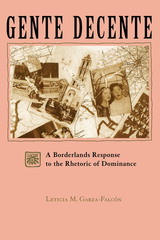 Gente Decente: A Borderlands Response to the Rhetoric of Dominance
By Leticia Magda Garza-Falcón
University of Texas Press, 1998 In his books The Great Plains, The Great Frontier, and The Texas Rangers, historian Walter Prescott Webb created an enduring image of fearless, white, Anglo male settlers and lawmen bringing civilization to an American Southwest plagued with "savage" Indians and Mexicans. So popular was Webb's vision that it influenced generations of historians and artists in all media and effectively silenced the counter-narratives that Mexican American writers and historians were concurrently producing to claim their standing as "gente decente," people of worth. These counter-narratives form the subject of Leticia M. Garza-Falcón's study. She explores how prominent writers of Mexican descent-such as Jovita González, Américo Paredes, María Cristina Mena, Fermina Guerra, Beatriz de la Garza, and Helena María Viramontes -have used literature to respond to the dominative history of the United States, which offered retrospective justification for expansionist policies in the Southwest and South Texas. Garza-Falcón shows how these counter-narratives capture a body of knowledge and experience excluded from "official" histories, whose "facts" often emerged more from literary techniques than from objective analysis of historical data.
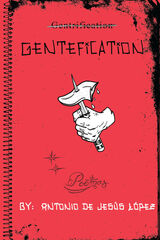 Gentefication
Antonio de Jesús López
Four Way Books, 2021 “Gentefication” nuances Latinidad as not just an immigration question, but an academic one. It deals with Latinx death not as the literal passing
of bodies, but as first tied with language. It asks, what are the hauntings of a tongue that is repeatedly told, ‘one must learn English in order to succeed in this country’? What is the psychological trauma deployed not by right-wing bigots, but of white liberal institutions that give scholarships to Latinx students, but nevertheless prop up white supremacy by viewing their payments as charity? How do Latinx students become complicit in this tokenizing? “Gentefication” wrestles with this ‘survivor’s guilt’ of higher education, of feeling as if you’re the only one among your homies that ‘made it.’ And in an American moment dealing with scandals across multiple universities this work is a timely intervention that advocates for first-generation audiences, for readers of color, and for all those vested in the protracted struggle for our fair shot.
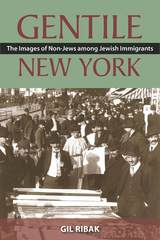 Gentile New York: The Images of Non-Jews among Jewish Immigrants
Ribak, Gil
Rutgers University Press, 2012 The very question of “what do Jews think about the goyim” has fascinated Jews and Gentiles, anti-Semites and philo-Semites alike. Much has been written about immigrant Jews in nineteenth- and twentieth-century New York City, but Gil Ribak’s critical look at the origins of Jewish liberalism in America provides a more complicated and nuanced picture of the Americanization process. Gentile New York examines these newcomers’ evolving feelings toward non-Jews through four critical decades in the American Jewish experience. Ribak considers how they perceived Gentiles in general as well as such different groups as “Yankees” (a common term for WASPs in many Yiddish sources), Germans, Irish, Italians, Poles, and African Americans. As they discovered the complexity of America’s racial relations, the immigrants found themselves at odds with “white” American values or behavior and were drawn instead into cooperative relationships with other minorities. Sparked with many previously unknown anecdotes, quotations, and events, Ribak’s research relies on an impressive number of memoirs, autobiographies, novels, newspapers, and journals culled from both sides of the Atlantic.
The Gentle Art of Murder: The Detective Fiction of Agatha Christie
Earl F. Bargainnier
University of Wisconsin Press, 1980 This study of the technique of Agatha Christie’s detective fiction—sixty-seven novels and over one hundred short stories—is the first extensive analysis of her accomplishment as a writer. Earl F. Bargannier demonstrates that Christie thoroughly understood the conventions of her genre and, with seemingly inexhaustible ingenuity, was able to develop for more than fifty years surprising variations within those conventions.
Gentle Flame: The Life and Verse of Dudley, Fourth Lord North
Dale B. J. Randall
Duke University Press, 1983 Gentle Flame recounts the life and presents for the first time the hitherto unknown poetry of Dudley, Fourth Lord North. Born during the reign of Elizabeth I, reared in that of James I, elected to Parliament under Charles I, and retired to his country seat during the time of Charles II, the life an poetry of the Fourth Lord North deepens present-day understanding of an age that saw much social change.
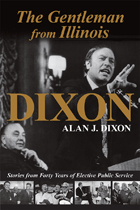 The Gentleman from Illinois: Stories from Forty Years of Elective Public Service
Alan J. Dixon
Southern Illinois University Press, 2013 In 1993, Alan J. Dixon’s political career came to an end with a defeat—the first one in his forty-three years of elected service. Beginning his legislative career in 1950 as a Democrat in the Illinois House of Representatives, Dixon also served in the Illinois State Senate, worked as state treasurer and secretary of state, and concluded his political career as a U.S. senator. The Gentleman from Illinois is an insider’s account of Illinois politics in the second half of the twentieth century, providing readers with fascinating stories about the people he encountered and events he participated in and witnessed during his four decades of service. With a degree of candor often unheard of in political memoirs, The Gentleman from Illinois reveals Dixon’s abilities as a storyteller. At times chatty and self-effacing, Dixon pulls no punches when it comes to detailing the personalities of major political figures—such as Mayor Richard J. Daley, Adlai Stevenson, Paul Simon, and presidents of the United States. Indeed, he uses this same honest approach when examining himself, fully describing the setbacks and embarrassing moments that peppered his own life. As a moderate Democrat who regularly crossed party lines in his voting and his views, Dixon also shares his thoughts on the proper way to run a government, the difficulties of passing legislation, the balancing act required to be a statewide official, and other valuable observations on local, state, and national politics. Full of behind-the-scenes insights presented in 121 short vignettes, The Gentleman from Illinois entertains as much as it informs, making it a necessary book for everyone interested in Illinois politics.
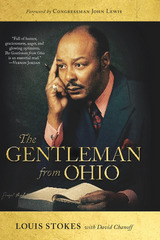 The Gentleman from Ohio
Louis Stokes with David Chanoff
Ohio State University Press, 2016 Louis Stokes was a giant in Ohio politics and one of the most significant figures in the U.S. Congress in recent times. When he arrived in the House of Representatives as a freshman in 1969, there were only six African Americans serving. By the time he retired thirty years later, he had chaired the House Special Committee on the Kennedy and King assassinations, the House Ethics Committee during Abscam, and the House Intelligence Committee during Iran-Contra; he was also a senior member of the powerful House Appropriations Committee.
Prior to Louis Stokes’s tenure in Congress he served for many years as a criminal defense lawyer and chairman of the Cleveland NAACP Legal Redress Committee. Among the Supreme Court Cases he argued, the Terry “Stop and Frisk” case is regarded as one of the twenty-five most significant cases in the court’s history. The Gentleman from Ohio chronicles this and other momentous events in the life and legacy of Ohio’s first black representative—a man who, whether in law or politics, continually fought for the principles he believed in and helped lead the way for African Americans in the world of mainstream American politics.
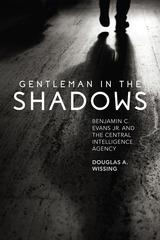 Gentleman in the Shadows: Benjamin C. Evans Jr. and the Central Intelligence Agency
Douglas A. Wissing
Indiana Historical Society Press, 2019 Gentleman in the Shadows is a biography of Benjamin C. Evans Jr., a Central Intelligence Agency executive who operated at the top levels of the U.S. intelligence community during the darkest days of the Cold War. After serving as a covert case officer in revolutionary Havana, Cuba, and then managing The Asia Foundation, a sprawling CIA front organization, Evans was promoted to the CIA headquarters’ seventh floor, where the executive directorate team managed world-changing intelligence missions. A socially adept administrator, Evans was the CIA Executive Secretary for seven Directors of Central Intelligence under four presidential administrations. Evans was part of the tumultuous period that included America’s crusade to democratize Occupied Japan, the Korean War, nuclear standoffs with the Soviet Union, the anti-Castro counterrevolutionary movement that climaxed in the Bay of Pigs invasion, the Vietnam War, Watergate, and the Family Jewels furor after the CIA’s dirty secrets were revealed. Through his marriage, Evans was a member of America’s elite, which figured so prominently in the U.S. intelligence services. Born and raised in a prosperous family in Crawfordsville, Indiana, Evans was imbued with conservative Hoosier values that celebrated servant-leadership. Following his graduation from the U.S. Military Academy at West Point, Evans’s social savvy and encultured mores stood him in good stead in Occupied Japan, where he served as aide-de-camp to General Eugene Harrison, a decorated World War II intelligence officer and Occupation administrator. It was in Occupied Japan that Evans and the general’s stepdaughter, Jan King, fell in love, and later married. When President Harry Truman recognized he needed a foreign intelligence service, General Harrison was on the commission that established what came to be the CIA. Not too many years later, Harrison and his cohorts insured that his son-in-law Evans, by then a respected military intelligence officer, was offered a position in the agency.CIA families not uncommonly led double lives of sequestered thoughts, unasked questions, and intimate deception. An empathetic family man, Evans paid a psychological price for his emotionally isolated life in the clandestine service.Gentleman in the Shadows is a biography of Benjamin C. Evans Jr., a Central Intelligence Agency executive who operated at the top levels of the U.S. intelligence community during the darkest days of the Cold War. After serving as a covert case officer in revolutionary Havana, Cuba, and then managing The Asia Foundation, a sprawling CIA front organization, Evans was promoted to the CIA headquarters’ seventh floor, where the executive directorate team managed world-changing intelligence missions. A socially adept administrator, Evans was the CIA Executive Secretary for seven Directors of Central Intelligence under four presidential administrations. Evans was part of the tumultuous period that included America’s crusade to democratize Occupied Japan, the Korean War, nuclear standoffs with the Soviet Union, the anti-Castro counterrevolutionary movement that climaxed in the Bay of Pigs invasion, the Vietnam War, Watergate, and the Family Jewels furor after the CIA’s dirty secrets were revealed. Through his marriage, Evans was a member of America’s elite, which figured so prominently in the U.S. intelligence services. Born and raised in a prosperous family in Crawfordsville, Indiana, Evans was imbued with conservative Hoosier values that celebrated servant-leadership. Following his graduation from the U.S. Military Academy at West Point, Evans’s social savvy and encultured mores stood him in good stead in Occupied Japan, where he served as aide-de-camp to General Eugene Harrison, a decorated World War II intelligence officer and Occupation administrator. It was in Occupied Japan that Evans and the general’s stepdaughter, Jan King, fell in love, and later married. When President Harry Truman recognized he needed a foreign intelligence service, General Harrison was on the commission that established what came to be the CIA. Not too many years later, Harrison and his cohorts insured that his son-in-law Evans, by then a respected military intelligence officer, was offered a position in the agency.CIA families not uncommonly led double lives of sequestered thoughts, unasked questions, and intimate deception. An empathetic family man, Evans paid a psychological price for his emotionally isolated life in the clandestine service.
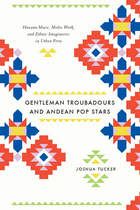 Gentleman Troubadours and Andean Pop Stars: Huayno Music, Media Work, and Ethnic Imaginaries in Urban Peru
Joshua Tucker
University of Chicago Press, 2013 Exploring Peru’s lively music industry and the studio producers, radio DJs, and program directors that drive it, Gentleman Troubadours and Andean Pop Stars is a fascinating account of the deliberate development of artistic taste. Focusing on popular huayno music and the ways it has been promoted to Peru’s emerging middle class, Joshua Tucker tells a complex story of identity making and the marketing forces entangled with it, providing crucial insights into the dynamics among art, class, and ethnicity that reach far beyond the Andes. Tucker focuses on the music of Ayacucho, Peru, examining how media workers and intellectuals there transformed the city’s huayno music into the country’s most popular style. By marketing contemporary huayno against its traditional counterpart, these agents, Tucker argues, have paradoxically reinforced ethnic hierarchies at the same time that they have challenged them. Navigating between a burgeoning Andean bourgeoisie and a music industry eager to sell them symbols of newfound sophistication, Gentleman Troubadours and Andean Pop Stars is a deep account of the real people behind cultural change.
 Gentlemen Bankers: The World of J. P. Morgan
Susie J. Pak
Harvard University Press, 2013 Gentlemen Bankers investigates the social and economic circles of one of America’s most renowned and influential financiers to uncover how the Morgan family’s power and prestige stemmed from its unique position within a network of local and international relationships.
At the turn of the twentieth century, private banking was a personal enterprise in which business relationships were a statement of identity and reputation. In an era when ethnic and religious differences were pronounced and anti-Semitism was prevalent, Anglo-American and German-Jewish elite bankers lived in their respective cordoned communities, seldom interacting with one another outside the business realm. Ironically, the tacit agreement to maintain separate social spheres made it easier to cooperate in purely financial matters on Wall Street. But as Susie Pak demonstrates, the Morgans’ exceptional relationship with the German-Jewish investment bank Kuhn, Loeb & Co., their strongest competitor and also an important collaborator, was entangled in ways that went far beyond the pursuit of mutual profitability.
Delving into the archives of many Morgan partners and legacies, Gentlemen Bankers draws on never-before published letters and testimony to tell a closely focused story of how economic and political interests intersected with personal rivalries and friendships among the Wall Street aristocracy during the first half of the twentieth century.
 Gentlemen of the Woods: Manhood, Myth, and the American Lumberjack
Willa Hammitt Brown
University of Minnesota Press, 2025 Lumberjacks: the men, the myth, and the making of an American legend
The folk hero Paul Bunyan, burly, bearded, wielding his big ax, stands astride the story of the upper Midwest—a manly symbol of the labor that cleared the vast north woods for the march of industrialization while somehow also maintaining an aura of pristine nature. This idea, celebrated in popular culture with songs and folktales, receives a long overdue and thoroughly revealing correction in Gentlemen of the Woods, a cultural history of the life and lore of the real lumberjack and his true place in American history. Now recalled as heroes of wilderness and masculinity, lumberjacks in their own time were despised as amoral transients. Willa Hammitt Brown shows that nineteenth-century jacks defined their communities of itinerant workers by metrics of manhood that were abhorrent to the residents of the nearby Northwoods boomtowns, valuing risk-taking and skill rather than restraint and control. Reviewing songs, stories, and firsthand accounts from loggers, Brown brings to life the activities and experiences of the lumberjacks as they moved from camp to camp. She contrasts this view with the popular image cultivated by retreating lumber companies that had to sell off utterly barren land. This mythologized image glorified the lumberjack and evoked a kindly, flannel-wearing, naturalist hero. Along with its portrait of lumberjack life and its analysis of the creation of lumberjack myth, Gentlemen of the Woods offers new insight into the intersections of race and social class in the logging enterprise, considering the actual and perceived roles of outsider lumberjacks and Native inhabitants of the northern forests. Anchored in the dual forces of capitalism and colonization, this lively and compulsively readable account offers a new way to understand a myth and history that has long captured our collective imagination.
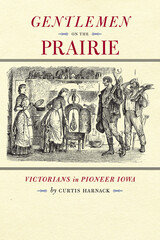 Gentlemen on the Prairie: Victorians in Pioneer Iowa
Harnack, Curtis
University of Iowa Press, 1985 @font-face { font-family: "Palatino";}@font-face { font-family: "?????? Pro W3";}p.MsoNormal, li.MsoNormal, div.MsoNormal { margin: 0in 0in 0.0001pt; font-size: 12pt; font-family: "Times New Roman"; }p.FreeForm, li.FreeForm, div.FreeForm { margin: 0in 0in 0.0001pt; font-size: 12pt; font-family: "Times New Roman"; color: black; }div.Section1 { page: Section1; } In the 1880s, the well-connected young Englishman William B. Close and his three brothers, having bought thousands of acres of northwest Iowa prairie, conceived the idea of enticing sons of Britain’s upper classes to pursue the life of the landed gentry on these fertile acres. “Yesterday a wilderness, today an empire”: their bizarre experiment, which created a colony for people “of the better class” who were not in line to inherit land but whose fathers would set them up in farming, flourished in Le Mars, Iowa (and later in Pipestone, Minnesota), with over five hundred youths having a go at farming. In Gentlemen on the Prairie, Curtis Harnack tells the remarkable story of this quite unusual chapter in the settling of the Midwest. Many of these immigrants had no interest in American citizenship but enjoyed or endured the challenging adventure of remaining part of the empire while stranded on the plains. They didn’t mix socially with other Le Mars area residents but enjoyed such sports as horse racing, fox hunts, polo, and an annual derby followed by a glittering grand ball. Their pubs were named the House of Lords, the House of Commons, and Windsor Castle; the Prairie Club was a replica of a London gentlemen’s club, an opera house attracted traveling shows, and their principal hotel was Albion House. In St. George’s Episcopal Church, prayers were offered for the well-being of Queen Victoria. Problems soon surfaced, however, even for these well-heeled aristocrats. The chief problem was farm labor; there was no native population to exploit, and immigrant workers soon bought their own land. Although sisters might visit the colonists and sometimes marry one of them, appropriate female companionship was scarce. The climate was brutal in its extremes, and many colonists soon sold their acres at a profit and moved to countries affiliated with Britain. When the financial depression in the early 1890s lowered land values and made agriculture less profitable, the colony collapsed. Harnack skillfully draws upon the founder’s “Prairie Journal,” company ledgers, and other records to create an engaging, engrossing story of this quixotic pioneering experiment.
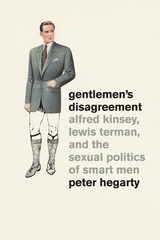 Gentlemen's Disagreement: Alfred Kinsey, Lewis Terman, and the Sexual Politics of Smart Men
Peter Hegarty
University of Chicago Press, 2013 What is the relationship between intelligence and sex? In recent decades, studies of the controversial histories of both intelligence testing and of human sexuality in the United States have been increasingly common—and hotly debated. But rarely have the intersections of these histories been examined. In Gentlemen’s Disagreement, Peter Hegarty enters this historical debate by recalling the debate between Lewis Terman—the intellect who championed the testing of intelligence— and pioneering sex researcher Alfred Kinsey, and shows how intelligence and sexuality have interacted in American psychology. Through a fluent discussion of intellectually gifted onanists, unhappily married men, queer geniuses, lonely frontiersmen, religious ascetics, and the two scholars themselves, Hegarty traces the origins of Terman’s complaints about Kinsey’s work to show how the intelligence testing movement was much more concerned with sexuality than we might remember. And, drawing on Foucault, Hegarty reconciles these legendary figures by showing how intelligence and sexuality in early American psychology and sexology were intertwined then and remain so to this day.
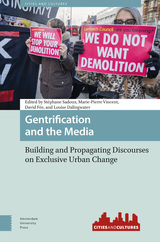 Gentrification and the Media: Building and Propagating Discourses on Exclusive Urban Change
Stéphane Sadoux
Amsterdam University Press, 2025 Gentrification is extensively discussed in the media, where coverage can describe changing neighbourhoods and analyse the causes and consequences of such change. The media are also arenas in which the voices of those who advocate or resist gentrification can be heard. How can this profusion of content be examined? What methods can be used to critically address the role of the media in constructing and propagating discourses on gentrification? Central to this book is the idea that new research should engage with the theoretical and methodological issues that emerge when media products are used as a corpus to study gentrification.
This edited volume considers a range of means that are used to shape and publicize representations: contributions investigate printed and online newspapers, websites, blogs, television programmes and social media. It also aims to highlight the diversity of players who produce and disseminate media discourses on gentrification.
Gentrification Down the Shore
Molly Vollman Makris
Rutgers University Press, 2021 Makris and Gatta engage in a rich ethnographic investigation of Asbury Park to better understand the connection between jobs and seasonal gentrification and the experiences of longtime residents in this beach-community city. They demonstrate how the racial inequality in the founding of Asbury Park is reverberating a century later. This book tells an important and nuanced tale of gentrification using an intersectional lens to examine the history of race relations, the too often overlooked history of the postindustrial city, the role of the LGBTQ population, barriers to employment and access to amenities, and the role of developers as the city rapidly changes. Makris and Gatta draw on in-depth interviews, focus groups, ethnographic observation, as well as data analysis to tell the reader a story of life on the West Side of Asbury Park as the East Side prospers and to point to a potential path forward.
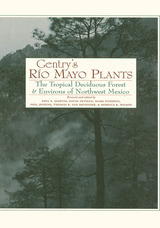 Gentry's Rio Mayo Plants: The Tropical Deciduous Forest and Environs of Northwest Mexico
Revised and Edited by Paul S. Martin, David Yetman, Mark Fishbein, Phil Jenkins, Thomas R. Van Devender, and Rebecca K. Wilson
University of Arizona Press, 1998 The Río Mayo region of northwestern Mexico is a major geographic area whose natural history remains poorly known to outsiders. Lying in a region where desert and tropical, northern and southern, and continental and coastal species converge, it boasts an abundance of flora first documented by Howard Scott Gentry in 1942 in a book now widely regarded as a classic of botanical literature. This new book updates and amends Gentry's Río Mayo Plants. Undertaken with Gentry's support and participation before his death in 1993, it reproduces the original text, which appears here with annotations, and contains information on over 2,800 taxa—more than twice the 1,200 species first described by Gentry. The annotated list of plants includes information on distribution, habitat, appearance, common names, and indigenous uses. A new introduction provides historical background and a review of geography and vegetation. It also describes changes to the land and river wrought by agricultural development, expanded grazing, and lumbering. Throughout the text, the authors have endeavored to provide information on Río Mayo vegetation while emphasizing local knowledge and use of plants, to preserve Gentry's field-oriented focus, and to present botanical information with Gentry's exuberance and style. Río Mayo Plants has long stood as a book that displays a scientist's love of the English language, his fondness for native peoples, and his eye for beauty in nature. This updating of that work fills a gap in the botanical literature of this portion of North America and will be useful not only for botanists but also for biogeographers, taxonomists, land managers, and conservationists.
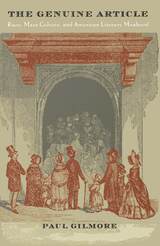 The Genuine Article: Race, Mass Culture, and American Literary Manhood
Paul Gilmore
Duke University Press, 2001 In The Genuine Article Paul Gilmore examines the interdependence of literary and mass culture at a crucial moment in U. S. history. Demonstrating from a new perspective the centrality of race to the construction of white manhood across class lines, Gilmore argues that in the years before the Civil War, as literature increasingly became another commodity in the capitalist cultural marketplace, American authors appropriated middle-brow and racially loaded cultural forms to bolster their masculinity.
From characters in Indian melodramas and minstrel shows to exhibits in popular museums and daguerrotype galleries, primitive racialized figures circulated as “the genuine article” of manliness in the antebellum United States. Gilmore argues that these figures were manipulated, translated, and adopted not only by canonical authors such as Hawthorne, Thoreau, Cooper, and Melville but also by African American and Native American writers like William Wells Brown and Okah Tubbee. By examining how these cultural notions of race played out in literary texts and helped to construct authorship as a masculine profession, Gilmore makes a unique contribution to theories of class formation in nineteenth-century America.
The Genuine Article will enrich students and scholars of American studies, gender studies, literature, history, sociology, anthropology, popular culture, and race.
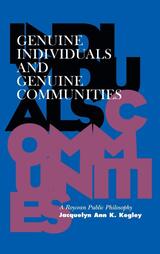 Genuine Individuals and Genuine Communities: A Roycean Public Philosophy
Jacqueline Ann K. Kegley
Vanderbilt University Press, 1997 A cogent blueprint for the development of a "public philosophy" that integrates shared principles and values into our troubled social structure and articulates a consensus vision of society's future. The continuing vitality of American thought stems, to a large extent, from the application of its historical roots embedded in contemporary problems and issues. Yet for some time the signal contributions of Josiah Royce (1855-1916) have been overlooked in the formulation and shaping of critical areas of public policy. In this brilliantly articulated new book, ethicist Jacquelyn Kegley carefully explicates and enlarges the scope of Roycean thought and shows that Royce's views on public philosophy have direct and valuable application to current social problems. Working from the assumption that issues of family, education, and health care are not merely exigent political tempests but areas of genuine, long-lasting concern, Kegley opens fresh perspectives on Royce's philosophy by introducing and applying his ideas to discussions of how we care for ourselves and our society today. She analyzes Roycean criteria that can be successfully used to nourish developmental stages within families, promote intellectual and social growth in schooling and scholarship, and sustain physical and mental well-being throughout the life cycle. Genuine Individuals and Genuine Communities should be a springboard for the reassessment of contemporary public policy and the reapplication of the American philosophical legacy to current issues and decisions. Kegley's work serves as a solid contribution both to public philosophy and to the continued vitality of American thought, and it extends the range of both.
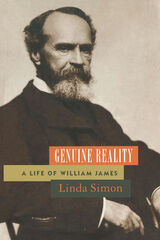 Genuine Reality: A Life of William James
Linda Simon
University of Chicago Press, 1999 Intellectual rebel, romantic pragmatist, aristocratic pluralist, William James was both a towering figure of the nineteenth century and a harbinger of the twentieth. Drawing on a wide range of sources, including 1,500 letters between James and his wife, acclaimed biographer Linda Simon creates an intimate portrait of this multifaceted and contradictory man. Exploring James's irrepressible family, his diverse friends, and the cultural and political forces to which he so energetically responded, Simon weaves the many threads of William James's life into a genuine, and vibrant, reality.
"William James . . . has never seemed so vulnerably human as in Linda Simon's biography. . . . [S]he vivifies James in such a way that his life and thought come freshly alive for the modern reader."—David S. Reynolds, New York Times Book Review
"Superb. . . . Genuine Reality is recommended reading for all soul-searchers."—George Gurley, Chicago Tribune
"Ms. Simon . . . has provided an ideal pathway for James's striding. . . . [Y]ou become engaged in his struggles as if they were your own."—Christopher Lehmann-Haupt, New York Times
"[A]n excellent narrative biography at once sensitively told and lucidly written."—John Patrick Diggins, Wall Street Journal
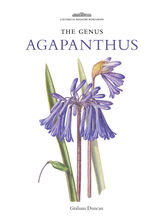 The Genus Agapanthus
Graham Duncan
Royal Botanic Gardens, Kew, 2021 An in-depth guide to a plant group prized for its vivid blue hue.
Renowned for its stunning blue flowers, agapanthus—sometimes known as the blue lily or lily of the Nile—is a group of rhizomatous plants native to southern Africa. First cultivated in the Netherlands in the late seventeenth century, it rose to prominence as a conservatory plant in England during the eighteenth and nineteenth centuries after certain varieties were found to be hardy enough to withstand the colder climate of the British Isles. Graham Duncan’s The Genus Agapanthus provides both a revised classification of this plant group and a superbly illustrated celebration of their unique beauty. Featuring new watercolors from South African artist Elbe Joubert and color photographs showing the species in their spectacular and varied natural habitats, the book also highlights a selection of more than 150 of the most notable agapanthus cultivars from growers across Europe, Africa, and Oceania. The agapanthus’s natural history is spotlighted as well, with comprehensive descriptions of each species, maps of their global distribution, and information on how to successfully cultivate, propagate, and care for them. This book’s blend of science, horticulture, and art makes it essential for all varieties of plant lovers.
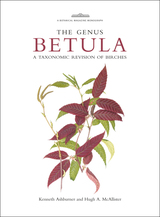 The Genus Betula: A Taxonomic Revision of Birches
Kenneth Ashburner and Hugh McAllister
Royal Botanic Gardens, Kew, 2013 The stunning Betula, or birch trees, are notoriously difficult to identify despite being one of the major contributors to the beautiful fall foliage famous in eastern North America. With many wrongly named birches appearing in nurseries and arboreta, this new book, the first ever written on the genus, is an important and much-needed work.
The Genus Betula covers all known birches found in North America, Europe, and Asia, along with keys for accurate identification. Chapters include a look at the breeding, cultivation, conservation, and morphology of all species, including several little-known species wonderful for garden and landscape use. The authors present previously unpublished data on recent molecular work and fossils, providing a cytotaxonomic and phylogeographic revision of the Betula genus. The book is accompanied by exquisite specimens of botanical art, including full-color paintings by Josephine Hague, making it a valuable tool for arboriculturists as well as professional and amateur gardeners.
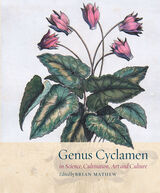 Genus Cyclamen: In Science, Cultivation, Art and Culture
Edited by Brian Mathew
Royal Botanic Gardens, Kew, 2013 The Cyclamen is a literary and artistic darling, decorating ceramics, pottery, and jewelry, and found in botanical art references dating back to the first century. It is also a favorite of gardeners, growers, and botanists due to its extraordinary capacity for variation, in colors, shapes, fragrances, and flowering periods.
Genus Cyclamen is a celebration of this remarkable plant. Its science-based emphasis on botany and cultivation is complemented by sections on art and history, including twenty-five newly commissioned paintings and over seven hundred photographs. It provides a wealth of information, including taxonomic descriptions, flowering periods, distribution, and habitat, all based on the deep knowledge and practical experiences of the Cyclamen Society and other cyclamen experts. This book will find a wide audience of growers, gardeners, botanists, and enthusiasts, thanks to its all-encompassing coverage of the cyclamen and its informative, but accessible style.
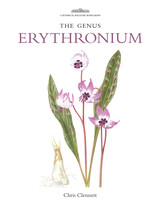 The Genus Erythronium
Chris Clennet
Royal Botanic Gardens, Kew, 2014
The Erythronium is a seemingly delicate perennial with a decidedly wild touch. Its recurved petals are often described as “tooth-like” and at times seem to be caught in a dramatic dive toward the ground. Long appreciated for their bright reds and yellows, their easy cultivation, and even their use as a food, these woodland plants are finding growing popularity in North America. The Genus Erythronium is the first dedicated monograph on the plant and will be the authority for botanists, gardeners, growers, and breeders everywhere.
The Genus Erythronium details all twenty-nine currently identified species, all based on the most current research, including brand-new information on morphology and DNA. Captivating botanical illustrations and photographs fill the book and an extensive key allows easy identification of each species. Chapters covering phytogeography, morphology, cultivation, and conservation, as well as guidance on rating plants, come together to make this an essential, comprehensive volume.
The Genus Lachenalia
Graham Duncan
Royal Botanic Gardens, Kew, 2012 This is the first complete and illustrated monograph of the genus Lachenalia, a horticulturally important and botanically diverse plant group. The relatively small number of Lachenalia species that have been cultivated worldwide are known for their exceptionally showy blooms and fascinating leaves, and for emitting distinctive aromas ranging from spicy to sweet to the distinct scent of coconut, in the case of one species. The horticultural potential of the genus has yet to be fully realized, and many more species await introduction into cultivation. All species in this volume are described, classified, and illustrated, and are accompanied by detailed information on their history, morphology, phylogeny, phytogeography, pollination biology, cultivation, and propagation.
The Genus Lesquerella (Cruciferae) in North America
Reed C. Rollins and Elizabeth A. Shaw
Harvard University Press, 1973 The need for a new monographic treatment of the genus Lesquerella (mustard family) has been evident for many years. Authors Reed Rollins and Elizabeth Shaw summarize three decades of field, greenhouse, and herbarium research in this detailed study of the North American species of the genus, including L. arctica. They cover sixty-nine species and twenty-nine infraspecific taxa that range in occurrence from the arctic to southern Mexico. Nearly sixty photographs and maps document their text.
The Genus Macaranga - a Prodromus
Timothy C. Whitmore
Royal Botanic Gardens, Kew, 2008 Macaranga is a genus in the family Euphorbiaceae, comprising trees, treelets and some lianas - many of which are conspicuous large-leafed pioneers of disturbed habitats. There are 257 species, of which 21 are newly described in this work. Although at its most diverse in South East Asia and New Guinea, the genus also occurs in Africa and Madagascar, continental Asia, the Pacific Islands, and Australia. The book allows for ready identification of all species via both regional keys and keys within informal species groups. Twenty-five species are illustrated.
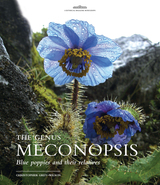 The Genus Meconopsis: Blue poppies and their relatives
Christopher Grey-Wilson
Royal Botanic Gardens, Kew, 2015 The Himalayan Blue Poppy is a bit of a perennial diva. Spotted in the wild, it turns heads and catches reverent attention, but it is also notoriously fickle, requiring careful cultivation and often refusing to flourish in most climates below 10,000 feet. Together with the other colorful species of the Meconopsis genus, they are some of the most distinctive and most sought-after members of the poppy family.
The Genus Meconopsis is the first major revision of the genus since 1934 and the only monograph on the genus in existence. This fully revised text incorporates the discovery of nearly thirty new species with decades of new scholarship. The book is extensively illustrated with striking color photographs and botanical paintings. Species descriptions that include habitat and variation within the genus, as well as detailed distribution maps, make this ideal for botanists, horticulturalists, and gardeners alike.
Genus Sorbus: mountain ash and other rowans
Hugh McAllister
Royal Botanic Gardens, Kew, 2005 Varying from tiny mountain shrubs to tall trees, there is a rowan suitable for every garden. Dr McAllister has 25 years of knowledge and experience in growing rowans, and in this book describes over 60 visually striking species, including recent introductions from China. The re-appraisal of classification, evolutionary history, ecology and conservation will bring botanists up to date on latest research, while sections on propagation and cultivation will prove invaluable to gardeners, nurserymen and horticulturists. Eighteen full-page paintings by the renowned artist Josephine Hague, and over 100 colour photographs, illustrate the text.
The Genus Tulipa: Tulips of the World
Diana Everett
Royal Botanic Gardens, Kew, 2013 Beloved for their eye-popping colors that often mark the arrival of spring, tulips are a perennial favorite. The Genus Tulipa combines the latest scientific research with beautiful and useful illustrations, creating a visual delight as fascinating as the flowers themselves. Each species is fully illustrated with botanical paintings, color photographs of the plants in habitat, and distribution maps. In addition, the experts of the Royal Botanic Gardens, Kew, lend their prowess to chapters on everything from cultivation to classification. Checklists of tulip species and their world-wide synonyms, nursery and buying information, and a glossary with diagrams round out this comprehensive guide.
Genus Utricularia: a taxonomic monograph
P. G. Taylor
Royal Botanic Gardens, Kew, 1989 The definitive monograph on these intriguing aquatic carnivorous plants. Each of the 214 species described is superbly illustrated with a full-page line drawing.
 GenXegesis: Essays on Alternative Youth (Sub)Culture
John M. Ulrich
University of Wisconsin Press, 2003 Although most people think "Generation X" is a recently coined label for the post–Baby Boom generation, since the early 1950s the phrase has signified a seemingly identity-less group of young people trying to define themselves within an uncertain, even hostile world. GenXegesis: Essays on Alternative Youth (Sub)Culture is the first collection of critical essays on Generation X.
Resituating the term in its neglected (sub)cultural context, the contributors offer a critical assessment of the "Generation X" phenomenon and its relation to the fashioning of differing identities within and against the mainstream. The essays explore a variety of topics, including punk subculture, alternative music, reality television, postmodernism, and the Internet. Together, the contributors share a refreshingly self-conscious approach to Generation X’s precarious, often paradoxical position as an alternative to the mainstream. This collection will be enjoyed by scholars, graduate and undergraduate students, and anyone interested in popular culture, including Gen-Xers themselves.
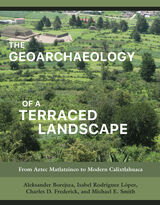 The Geoarchaeology of a Terraced Landscape: From Aztec Matlatzinco to Modern Calixtlahuaca
Aleksander Borejsza, Isabel Rodríguez López, Charles D. Frederick, and Michael E. Smith
University of Utah Press, 2021 The toil of several million peasant farmers in Aztec Mexico transformed lakebeds and mountainsides into a checkerboard of highly productive fields. This book charts the changing fortunes of one Aztec settlement and its terraced landscapes from the twelfth to the twenty-first century. It also follows the progress and missteps of a team of archaeologists as they pieced together this story.
Working at a settlement in the Toluca Valley of central Mexico, the authors used fieldwalking, excavation, soil and artifact analyses, maps, aerial photos, land deeds, and litigation records to reconstruct the changing landscape through time. Exploiting the methodologies and techniques of several disciplines, they bring context to eight centuries of the region’s agrarian history, exploring the effects of the Aztec and Spanish Empires, reform, and revolution on the physical shape of the Mexican countryside and the livelihoods of its people. Accessible to specialists and nonspecialists alike, this well-illustrated and well-organized volume provides a step-by-step guide that can be applied to the study of terraced landscapes anywhere in the world.
The four authors share an interest in terraced landscapes and have worked together and on their own on a variety of archaeological projects in Mesoamerica, the Mediterranean, Poland, and the United Kingdom.
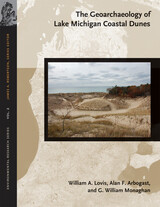 The Geoarchaeology of Lake Michigan Coastal Dunes
William A. Lovis, Alan F. Arbogast, and G. William Monaghan
Michigan State University Press, 2012 Complex sets of environmental factors have interacted over the past 5,000 years to affect how changes in climate, temperature, relative precipitation, and the levels of Lake Michigan influence the preservation of archaeological sites in coastal sand dunes along Lake Michigan. As a collaboration between earth scientists, archaeologists, and geoarchaeologists, this study draws on a wealth of research and multidisciplinary insights to explore the conditions necessary to safeguard ancient human settlements in these landscapes. A variety of contemporary and innovative techniques, including numerous dating methods and approaches, were employed to determine when and for how long sand dunes were active and when and for how long archaeological sites were occupied. Knowledge of dune processes and settlement patterns not only affects archaeological interpretations, but it is also consummately important to land planners responsible for managing heritage archaeological sites in the Lake Michigan coastal zone.
The Geoarchaeology of Whitewater Draw, Arizona
Michael R. Waters
University of Arizona Press, 1986 The Anthropological Papers of the University of Arizona is a peer-reviewed monograph series sponsored by the School of Anthropology. Established in 1959, the series publishes archaeological and ethnographic papers that use contemporary method and theory to investigate problems of anthropological importance in the southwestern United States, Mexico, and related areas.
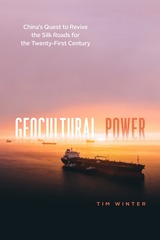 Geocultural Power: China's Quest to Revive the Silk Roads for the Twenty-First Century
Tim Winter
University of Chicago Press, 2019 Launched in 2013, China's Belt and Road Initiative is forging connections in infrastructure, trade, energy, finance, tourism, and culture across Eurasia and Africa. This extraordinarily ambitious strategy places China at the center of a geography of overland and maritime connectivity stretching across more than sixty countries and incorporating almost two-thirds of the world’s population. But what does it mean to revive the Silk Roads for the twenty-first century?
Geocultural Power explores this question by considering how China is couching its strategy for building trade, foreign relations, and energy and political security in an evocative topography of history. Until now Belt and Road has been discussed as a geopolitical and geoeconomic project. This book introduces geocultural power to the analysis of international affairs. Tim Winter highlights how many countries—including Iran, Sri Lanka, Kenya, Malaysia, Indonesia, Pakistan, and others—are revisiting their histories to find points of diplomatic and cultural connection. Through the revived Silk Roads, China becomes the new author of Eurasian history and the architect of the bridge between East and West. In a diplomatic dance of forgetting, episodes of violence, invasion, and bloodshed are left behind for a language of history and heritage that crosses borders in ways that further the trade ambitions of an increasingly networked China-driven economy.
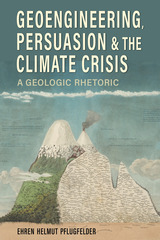 Geoengineering, Persuasion, and the Climate Crisis: A Geologic Rhetoric
Ehren Helmut Pflugfelder
University of Alabama Press, 2023 A rhetorical exploration of an underexamined side of climate change—the ongoing research into and development of geoengineering strategies
Geoengineering, Persuasion, and the Climate Crisis: A Geologic Rhetoric exposes the deeply worrying state of discourse over geoengineering—the intentional manipulation of the earth’s climate as means to halt or reverse global warming. These climate-altering projects, which range from cloud-whitening to carbon dioxide removal and from stratospheric aerosol injection to enhanced weathering, are all technological solutions to more complex geosocial problems.
Geoengineering represents one of the most alarming forms of deliberative discourse in the twenty-first century. Yet geoengineering could easily generate as much harm as the environmental traumas it seeks to cure. Complicating these deliberations is the scarcity of public discussion. Most deliberations transpire within policy groups, behind the closed doors of climate-oriented startups, between subject-matter experts at scientific conferences, or in the disciplinary jargon of research journals. Further, much of this conversation occurs primarily in the West.
Ehren Helmut Pflugfelder makes clear how the deliberative rhetorical strategies coming from geoengineering advocates have been largely deceptive, hegemonic, deterministic, and exploitative. In this volume, he investigates how geoengineering proponents marshal geologic actors into their arguments—and how current discourse could lead to a greater exploitation of the earth in the future.
Pflugfelder’s goal is to understand the structure, content, purpose, and effect of these discourses, raise the alarm about their deliberative directions, and help us rethink our approach to the climate. In highlighting both the inherent problems of the discourses and the ways geologic rhetoric can be made productive, he attempts to give “the geologic” a place at the table to better understand the roles that all earth systems continue to play in our lives, now and for years to come.
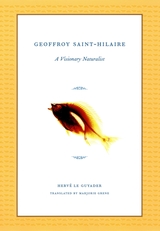 Geoffroy Saint-Hilaire: A Visionary Naturalist
Herve Le Guyader
University of Chicago Press, 2003 A professor at twenty-one and member of the Napoleon's Egyptian expedition at twenty-six, Geoffroy Saint-Hilaire was a man of one idea, which he formulated when he was twenty-four. Nature, he thought, had formed all living beings with one single plan.
This was a revolutionary idea—and one vigorously opposed by Geoffroy's colleague Georges Cuvier, a great anatomist and one of the giants of French science. In 1830, their long-running disagreement erupted into furious public debate. Geoffroy argued that all vertebrates shared the same basic body plan not just with each other but with insects as well. Cuvier strenuously disputed this idea, which he saw as tantamount to a belief in "transformism"—arguing instead that each species had its own special and permanent form.
With Geoffroy Saint-Hilaire, Hervé Le Guyader provides an analysis not only of that infamous debate but also of Geoffroy's bold intuitions about anatomy and development. Featuring Geoffroy's published version of the 1830 debates—translated into English for the first time—the book also illustrates how Geoffroy's prescient insights foreshadowed some of the most recent discoveries in evolutionary and developmental biology.
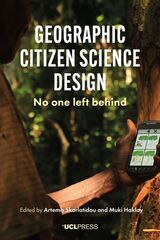 Geographic Citizen Science Design: No One Left Behind
Edited by Artemis Skarlatidou and Muki Haklay
University College London, 2020 A selection of case studies in the field of geographic citizen science casting insight on future research.
Unbeknownst to them as they made their scientific discoveries, Isaac Newton, Charles Darwin, and other “gentlemen scientists” would later inspire a field of scientific practice and innovation known as citizen science. Today, the growth and availability of citizen science projects have been substantial, as anyone can now contribute to a scientific discipline without professional qualifications. As a subset of this movement, geographic citizen science presents a unique approach towards supporting the participation of everyday citizens in the collection, analysis, and dissemination of scientific data. This book presents a selection of wide-ranging case studies that provide insights into the design, interaction barriers, and lessons learned from a diverse set of participants. The volume captures the current status of research and development of geographic citizen science, providing critical insight to inform technological innovation and future research in this area.
 Geographic Medicine for the Practitioner: Algorithms in the Diagnosis and Management of Exotic Diseases
Kenneth D. Warren and Adel A. F. Mahmoud
University of Chicago Press, 1978 "The many diseases that are endemic in most of the developing nations of the world (and that may also affect travelers to these regions) are, at world levels, the most important sources of morbidity that affect the entire human race. The change in morbidity patterns in the more developed nations should not be permitted to blind the more affluent countries to the implications of this simple statement. Thus, direct and useful guides are needed to assure efficient and economical diagnosis and treatment of those infections that are endemic to the less affluent two-thirds of the earth.
"The algorithms in this book have been developed by Drs. Warren and Mahmoud, as the result of a systematic effort to produce such guides. The book is presented as another in the series "Studies in Infectious Disease Research" and is a most welcome addition, certain to supply a major and hitherto inadequately fulfilled need."—from the Foreword, by Edward H. Kass, M. D., Ph.D
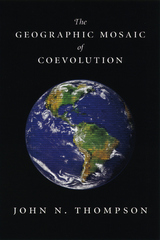 The Geographic Mosaic of Coevolution
John N. Thompson
University of Chicago Press, 2005 Coevolution—reciprocal evolutionary change in interacting species driven by natural selection—is one of the most important ecological and genetic processes organizing the earth's biodiversity: most plants and animals require coevolved interactions with other species to survive and reproduce. The Geographic Mosaic of Coevolution analyzes how the biology of species provides the raw material for long-term coevolution, evaluates how local coadaptation forms the basic module of coevolutionary change, and explores how the coevolutionary process reshapes locally coevolving interactions across the earth's constantly changing landscapes.
Picking up where his influential The Coevolutionary Process left off, John N. Thompsonsynthesizes the state of a rapidly developing science that integrates approaches from evolutionary ecology, population genetics, phylogeography, systematics, evolutionary biochemistry and physiology, and molecular biology. Using models, data, and hypotheses to develop a complete conceptual framework, Thompson also draws on examples from a wide range of taxa and environments, illustrating the expanding breadth and depth of research in coevolutionary biology.
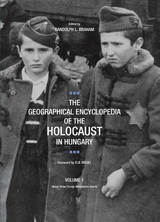 The Geographical Encyclopedia of the Holocaust in Hungary
Randolph L. Braham, Foreword by Elie Wiesel
Northwestern University Press, 2013 Winner of the 2013 National Jewish Book Award
The illustrated three-volume Geographical Encyclopedia of the Holocaust in Hungary is a definitive, authoritative, and magisterial resource, thorough and exhaustive. It documents and chronicles the wartime fate of the Jewish communities in that country where virulent antisemitism is anything but dead, even today. With scores of detailed maps and hundreds of photographs, this reference work is organized alphabetically by county, each prefaced with a map and a contextual history describing its Jewish population up to and into 1944.
Entries track the demographic, cultural, and religious changes in even the smallest communities where Jews lived before their marginalization, dispossession, ghettoization, and, finally, deportation to labor and death camps. The encyclopedia endows scholars and lay researchers with both panoramic and microscopic views of the virtually last-minute destruction of most of the Jews of Hungary, until then the last sizable surviving Jewish community in occupied Europe.
Geographical Identities Of Ethnic America: Race, Space, And Place
Kate A. Berry
University of Nevada Press, 2001 Twenty distinguished geographers examine the ways in which place fashions, recreates, and contextualizes human identity in North America. This volume discusses themes of population and habitat, displacement and circulation, resources and economic survival, through the experiences of several ethnic minorities. It covers such topics as Samoan communities in urban Southern California, South Asian migration to Canada, Native American health-care systems, and public housing for African Americans. Supported by statistical tables and graphs, maps, and photos that reflect a wide range of theoretical and historical approaches, the essays examine such topics as immigration, housing, and landscapes, complemented with discussions of religious ceremonies, women and marriage-mate selection, resource conflicts, health care, and social networking.
The Geographical Imagination in America, 1880-1950
Susan Schulten
University of Chicago Press, 2001 In this rich and fascinating history, Susan Schulten tells a story of Americans beginning to see the world around them, tracing U.S. attitudes toward world geography from the end of nineteenth-century exploration to the explosion of geographic interest before the dawn of the Cold War. Focusing her examination on four influential institutions—maps and atlases, the National Geographic Society, the American university, and public schools—Schulten provides an engaging study of geography, cartography, and their place in popular culture, politics, and education.
Geographical Sources of Ming-Qing History
Timothy Brook
University of Michigan Press, 2002 First published in 1988 in response to the growing need for documentation concerning local history in the late imperial period, Geographical Sources provides bibliographical data regarding two distinct genres: route books, and topographical and institutional gazetteers. In its second edition, this essential research tool has been completely revised and expanded with close to one hundred new entries, which provide complete coverage of these important sources for research in Chinese social, cultural, and religious history. The separate introductions to the two genres introduce the student to the history and uses of these materials. In addition to providing bibliographic data and noting variant editions, each entry provides locations where a work or its later editions can be found, whether in North America, Europe, China, or Japan.
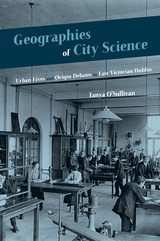 Geographies of City Science: Urban Life and Origin Debates in Late Victorian Dublin
Tanya O'Sullivan
University of Pittsburgh Press, 2019
Dublin at the turn of the twentieth century was both the second city of the British Empire and the soon-to-be capital of an emerging nation, presenting a unique space in which to examine the past relationship between science and the city. Drawing on both geography and biography, Geographies of City Science underscores the crucial role urban spaces played in the production of scientific knowledge. Each chapter explores the lives of two practitioners from one of the main religious and political traditions in Dublin (either Protestant and Unionist or Catholic and Nationalist). As Tanya O’Sullivan argues, any variation in their engagement with science had far less to do with their affiliations than with their “life spaces”—domains where human agency and social structures collide. Focusing on nineteenth-century debates on the origins of the universe as well as the origins of form, humans, and language, O’Sullivan explores the numerous ways in which scientific meaning relating to origin theories was established and mobilized in the city. By foregrounding Dublin, her book complements more recent attempts to enrich the historiography of metropolitan science by examining its provenance in less well-known urban centers.
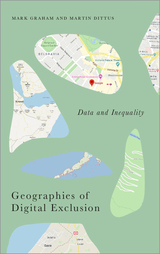 Geographies of Digital Exclusion: Data and Inequality
Mark Graham
Pluto Press, 2021 Today's urban environments are layered with data and algorithms that fundamentally shape how we perceive and move through space. But are our digitally dense environments continuing to amplify inequalities rather than alleviate them? This book looks at the key contours of information inequality, and who, what and where gets left out. Platforms like Google Maps and Wikipedia have become important gateways to understanding the world, and yet they are characterized by significant gaps and biases, often driven by processes of exclusion. As a result, their digital augmentations tend to be refractions rather than reflections: they highlight only some facets of the world at the expense of others. This doesn't mean that more equitable futures aren't possible. By outlining the mechanisms through which our digital and material worlds intersect, the authors conclude with a roadmap for what alternative digital geographies might look like.
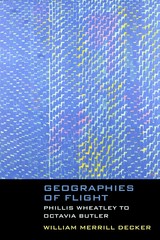 Geographies of Flight: Phillis Wheatley to Octavia Butler
William Merrill Decker
Northwestern University Press, 2020 African American writing commonly represents New World topography as a set of entrapments, contesting the open horizons, westward expansion, and individual freedom characteristic of the white, Eurocentric literary tradition. Geographies of Flight: Phillis Wheatley to Octavia Butler provides the first comprehensive treatment of the ways in which African American authors across three centuries have confronted the predicament of inhabiting space under conditions of bondage and structural oppression. William Merrill Decker examines how, in testifying to those conditions, fourteen black authors have sought to transform a national cartography that, well into the twenty-first century, reflects white supremacist assumptions. These writers question the spatial dimensions of a mythic American liberty and develop countergeographies in which descendants of the African diaspora lay claim to the America they have materially and culturally created. Tracking the testimonial voice in a range of literary genres, Geographies of Flight explores themes of placement and mobility in the work of Phillis Wheatley, Olaudah Equiano, David Walker, Frederick Douglass, Harriet Jacobs, Booker T. Washington, Ida B. Wells-Barnett, W. E. B. Du Bois, Richard Wright, Ralph Ellison, Malcolm X, James Baldwin, Toni Morrison, and Octavia Butler.
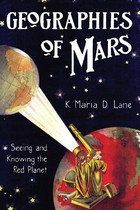 Geographies of Mars: Seeing and Knowing the Red Planet
K. Maria D. Lane
University of Chicago Press, 2011 A highly original exploration of geography’s spatial dimensions at the beginning of the twentieth century, offering a new view of the mapping of far-off worlds.
One of the first maps of Mars, published by an Italian astronomer in 1877, with its pattern of canals, fueled belief in intelligent life forms on the distant red planet—a hope that continued into the 1960s. Although the Martian canals have long since been dismissed as a famous error in the history of science, K. Maria D. Lane argues that there was nothing accidental about these early interpretations. Indeed, she argues, the construction of Mars as an incomprehensibly complex and engineered world both reflected and challenged dominant geopolitical themes during a time of major cultural, intellectual, political, and economic transition in the Western world.
Geographies of Mars telescopes in on a critical period in the development of the geographical imagination, when European imperialism was at its zenith and American expansionism had begun in earnest. Astronomers working in the new observatories of the American Southwest or in the remote heights of the South American Andes were inspired, Lane finds, by their own physical surroundings and used representations of the Earth’s arid landscapes to establish credibility for their observations of Mars. With this simple shift to the geographer’s point of view, Lane deftly explains some of the most perplexing stances on Mars taken by familiar protagonists such as Percival Lowell, Alfred Russel Wallace, and Lester Frank Ward.
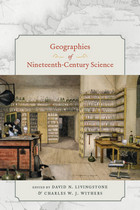 Geographies of Nineteenth-Century Science
Edited by David N. Livingstone and Charles W. J. Withers
University of Chicago Press, 2011 In Geographies of Nineteenth-Century Science, David N. Livingstone and Charles W. J. Withers gather essays that deftly navigate the spaces of science in this significant period and reveal how each is embedded in wider systems of meaning, authority, and identity. Chapters from a distinguished range of contributors explore the places of creation, the paths of knowledge transmission and reception, and the import of exchange networks at various scales. Studies range from the inspection of the places of London science, which show how different scientific sites operated different moral and epistemic economies, to the scrutiny of the ways in which the museum space of the Smithsonian Institution and the expansive space of the American West produced science and framed geographical understanding. This volume makes clear that the science of this era varied in its constitution and reputation in relation to place and personnel, in its nature by virtue of its different epistemic practices, in its audiences, and in the ways in which it was put to work.
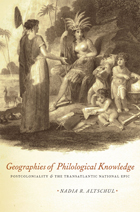 Geographies of Philological Knowledge: Postcoloniality and the Transatlantic National Epic
Nadia R. Altschul
University of Chicago Press, 2012 Geographies of Philological Knowledge examines the relationship between medievalism and colonialism in the nineteenth-century Hispanic American context through the striking case of the Creole Andrés Bello (1781–1865), a Venezuelan grammarian, editor, legal scholar, and politician, and his lifelong philological work on the medieval heroic narrative that would later become Spain’s national epic, the Poem of the Cid. Nadia R. Altschul combs Bello’s study of the poem and finds throughout it evidence of a “coloniality of knowledge.” Altschul reveals how, during the nineteenth century, the framework for philological scholarship established in and for core European nations—France, England, and especially Germany—was exported to Spain and Hispanic America as the proper way of doing medieval studies. She argues that the global designs of European philological scholarship are conspicuous in the domain of disciplinary historiography, especially when examining the local history of a Creole Hispanic American like Bello, who is neither fully European nor fully alien to European culture. Altschul likewise highlights Hispanic America’s intellectual internalization of coloniality and its understanding of itself as an extension of Europe. A timely example of interdisciplinary history, interconnected history, and transnational study, Geographies of Philological Knowledge breaks with previous nationalist and colonialist histories and thus forges a new path for the future of medieval studies.
 Geographies of Relation: Diasporas and Borderlands in the Americas
Theresa Delgadillo
University of Michigan Press, 2024 Geographies of Relation offers a new lens for examining diaspora and borderlands texts and performances that considers the inseparability of race, ethnicity, and gender in imagining and enacting social change. Theresa Delgadillo crosses interdisciplinary and canonical borders to investigate the interrelationships of African-descended Latinx and mestizx peoples through an analysis of Latin American, Latinx, and African American literature, film, and performance.
Not only does Delgadillo offer a rare extended analysis of Black Latinidades in Chicanx literature and theory, but she also considers over a century’s worth of literary, cinematic, and performative texts to support her argument about the significance of these cultural sites and overlaps. Chapters illuminate the significance of Toña La Negra in the Golden Age of Mexican cinema, reconsider feminist theorist Gloria Anzaldúa’s work in revising exclusionary Latin American ideologies of mestizaje, delve into the racial and gender frameworks Sandra Cisneros attempts to rewrite, unpack encounters between African Americans and Black Puerto Ricans in texts by James Baldwin and Marta Moreno Vega, explore the African diaspora in colonial and contemporary Peru through Daniel Alarcón’s literature and the documentary Soy Andina, and revisit the centrality of Black power in ending colonialism in Cuban narratives. Geographies of Relation demonstrates the long histories of networks and exchanges across the Americas as well as the interrelationships among Indigenous, Black, African American, mestizx, Chicanx, and Latinx peoples. It offers a compelling argument that geographies of relation are as significant as national frameworks in structuring cultural formation and change in this hemisphere.
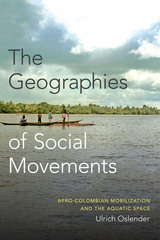 The Geographies of Social Movements: Afro-Colombian Mobilization and the Aquatic Space
Ulrich Oslender
Duke University Press, 2016 In The Geographies of Social Movements Ulrich Oslender proposes a critical place perspective to examine the activism of black communities in the lowland rain forest of Colombia's Pacific Coast region. Drawing on extensive ethnographic fieldwork in and around the town of Guapi, Oslender examines how the work of local community councils, which have organized around newly granted ethnic and land rights since the early 1990s, is anchored to space and place. Exploring how residents' social relationships are entangled with the region's rivers, streams, swamps, rain, and tides, Oslender argues that this "aquatic space"—his conceptualization of the mutually constitutive relationships between people and their rain forest environment—provides a local epistemology that has shaped the political process. Oslender demonstrates that social mobilization among Colombia's Pacific Coast black communities is best understood as emerging out of their place-based identity and environmental imaginaries. He argues that the critical place perspective proposed accounts more fully for the multiple, multiscalar, rooted, and networked experiences within social movements.
 Geographies of Solar Energy Transitions: Conflicts, Controversies and Cognate Aspects
Edited by Siddharth Sareen and Abigail Martin
University College London, 2024 An overdue criticism of large-scale solar energy adoption.
Solar energy is the world’s largest growing source of power. Recently, this energy transition has produced a series of cognate challenges and conflicts in diverse geographies, yielding effects far beyond electricity generation. Geographies of Solar Energy Transitions illustrates how solar energy governance—both state-based and market-driven—is evolving to address these conflicts. Throughout the book, leading energy scholars examine relevant case studies, drawing necessary attention to the multitude of issues with solar power use, including formulating new place-specific solar energy visions and strategies, financing specific deployment scales, expanding and replacing electricity infrastructure, accessing land, resolving conflicts with competing land uses, incorporating charging technologies for transport and storage, adopting flexible energy production/consumption relationships, displacing fossil fuel energy production with renewables, enabling new energy ownership models, and addressing environmental and social injustices across the value chain of solar expansion.
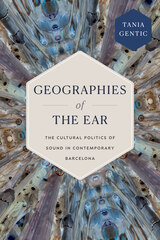 Geographies of the Ear: The Cultural Politics of Sound in Contemporary Barcelona
Tania Gentic
Duke University Press, 2025 In Geographies of the Ear, Tania Gentic examines the language and soundscape of post-Franco Barcelona to listen for the remnants of a globalized colonial ear. She theorizes “echoic memory” to understand how sound circulates from the past to the present—and from neighborhood to nation to globe—to trace how sonic practices produce and contest modernity, community identity, and democracy. Focusing on migrant and tourist accents, free radio stations, punk music, drag performances, and antigentrification protests, Gentic shows how the underground sounds in Barcelona complicate a modernizing aural imaginary of place. By thinking through the auralities present in literature, fanzines, comic books, documentary films, television and print media, popular music, public protests, and even everyday conversation, Gentic outlines the difficulties of considering the contemporary city as either the product of a monolingual national identity or a lived space easily circumscribed by geographical categories such as North, South, East, or West.
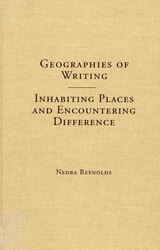 Geographies of Writing: Inhabiting Places and Encountering Difference
Nedra Reynolds
Southern Illinois University Press, 2004 Twenty-first-century technological innovations have revolutionized the way we experience space, causing an increased sense of fragmentation, danger, and placelessness. In Geographies of Writing: Inhabiting Places and Encountering Difference, Nedra Reynolds addresses these problems in the context of higher education, arguing that theories of writing and rhetoric must engage the metaphorical implications of place without ignoring materiality. Geographies of Writing makes three closely related contributions: one theoretical, to reimagine composing as spatial, material, and visual; one political, to understand the sociospatial construction of difference; and one pedagogical, to teach writing as a set of spatial practices. Aided by seven maps and illustrations that reinforce the book’s visual rhetoric, Geographies of Writing shows how composition tasks and electronic space function as conduits for navigating reality.
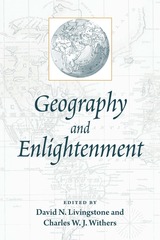 Geography and Enlightenment
Edited by David N. Livingstone and Charles W. J. Withers
University of Chicago Press, 1999 Geography and Enlightenment explores both the Enlightenment as a geographical phenomenon and the place of geography in the Enlightenment. From wide-ranging disciplinary and topical perspectives, contributors consider the many ways in which the world of the long eighteenth century was brought to view and shaped through map and text, exploration and argument, within and across spatial and intellectual borders.
The first set of chapters charts the intellectual and geographical contexts in which Enlightenment ideas began to form, including both the sites in which knowledge was created and discussed and the different means used to investigate the globe. Detailed explorations of maps created during this period show how these new ways of representing the world and its peoples influenced conceptions of the nature and progress of human societies, while studies of the travels of people and ideas reveal the influence of far-flung places on Enlightenment science and scientific credibility. The final set of chapters emphasizes the role of particular local contexts in Enlightenment thought.
Contributors are Michael T. Bravo, Paul Carter, Denis Cosgrove, Stephen Daniels, Matthew Edney, Anne Marie Claire Godlewska, Peter Gould, Michael Heffernan, David N. Livingstone, Dorinda Outram, Chris Philo, Roy Porter, Nicolaas Rupke, Susanne Seymour, Charles Watkins, and Charles W. J. Withers.
Geography and Ownership as Bases for Economic Accounting
Edited by Robert E. Baldwin, Robert E. Lipsey, and J. David Richardson
University of Chicago Press, 1998 Geography and Ownership as Bases for Economic Accounting provides a forum for leading specialists in trade and international economics to explore whether changes in the world economy have increased the usefulness of international accounts drawn up on the basis of ownership rather than on geography. The papers in this volume suggest that ownership-based national accounts are helpful in understanding trade and financial transactions among globalized enterprises. Individual chapters emphasize this perspective through accounting exercises, studies of individual countries, and studies of foreign direct investment and its relation to national economies.
This volume gives trade and international economists the data and resources to renew discussion of this timely issue.
Geography and Plays
Gertrude Stein; Introduction by Cyrena N. Pondrom
University of Wisconsin Press, 1993 Geography and Plays is a collection of Gertrude Stein’s writing from about 1908 to 1920. Originally published in 1922 with an introduction by Sherwood Anderson, it was almost inaccessible for many years. This edition makes it possible for students and other devotees of Stein to see the developing strategies of one of the acknowledged giants of literary modernism, whose pathbreaking departures in literary style have recently been assigned still greater importance in light of new theories about women’s writing. An introduction by Cyrena N. Pondrom provides contemporary readers with a fine orientation to the importance of Stein’s achievement in this early work.
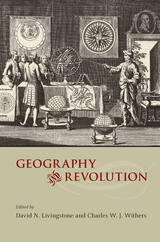 Geography and Revolution
Edited by David N. Livingstone and Charles W. J. Withers
University of Chicago Press, 2005 A term with myriad associations, revolution is commonly understood in its intellectual, historical, and sociopolitical contexts. Until now, almost no attention has been paid to revolution and questions of geography. Geography and Revolution examines the ways that place and space matter in a variety of revolutionary situations.
David N. Livingstone and Charles W. J. Withers assemble a set of essays that are themselves revolutionary in uncovering not only the geography of revolutions but the role of geography in revolutions. Here, scientific revolutions—Copernican, Newtonian, and Darwinian—ordinarily thought of as placeless, are revealed to be rooted in specific sites and spaces. Technical revolutions—the advent of print, time-keeping, and photography—emerge as inventions that transformed the world's order without homogenizing it. Political revolutions—in France, England, Germany, and the United States—are notable for their debates on the nature of political institutions and national identity.
Gathering insight from geographers, historians, and historians of science, Geography and Revolution is an invitation to take the where as seriously as the who and the when in examining the nature, shape, and location of revolutions.
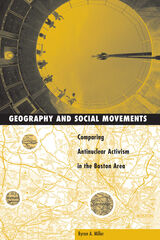 Geography And Social Movement: Comparing Antinuclear Activism in the Boston Area
Byron A. Miller
University of Minnesota Press, 2000 A comparative analysis of the implications of space, place, and scale in political mobilization. A comparative analysis of the implications of space, place, and scale in political mobilization. Context matters, as students of social movements increasingly agree, and yet very little attention has been paid to the role geography plays in activism. Geography and Social Movements corrects this oversight, bringing a geographical perspective to the study of social movements. Byron A. Miller directly addresses the implications of space, place, and scale in social movement mobilization, and then demonstrates their significance in a detailed comparative analysis of peace movements in three municipalities around Boston. In focusing on the Boston area-an old northeastern region, heavily industrialized with many companies working on military contracts, and also a center of education-Miller is able to explore how campaigns aimed at curbing nuclear arms operate within the cultural, political, social, and economic confines of particular places and spaces. He shows how the decisions and actions of local peace movement organizations played a central role in the movement’s successes and failures, and how local organizations had to respond to the differing class, race, and gender characteristics of different locales. Miller’s empirical analysis clearly demonstrates that geographic strategies for social movement organizations have direct consequences for the successes and failures of specific campaigns.
Geography, Demography, Cartography, Volume 49
Neil L. Whitehead, ed.
Duke University Press This special issue of Ethnohistory focuses on the ways in which the disciplines and methods of geography, demography and cartography are relevant and revealing for ethnohistorical analyses. Articles discuss culturally distinct views of landscapes and underline the importance of such concepts for the integrated study of the past. This issue also contains a radical and devastating re-evaluation of one of the fundamental ethnohistorical texts of the Americas—Bishop Landa's Relación de Las Cosas de Yucátan— which will change the landscape of ethnohistorical scholarship forever as this revered source is unmasked as a secondary compilation.
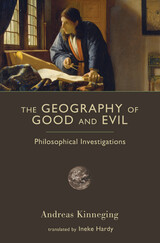 The Geography of Good and Evil: Philosophical Investigations
Andreas Kinneging
Intercollegiate Studies Institute, 2009
Do good and evil exist? Absolutely.
In this bracing book, the eminent Dutch philosopher Andreas Kinneging turns fashionable thinking on its head, revealing how good and evil are objective, universal, and unchanging—and how they must be rediscovered in our age.
In mapping the geography of good and evil, Kinneging reclaims, and reintroduces us to, the great tradition of ancient and Christian thought. Traditional wisdom enables us to address the eternal questions of good and evil that confront us in both public and private life. Though it is common to accept uncritically the blessings of modernity and its intellectual sources, the Enlightenment and Romanticism, Kinneging shows that traditional thinking is richer and more realistic. Indeed, we see how, in more than a few respects, the Enlightenment and Romanticism brought not progress but deterioration.
Kinneging skillfully reformulates and defends the insights of traditional thinking for today’s readers, demonstrating how an objective morality is to be understood and how we can know what morality demands of us. At a time when the traditional virtues have practically disappeared from our language (that is, all but one—“tolerance”), he lays out the foundations of virtue and vice. Ultimately, Kinneging reveals the lasting significance of these seemingly archaic notions—to our own lives, to our families, to our culture, and to civilization.
This profound, award-winning work establishes Andreas Kinneging as one of our wisest moral philosophers.
“Shows with utmost clarity the virtue of intellectual courage . . . A brilliant model for sallies against our dark age.”—The Intercollegiate Review
“[Kinneging is] leader of a conservative intellectual revival in the Netherlands.” —New York Times Magazine
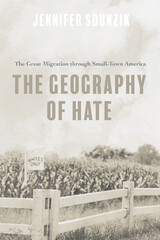 The Geography of Hate: The Great Migration through Small-Town America
Jennifer Sdunzik
University of Illinois Press, 2023 The uncomfortable truths that shaped small communities in the midwest During the Great Migration, Black Americans sought new lives in midwestern small towns only to confront the pervasive efforts of white residents determined to maintain their area’s preferred cultural and racial identity. Jennifer Sdunzik explores this widespread phenomenon by examining how it played out in one midwestern community. Sdunzik merges state and communal histories, interviews and analyses of population data, and spatial and ethnographic materials to create a rich public history that reclaims Black contributions and history. She also explores the conscious and unconscious white actions that all but erased Black Americans--and the terror and exclusion used against them--from the history of many midwestern communities. An innovative challenge to myth and perceived wisdom, The Geography of Hate reveals the socioeconomic, political, and cultural forces that prevailed in midwestern towns and helps explain the systemic racism and endemic nativism that remain entrenched in American life.
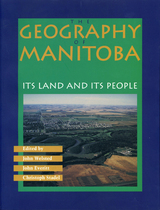 The Geography of Manitoba: Its Land and its People
John Welsted
University of Manitoba Press, 1996 Manitoba is more than one of Canada's three prairie provinces. Encompassing 649,950 square kilometres, its territory ranges from Canadian Shield to grassland, parkland, and subarctic tundra. Its physical geography has been shaped by ice-age glaciers, while its human geography reflects the influences of its various inhabitants, from the First Nations who began arriving over 9,000 years ago, to its most recent immigrants. This fascinating range of geographical elements has given Manitoba a distinct identity and makes it a unique area for study. Geography of Manitoba is the first comprehensive guide to all aspects of the human and physical geography of this unique province. Representing the work of 47 scholars, and illustrated with over 200 maps, diagrams, and photographs, it is divided into four main sections, covering the major areas of the province's geography: Physical Background; People and Settlements; Resources and Industry; and Recreation.As well as studying historical developments, the contributors to Geography of Manitoba analyse recent political and economic events in the province, including the effect of federal and provincial elections and international trade agreements. They also comment on future prospects for the province, considering areas as diverse as resource management and climatic trends.
The Geography of Neandertals and Modern Humans in Europe and the Greater Mediterranean
Ofer Bar-Yosef
Harvard University Press, 2000 During the Middle Paleolithic, various populations ancestral to modern Homo sapiens inhabited Africa, while Europe was homeland to the Neandertals. Recent archaeological investigations have provided data showing that the abrupt transition from the Middle to the Upper Neolithic, during which these populations met and interacted, was a fast-moving period of change for both groups.
In this volume, the expansion of modern humans and their impact on the populations of Neandertals in Europe, Western Asia, and Northern Africa is discussed in depth, with particular focus on the lithic industries of the late Middle and early Upper Paleolithic.
A Geography of New Jersey: The City in the Garden
Stansfield, Charles A.
Rutgers University Press, 1998 New Jersey is "the city in the garden." It is a bundle of paradoxes - a highly industrialized state famous for its seashore and mountain resorts; a fairly conservative state politically that nonetheless pioneered state land use, zoning, and environmental protection legislation. The only state to be characterized by the U.S. Census as entirely metropolitan, New Jersey has the highest population density in the nation. It is a highly suburbanized state that remains important agriculturally, one in which both very large and very small farms continue to multiply.
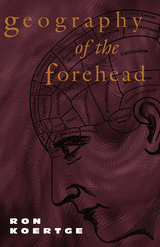 Geography of the Forehead
Ron Koertge
University of Arkansas Press, 2000 From short, acerbic lyrics to hilarious prose poems about nutty German professors and Dracula’s teenage girlfriend, readers laugh out loud at simple turns of phrase before they are jerked sober by startling insights into the way we live—and Koertge knows how we live. Nothing in American culture is safe from the scythe of his irony—not Joan Crawford, not Superman, nor Frank Sinatra. He lampoons our literary heroes and historical giants with the gentlest touch, and we find ourselves grinning before we realize that Koertge is redefining what we thought we knew. His poems are alternately funny or poignantly sad because they are always true, and that truth lingers long after the reading is over. In Geography of the Forehead, Ron Koertge offers us nearly sixty poems, each a brilliant testament to the human condition. “Though he has been writing his influential and highly original poems for many years,” Charles Harper Webb declares, “he is still something of a secret: a poet of dazzling wit, and surprising sweetness. With this collection, however, the secret is out.”
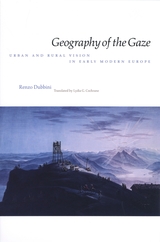 Geography of the Gaze: Urban and Rural Vision in Early Modern Europe
Renzo Dubbini
University of Chicago Press, 2002 Geography of the Gaze offers a new history and theory of how the way we look at things influences what we see. Focusing on Western Europe from the seventeenth to nineteenth centuries, Renzo Dubbini shows how developments in science, art, mapping, and visual epistemology affected the ways natural and artificial landscapes were perceived and portrayed.
He begins with the idea of the "view," explaining its role in the invention of landscape painting and in the definition of landscape as a cultural space. Among other topics, Dubbini explores how the descriptive and pictorial techniques used in mariners' charts, view-oriented atlases, military cartography, and garden design were linked to the proliferation of highly realistic paintings of landscapes and city scenes; how the "picturesque" system for defining and composing landscapes affected not just art but also archaeology and engineering; and how the ever-changing modern cityscapes inspired new ways of seeing and representing the urban scene in Impressionist painting, photography, and stereoscopy. A marvelous history of viewing, Geography of the Gaze will interest everyone from scientists to artists.
The Geography of Water
Mary Emerick
University of Alaska Press, 2015 In this exquisite debut novel, Mary Emerick takes readers into the watery landscape of southeast Alaska and the depths of a family in crisis.
An abusive father and a broken home forces a teenage Winnie to seek the safety of a neighboring bay and a pair of unlikely father figures. Years later her mother goes missing, and Winnie returns to the hunting and fishing lodge she grew up in to find the world she knew gone. Her once-powerful father disfigured by a bear attack. Her childhood hero revealed as merely human. And her mother’s story rewritten by a stray note.
As Winnie uses the help of friends to sort out the details of her mother’s final exodus, she finds herself pulled into a murky swirl of family secrets and devastating revelations. As the search heads higher into the mountains, Winnie must learn to depend on her own strength in order to reach the one she loves.
The Geography of Wisconsin
John A. Cross and Kazimierz J. Zaniewski
University of Wisconsin Press, 2022 This accessible survey of Wisconsin geography is sure to delight scholars, students, and enthusiasts alike. A beautiful array of nearly 250 photographs and easy-to-read maps illustrate key geographical concepts and structures, such as: - physical features: bedrock geology, glaciation, landforms, soils, climate, and vegetation
- cultural landscapes: population density, ethnic populations, demographics, and political affiliations
- economic activity: agriculture, forestry, mining, manufacturing, transportation, recreation, and tourism
Aware that geography is shaped as much by settlement patterns and people as by geology and weather, John A. Cross and Kazimierz J. Zaniewski have created an up-to-date and authoritative overview of the Dairy State's lands and life. The Geography of Wisconsin will remain a valuable reference for decades to come.
Geography, Resources and Environment, Volume 1: Selected Writings of Gilbert F. White
Edited by Robert W. Kates and Ian Burton
University of Chicago Press, 1986 Gilbert F. White is the preeminent geographer of natural resources, hazards, and the human environment. During fifty years of professional work as civil servant, scientist, and educator, he authored numerous books and papers. This volume is the first collection of White's work, spanning his interests and career from 1934 to 1984. Individual introductions by the editors place each selection in historical perspective and assay its significance. With the companion volume, Theme from the Work of Gilbert F. White, White's writings, and the work that he inspired, are now readily accessible to all who share his concern for the stewardship of the earth.
Geography, Resources and Environment, Volume 2: Themes from the Work of Gilbert F. White
Edited by Robert W. Kates and Ian Burton
University of Chicago Press, 1986 Over the course of half a century, Gilbert F. White's work has served to shape and, in several instances, establish many of the fields that have come to be known as the environmental sciences. In this collection of original essays, a companion volume to White's selected writings (volume I), leading scholars in areas such as water supply, environmental hazards, and natural resource management interpret changes in these fields since White's work and assess present and future problems. With volume 1, this collection presents a complete and cogent picture of Gilbert White's contribution and the work he inspired.
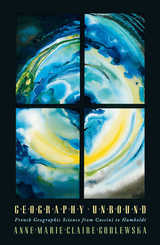 Geography Unbound: French Geographic Science from Cassini to Humboldt
Anne Marie Claire Godlewska
University of Chicago Press, 1999 At the end of the eighteenth century, French geographers faced a crisis. Though they had previously been ranked among the most highly regarded scientists in Europe, they suddenly found themselves directionless and disrespected because they were unable to adapt their descriptive focus easily to the new emphasis on theory and explanation sweeping through other disciplines.
Anne Godlewska examines this crisis, the often conservative reactions of geographers to it, and the work of researchers at the margins of the field who helped chart its future course. She tells her story partly through the lives and careers of individuals, from the deposed cabinet geographer Cassini IV to Volney, von Humboldt, and Letronne (innovators in human, physical, and historical geography), and partly through the institutions with which they were associated such as the Encyclopédie and the Jesuit and military colleges.
Geography Unbound presents an insightful portrait of a crucial period in the development of modern geography, whose unstable disciplinary status is still very much an issue today.
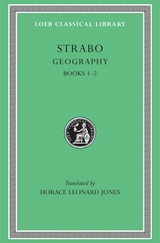 Geography, Volume I: Books 1–2
Strabo
Harvard University Press The ecumene in prose.
Strabo (ca. 64 BC to ca. AD 25), an Asiatic Greek of Amasia in Pontus, studied at Nysa and after 44 BC at Rome. He became a keen traveler who saw a large part of Italy, various near eastern regions including the Black Sea, various parts of Asia Minor, Egypt as far as Ethiopia, and parts of Greece. He was a long time in Alexandria where he no doubt studied mathematics, astronomy, and history.
Strabo’s historical work is lost, but his most important Geography in seventeen books has survived. After two introductory books, numbers 3 and 4 deal with Spain and Gaul, 5 and 6 with Italy and Sicily, 7 with north and east Europe, 8–10 with Greek lands, 11–14 with the main regions of Asia and with Asia Minor, 15 with India and Iran, 16 with Assyria, Babylonia, Syria, and Arabia, 17 with Egypt and Africa. In outline he follows the great mathematical geographer Eratosthenes, but adds general descriptions of separate countries including physical, political, and historical details. A sequel to his historical memoirs, Geography is planned apparently for public servants rather than students—hence the accounts of physical features and of natural products. On the mathematical side it is an invaluable source of information about Eratosthenes, Hipparchus, and Posidonius.
The Loeb Classical Library edition of Strabo is in eight volumes.
 Geography, Volume II: Books 3–5
Strabo
Harvard University Press The ecumene in prose.
Strabo (ca. 64 BC to ca. AD 25), an Asiatic Greek of Amasia in Pontus, studied at Nysa and after 44 BC at Rome. He became a keen traveler who saw a large part of Italy, various near eastern regions including the Black Sea, various parts of Asia Minor, Egypt as far as Ethiopia, and parts of Greece. He was a long time in Alexandria where he no doubt studied mathematics, astronomy, and history.
Strabo’s historical work is lost, but his most important Geography in seventeen books has survived. After two introductory books, numbers 3 and 4 deal with Spain and Gaul, 5 and 6 with Italy and Sicily, 7 with north and east Europe, 8–10 with Greek lands, 11–14 with the main regions of Asia and with Asia Minor, 15 with India and Iran, 16 with Assyria, Babylonia, Syria, and Arabia, 17 with Egypt and Africa. In outline he follows the great mathematical geographer Eratosthenes, but adds general descriptions of separate countries including physical, political, and historical details. A sequel to his historical memoirs, Geography is planned apparently for public servants rather than students—hence the accounts of physical features and of natural products. On the mathematical side it is an invaluable source of information about Eratosthenes, Hipparchus, and Posidonius.
The Loeb Classical Library edition of Strabo is in eight volumes.
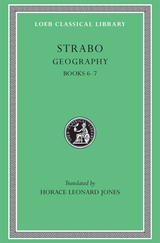 Geography, Volume III: Books 6–7
Strabo
Harvard University Press The ecumene in prose.
Strabo (ca. 64 BC to ca. AD 25), an Asiatic Greek of Amasia in Pontus, studied at Nysa and after 44 BC at Rome. He became a keen traveler who saw a large part of Italy, various near eastern regions including the Black Sea, various parts of Asia Minor, Egypt as far as Ethiopia, and parts of Greece. He was a long time in Alexandria where he no doubt studied mathematics, astronomy, and history.
Strabo’s historical work is lost, but his most important Geography in seventeen books has survived. After two introductory books, numbers 3 and 4 deal with Spain and Gaul, 5 and 6 with Italy and Sicily, 7 with north and east Europe, 8–10 with Greek lands, 11–14 with the main regions of Asia and with Asia Minor, 15 with India and Iran, 16 with Assyria, Babylonia, Syria, and Arabia, 17 with Egypt and Africa. In outline he follows the great mathematical geographer Eratosthenes, but adds general descriptions of separate countries including physical, political, and historical details. A sequel to his historical memoirs, Geography is planned apparently for public servants rather than students—hence the accounts of physical features and of natural products. On the mathematical side it is an invaluable source of information about Eratosthenes, Hipparchus, and Posidonius.
The Loeb Classical Library edition of Strabo is in eight volumes.
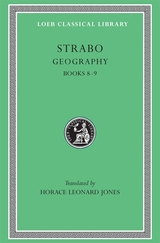 Geography, Volume IV: Books 8–9
Strabo
Harvard University Press The ecumene in prose.
Strabo (ca. 64 BC to ca. AD 25), an Asiatic Greek of Amasia in Pontus, studied at Nysa and after 44 BC at Rome. He became a keen traveler who saw a large part of Italy, various near eastern regions including the Black Sea, various parts of Asia Minor, Egypt as far as Ethiopia, and parts of Greece. He was a long time in Alexandria where he no doubt studied mathematics, astronomy, and history.
Strabo’s historical work is lost, but his most important Geography in seventeen books has survived. After two introductory books, numbers 3 and 4 deal with Spain and Gaul, 5 and 6 with Italy and Sicily, 7 with north and east Europe, 8–10 with Greek lands, 11–14 with the main regions of Asia and with Asia Minor, 15 with India and Iran, 16 with Assyria, Babylonia, Syria, and Arabia, 17 with Egypt and Africa. In outline he follows the great mathematical geographer Eratosthenes, but adds general descriptions of separate countries including physical, political, and historical details. A sequel to his historical memoirs, Geography is planned apparently for public servants rather than students—hence the accounts of physical features and of natural products. On the mathematical side it is an invaluable source of information about Eratosthenes, Hipparchus, and Posidonius.
The Loeb Classical Library edition of Strabo is in eight volumes.
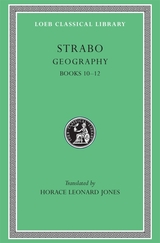 Geography, Volume V: Books 10–12
Strabo
Harvard University Press The ecumene in prose.
Strabo (ca. 64 BC to ca. AD 25), an Asiatic Greek of Amasia in Pontus, studied at Nysa and after 44 BC at Rome. He became a keen traveler who saw a large part of Italy, various near eastern regions including the Black Sea, various parts of Asia Minor, Egypt as far as Ethiopia, and parts of Greece. He was a long time in Alexandria where he no doubt studied mathematics, astronomy, and history.
Strabo’s historical work is lost, but his most important Geography in seventeen books has survived. After two introductory books, numbers 3 and 4 deal with Spain and Gaul, 5 and 6 with Italy and Sicily, 7 with north and east Europe, 8–10 with Greek lands, 11–14 with the main regions of Asia and with Asia Minor, 15 with India and Iran, 16 with Assyria, Babylonia, Syria, and Arabia, 17 with Egypt and Africa. In outline he follows the great mathematical geographer Eratosthenes, but adds general descriptions of separate countries including physical, political, and historical details. A sequel to his historical memoirs, Geography is planned apparently for public servants rather than students—hence the accounts of physical features and of natural products. On the mathematical side it is an invaluable source of information about Eratosthenes, Hipparchus, and Posidonius.
The Loeb Classical Library edition of Strabo is in eight volumes.
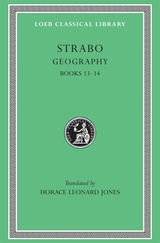 Geography, Volume VI: Books 13–14
Strabo
Harvard University Press The ecumene in prose.
Strabo (ca. 64 BC to ca. AD 25), an Asiatic Greek of Amasia in Pontus, studied at Nysa and after 44 BC at Rome. He became a keen traveler who saw a large part of Italy, various near eastern regions including the Black Sea, various parts of Asia Minor, Egypt as far as Ethiopia, and parts of Greece. He was a long time in Alexandria where he no doubt studied mathematics, astronomy, and history.
Strabo’s historical work is lost, but his most important Geography in seventeen books has survived. After two introductory books, numbers 3 and 4 deal with Spain and Gaul, 5 and 6 with Italy and Sicily, 7 with north and east Europe, 8–10 with Greek lands, 11–14 with the main regions of Asia and with Asia Minor, 15 with India and Iran, 16 with Assyria, Babylonia, Syria, and Arabia, 17 with Egypt and Africa. In outline he follows the great mathematical geographer Eratosthenes, but adds general descriptions of separate countries including physical, political, and historical details. A sequel to his historical memoirs, Geography is planned apparently for public servants rather than students—hence the accounts of physical features and of natural products. On the mathematical side it is an invaluable source of information about Eratosthenes, Hipparchus, and Posidonius.
The Loeb Classical Library edition of Strabo is in eight volumes.
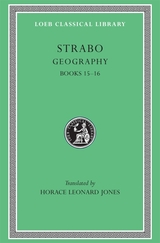 Geography, Volume VII: Books 15–16
Strabo
Harvard University Press The ecumene in prose.
Strabo (ca. 64 BC to ca. AD 25), an Asiatic Greek of Amasia in Pontus, studied at Nysa and after 44 BC at Rome. He became a keen traveler who saw a large part of Italy, various near eastern regions including the Black Sea, various parts of Asia Minor, Egypt as far as Ethiopia, and parts of Greece. He was a long time in Alexandria where he no doubt studied mathematics, astronomy, and history.
Strabo’s historical work is lost, but his most important Geography in seventeen books has survived. After two introductory books, numbers 3 and 4 deal with Spain and Gaul, 5 and 6 with Italy and Sicily, 7 with north and east Europe, 8–10 with Greek lands, 11–14 with the main regions of Asia and with Asia Minor, 15 with India and Iran, 16 with Assyria, Babylonia, Syria, and Arabia, 17 with Egypt and Africa. In outline he follows the great mathematical geographer Eratosthenes, but adds general descriptions of separate countries including physical, political, and historical details. A sequel to his historical memoirs, Geography is planned apparently for public servants rather than students—hence the accounts of physical features and of natural products. On the mathematical side it is an invaluable source of information about Eratosthenes, Hipparchus, and Posidonius.
The Loeb Classical Library edition of Strabo is in eight volumes.
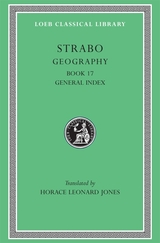 Geography, Volume VIII: Book 17. General Index
Strabo
Harvard University Press The ecumene in prose.
Strabo (ca. 64 BC to ca. AD 25), an Asiatic Greek of Amasia in Pontus, studied at Nysa and after 44 BC at Rome. He became a keen traveler who saw a large part of Italy, various near eastern regions including the Black Sea, various parts of Asia Minor, Egypt as far as Ethiopia, and parts of Greece. He was a long time in Alexandria where he no doubt studied mathematics, astronomy, and history.
Strabo’s historical work is lost, but his most important Geography in seventeen books has survived. After two introductory books, numbers 3 and 4 deal with Spain and Gaul, 5 and 6 with Italy and Sicily, 7 with north and east Europe, 8–10 with Greek lands, 11–14 with the main regions of Asia and with Asia Minor, 15 with India and Iran, 16 with Assyria, Babylonia, Syria, and Arabia, 17 with Egypt and Africa. In outline he follows the great mathematical geographer Eratosthenes, but adds general descriptions of separate countries including physical, political, and historical details. A sequel to his historical memoirs, Geography is planned apparently for public servants rather than students—hence the accounts of physical features and of natural products. On the mathematical side it is an invaluable source of information about Eratosthenes, Hipparchus, and Posidonius.
The Loeb Classical Library edition of Strabo is in eight volumes.
Geography's Inner Worlds: Pervasive Themes in Contemporary American Geography
Abler, Ronald F
Rutgers University Press, 1992 Twenty-six leading American geographers meditate on the themes that unify contemporary geography. They emphasize the concepts and methods that run through all geography's sub-disciplines and give it a distinctive place among both the natural and social sciences. Prepared under the sponsorship of the American Association of Geographers for the International Geographical Congress 1992, these insightful essays on the character of the discipline and its future will be required reading for every student of the field.
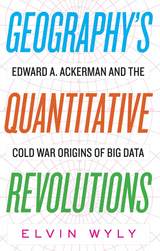 Geography's Quantitative Revolutions: Edward A. Ackerman and the Cold War Origins of Big Data
Elvin Wyly
West Virginia University Press, 2019 Do you have a smartphone? Billions of people on the planet now navigate their daily lives with the kind of advanced Global Positioning System capabilities once reserved for the most secretive elements of America’s military-industrial complex. But when so many people have access to the most powerful technologies humanity has ever devised for the precise determination of geographical coordinates, do we still need a specialized field of knowledge called geography? Just as big data and artificial intelligence promise to automate occupations ranging from customer service and truck driving to stock trading and financial analysis, our age of algorithmic efficiency seems to eliminate the need for humans who call themselves geographers—at the precise moment when engaging with information about the peoples, places, and environments of a diverse world is more popular than ever before. How did we get here? This book traces the recent history of geography, information, and technology through the biography of Edward A. Ackerman, an important but forgotten figure in geography’s “quantitative revolution.” It argues that Ackerman’s work helped encode the hidden logics of a distorted philosophical heritage—a dangerous, cybernetic form of thought known as militant neo-Kantianism—into the network architectures of today’s pervasive worlds of surveillance capitalism.
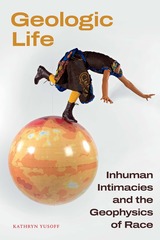 Geologic Life: Inhuman Intimacies and the Geophysics of Race
Kathryn Yusoff
Duke University Press, 2024 In Geologic Life, Kathryn Yusoff theorizes the processes by which race and racialization emerged geologically. Examining both the history of geology as a discipline and ongoing mineral and resource extraction, Yusoff locates forms of imperial geology embedded in Western and Enlightenment thought and highlights how it creates anti-Black, anti-Indigenous, and anti-Brown environmental and racial injustices. Throughout, she outlines how the disciplines of geology and geography—and their conventions: surveying, identifying, classifying, valuing, and extracting—established and perpetuated colonial practices that ordered the world and people along a racial axis. Examining the conceptualization of the inhuman as political, geophysical, and paleontological, Yusoff unearths an apartheid of materiality as distinct geospatial forms. This colonial practice of geology organized and underpinned racialized accounts of space and time in ways that materially made Anthropocene Earth. At the same time, Yusoff turns to Caribbean, Indigenous, and Black thought to chart a parallel geologic epistemology of the "earth-bound" that challenges what and who the humanities have chosen to overlook in its stories of the earth. By reconsidering the material epistemologies of the earth as an on-going geotrauma in colonial afterlives, Yusoff demonstrates that race is as much a geological formation as a biological one.
A Geologic Trip Across Tennessee by Interstate 40
Harry L. Moore
University of Tennessee Press, 1994 Spanning Tennessee from the Great Smoky Mountains to the Mississippi River, Interstate 40 is more than just a convenient roadway. It afford travelers the opportunity to observe the state's geologic and physiographic features in all their variety. In this accessible and profusely illustrated book, Harry Moore offers a fascinating guided tour of that roadside geology.
Geological Evolution of the Colorado Plateau of Eastern Utah and Western Colorado
Robert Fillmore
University of Utah Press, 2010 Robert Fillmore’s clear, easy-to-read text documents spectacular features of the eastern Colorado Plateau, one of the most interesting and scenic geologic regions in the world. The area covered in detail stretches from the Book Cliffs to the deep canyons of the San Juan River area. The events that shaped this vast region are clearly described and include the most recent interpretations of ongoing geologic forces. The book also includes mile-by-mile road logs with explanations of the various features for most of the scenic roads in the region, including Arches National Park, Canyonlands National Park, and the Natural Bridges area.
Geological Sciences in the Antebellum South
Edited by James X. Corgan
University of Alabama Press, 1982 Nine essays that provide detailed information about the early geological exploration of the southeastern United States
Originally presented under the aegis of the Geological Society of America, these essays cover observations and studies made between 1796 and the 1850s. Each essay includes fascinating biographic sketches of the author, a bibliography, and an index.
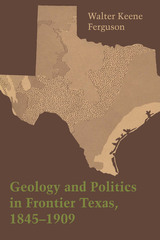 Geology and Politics in Frontier Texas, 1845–1909
By Walter Keene Ferguson
University of Texas Press, 1969 Conservation and development of natural resources are issues of critical importance throughout the world. These issues have been matters of public concern in Texas since legislators first adopted the state-sponsored geological survey as a means of extending government funds to private citizens who would help develop and advertise the mineral and agricultural wealth of Texas. Walter Keene Ferguson examines the relation of politics to geological exploration during a critical period in Texas history—the first half-century of statehood. Although Texas shared its frontier experience with many other areas, it could not rely on federal aid in the form of land grants because the state government controlled the destiny of the public domain at all times. Acrimonious debate between farmers and urbanites of East Texas and pioneer ranchers of arid West Texas rendered the disposition of public lands even more difficult. As tools for developing and advertising resources, the geological and agricultural surveys of 1858 and 1867 fulfilled the demands of expectant capitalism made by politicians, speculators, and railroad entrepreneurs. Reconnaissance geologists publicized the wealth of Texas. Drought in 1886 and popular agitation against squandering of state land caused the emergence of a new concept of the geological survey as an instrument of land reform and public assistance. Lobbying by reformers and scientific organizations led to the formation of the Dumble Survey in 1888 and the University of Texas Mineral Survey in 1901. Stratigraphic analysis of the “individualities” of Texas geology helped the state realize its full economic potential and led to legislation to protect public mineral land from exploitation. The youthful oil industry finally removed geological exploration from the political arena. As part of the University, a permanent Bureau of Economic Geology was established in 1909 to extend the benefits of scientific research to private citizens and state organizations on a nonpartisan basis. Ferguson’s analysis of geological surveys in Texas contributes to an understanding not only of the geology and history of the state but of the urgent problem of evaluating the natural resources of underdeveloped regions.
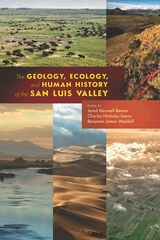 The Geology, Ecology, and Human History of the San Luis Valley
Jared Maxwell Beeton
University Press of Colorado, 2020 The Geology, Ecology, and Human History of the San Luis Valley explores the rich landscapes and diverse social histories of the San Luis Valley, an impressive mountain valley spanning over 9,000 square miles that crosses the border of south-central Colorado and north-central New Mexico and includes many cultural traditions. Twenty-six expert scholars and educators—including geologists, geographers, biologists, ecologists, linguists, historians, sociologists, and consultants—uncover the natural and cultural history of the region, which serves as home to the Sangre de Cristo Mountains, the San Juan Mountains, Great Sand Dunes National Park and Preserve, and the Rio Grande headwaters.
The first section, “The Geology and Ecology of the San Luis Valley,” surveys the geomorphology, hydrology, animal and plant life, conservation, management, and mining of the valley’s varied terrain. The second section, “Human History of the San Luis Valley,” recounts the valley’s human visitation and settlement, from early indigenous life to Spanish exploration to Hispanic and Japanese settlements. This section introduces readers to the region’s wide range of religious identities—Catholic, Latter-day Saint, Buddhist, Jehovah’s Witness, Amish, and Mennonite—and diverse linguistic traditions, including Spanish, English, Dutch, Danish, Japanese, and Mayan. The final section, “Travel Itineraries,” addresses recreation, specifically fly-fishing and rock climbing.
The book provides a comprehensive overview of the endemic flora and fauna, human history of indigenous lifeways, and diverse settlement patterns that have shaped the region. The Geology, Ecology, and Human History of the San Luis Valley will appeal to students and scholars of geology, ecology, environmental history, and cultural history, as well as residents and tourists seeking to know more about this fascinating and integral part of Colorado and New Mexico.
Contributors:
Benjamin Armstrong, Timothy Armstrong, Deacon Aspinwall, Robert Benson, Lorrie Crawford, Kristy Duran, Jeff Elison, Eric Harmon, Devin Jenkins, Bradley G. Johnson, Robert M. Kirkham, Bessie Konishi, Angie Krall, Richard D. Loosbrock, Richard Madole, A. W. Magee, Victoria Martinez, James McCalpin, Mark Mitchell, R. Nathan Pipitone, Andrew Valdez, Rio de la Vista, Damián Vergara Wilson
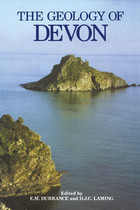 Geology Of Devon
Edited by E.M. Durrance and D.J.C. Laming
University of Exeter Press, 1995
Devon shows perhaps one of the most varied displays of geology in the British Isles. Intended for anyone with an interest in geology, The Geology of Devon covers the geological development of the county and adjacent areas from Devonian times to the present day. Each chapter has a list of representative localities so that the book can also serve as an excursion guide for field work.
This is a new and completely revised edition of The Geology of Devon, first published in 1982 and reprinted three times. Each chapter in this new edition has been thoroughly revised and rewritten to reflect the major changes in knowledge since the first edition. There are four additional chapters, on Geological Pioneers, Engineering Geology, Environmental Geology and Off-shore Geology. The book also lists all official and local sites of geological and geomorphological interest, includes an expanded reference list and a colour geological map
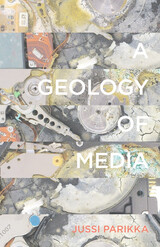 A Geology of Media
Jussi Parikka
University of Minnesota Press, 2015 Media history is millions, even billions, of years old. That is the premise of this pioneering and provocative book, which argues that to adequately understand contemporary media culture we must set out from material realities that precede media themselves—Earth’s history, geological formations, minerals, and energy. And to do so, writes Jussi Parikka, is to confront the profound environmental and social implications of this ubiquitous, but hardly ephemeral, realm of modern-day life. Exploring the resource depletion and material resourcing required for us to use our devices to live networked lives, Parikka grounds his analysis in Siegfried Zielinski’s widely discussed notion of deep time—but takes it back millennia. Not only are rare earth minerals and many other materials needed to make our digital media machines work, he observes, but used and obsolete media technologies return to the earth as residue of digital culture, contributing to growing layers of toxic waste for future archaeologists to ponder. He shows that these materials must be considered alongside the often dangerous and exploitative labor processes that refine them into the devices underlying our seemingly virtual or immaterial practices. A Geology of Media demonstrates that the environment does not just surround our media cultural world—it runs through it, enables it, and hosts it in an era of unprecedented climate change. While looking backward to Earth’s distant past, it also looks forward to a more expansive media theory—and, implicitly, media activism—to come.
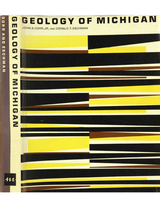 Geology of Michigan
John A. Dorr, Jr. and Donald F. Eschman
University of Michigan Press, 1970 In the eons before the first man set foot on Michigan soil, ancient mountain ranges yielded to the slow but irresistible forces of erosion and slipped beneath the waters of warm inland seas. Great rivers formed their deltas against the pounding surf, filling the seas to create endless swamps. The vast northern ice sheets scoured the face of the state, heaping high their rock debris as they withdrew to make way for the ancestral Great Lakes. Primitive man appeared here late, one of the last in the long parade of life which passes in review in Michigan's fossil record. In text and illustrations, Geology of Michigan tells this fascinating story. The authors, both experienced field geologists, offer descriptions of the principal geologic features of the state, explain the origin of these features, and portray the geologic evolution of Michigan from earliest times to the present. Specific topics include the geologic time scale, the geologic eras, water and wind, petroleum and natural gas, and minerals in Michigan. General principles of geology, which may be applied to the study of other regions as well, are explained with great clarity. The authors also provide a wealth of information on the origin and identification of rock and fossil specimens. Michigan collecting localities are indicated on maps and in the text, and collecting methods are expertly described. Of particular interest to students and geologists for its bibliography and synthesis of heretofore widely scattered information, this abundantly illustrated book can be read by student and layman alike as a comprehensive introduction to the fascinating geology of Michigan.
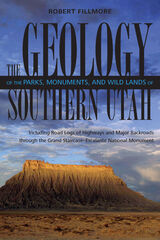 Geology Of Parks, Monuments, and Wildlands of Southern Utah
Robert Fillmore
University of Utah Press, 2000 This detailed interpretive guide explains the forces that created Utah's unforgettable scenery, while providing road logs of highways and major backroads through the Grand Staircase of the Colorado Plateau. Where in Utah can you find a fossilized ant hill that is at least fifty million years old? Do you know the location of an ancient beach that disappeared along with the dinosaurs that strolled it? Find out in The Geology of the Parks, Monuments, and Wildlands of Southern Utah. This fascinating and authoritative guide belongs on the dashboard or in the backpack of every visitor to southern Utah or student of its natural history. More than sixty illustrations and nearly three dozen photographs accompany clear explanations of the spectacular geologic features of this landscape, including Capitol Reef, Bryce Canyon, and Zion National Parks, as well as the Grand Staircase-Escalante Monument. Section I of the volume surveys chronologically the origins of the formations and structural features and the geologic processes that have shaped the Colorado Plateau. Section II provides road logs with mile-by-mile geologic descriptions of key sections of highway traversing this area. This detailed interpretive guide turns any windshield into a window of opportunity for understanding the forces that created Utah’s unforgettable scenery—whether it be a breathtaking panorama or a dazzling array of fins and fractures, pillars and pedestals, or cliffs and chasms.
Geology of Southeast Alaska: Rock and Ice in Motion
Harold Stowell
University of Alaska Press, 2006 The most powerful forces on earth have shaped the landscape of Southeast Alaska. Scientists and visitors from around the world trek north to experience wild rivers, powerful glaciers, and breathtaking mountain peaks. Now, for the first time, a handy guide to the region is available. Complete with color illustrations revealing millions of years of geological history and in-depth descriptions of Sitka, Juneau, and Glacier Bay, Geology of Southeast Alaska is essential reading for anyone fascinated by rock and ice in motion.
Written by a geologist with over twenty-five years of experience in the north, Geology of Southeast Alaska will entertain and inform with abundant photographs and detailed drawings. Whether you want to understand the forces that shaped the state of Alaska, or you want to learn the basics of glacial movement, this compact, authoritative book is for you.
Geology of the Great Basin
Bill Fiero
University of Nevada Press, 2009 Geology of the Great Basin is the essential introduction to the geology of this physically complex, ever-changing region. Written in a clear, succinct style and generously illustrated with photographs, diagrams, and maps, the book describes the fundamentals of geologic processes, then discusses the physical attributes and geologic history of the Great Basin. The author also offers readers information about specific sites where significant geologic features can be observed. The book, first published in 1986, is now available in a new, easier-to-handle paperback edition that will make it more convenient for classroom use and for readers who want to carry it with them in their car or backpack.
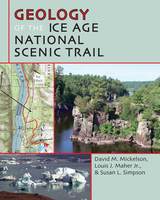 Geology of the Ice Age National Scenic Trail
David M. Mickelson
University of Wisconsin Press, 2011 The Ice Age National Scenic Trail meanders across the state of Wisconsin through scenic glacial terrain dotted with lakes, steep hills, and long, narrow ridges. David M. Mickelson, Louis J. Maher Jr., and Susan L. Simpson bring this landscape to life and help readers understand what Ice Age Wisconsin was like. An overview of Wisconsin’s geology and key geological concepts helps readers understand geological processes, materials, and landforms. The authors detail geological features along each segment of the Ice Age Trail and at each of the nine National Ice Age Scientific Reserve sites.
Readers can experience the Ice Age Trail through more than one hundred full-color photographs, scores of beautiful maps, and helpful diagrams. Science briefs explain glacial features such as eskers, drumlins, and moraines. Geology of the Ice Age National Scenic Trail also includes detailed trail descriptions that are cross referenced with the science briefs to make it easy to find the geological terms used in the trail descriptions. Whatever your level of experience with hiking or knowledge of glaciers, this book will provide lively, informative, and revealing descriptions for a new understanding of the shape of the land beneath our feet.
Geology of the Netherlands East Indies: Lectures Delivered as Exchange-Professor at the University of Michigan in 1921-1922
H. Albert Brouwer
University of Michigan Press, 1925 The Geology of the Netherlands East Indies is a collection of lectures delivered at the University of Michigan in 1921 and 1922. The information was shaped with great industry and skill by Laurence M. Gould, from the Department of Geology at the University of Michigan, the source materials consisting of notes made by him during the lectures. The manuscript was added to by H. Albert Brouwer.The Geology of the Netherlands East Indies provides an outline of a field for geological research that is full of promise. As may be noted from the bibliography given in the Appendix, a great deal has been written about various phases of the geology of the Netherlands East Indies, but a large part of the subject matter appeared in this book for the first time in English.
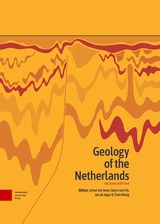 Geology of the Netherlands: Second Edition
Johan ten Veen
Amsterdam University Press, 2025 Below the famously flat surface of the Netherlands lies a fascinating world of buried mountains and valleys, which can only be unraveled with drillings, geophysical techniques and geological understanding.
Thorough exploration for hydrocarbons, groundwater and minerals produced a wealth of data and knowledge about the Dutch subsurface and its various uses. The second edition of this book, originally published in 2007, provides access to that wealth with a thoroughly revised and updated description of the Paleozoic to recent geology of the Netherlands, including the offshore. It covers applied geology with chapters on oil and gas, coal and peat, rock salt, groundwater, construction minerals, silica sand, underground storage and sequestration, and geothermal energy. It treats the natural and anthropogenic geohazards of seismicity and subsidence. Finally, it illustrates how data and knowledge of the Dutch subsurface are disseminated by the Geological Survey of the Netherlands, part of research and technology organisation TNO.
Geology of the Netherlands is a comprehensive reference work for geologists, engineers, geoscience students, and all others who wish to know more about the relevance and applications of geology in the Netherlands.
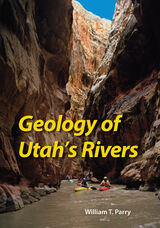 Geology of Utah's Rivers
William T Parry
University of Utah Press, 2008 Despite being the second-driest state in the U.S., a substantial portion of Utah’s geologic and cultural history involves rivers, and the effects of flowing water are evident across the state. This book is about the geology of the rivers that shaped Utah’s present landscape, the ancient rivers that left their deposits as a part of the mountains, and the mythical rivers that inspired early exploration.
Parry approaches his subject from many angles—the mountain building events that provide a source for the rivers, the physiographic provinces that give the modern rivers their character, and the deposits of sand and gravel that formed as ancient rivers flowed. Fossil and modern fish fauna are described to provide a unique guide to some aspects of rivers not available by any other method. The description of rivers is completed with the 'historical' account of rivers that did not exist—the mythical rivers of Utah.
Transcending the notion of a traditional geology text, Parry provides detailed commentary on historical exploration and the development of the local scenery. His ambitious scholarship offers a fresh look at Utah’s changing landscape throughout geologic time.
Geometrical Theory of Diffraction
V.A. Borovikov
The Institution of Engineering and Technology, 1994 The geometrical theory of diffraction (GTD) is an efficient method of analysis and design of wave fields. It is widely used in antenna synthesis in microwave, millimetre and infra-red bands, in circuit engineering and laser system design. It is a convenient tool for tackling the problems of wave propagation and scattering at bodies of complex shape. The method combines the simplicity and physical transparency of geometrical optics with high computational accuracy over a wide dynamic range of quantities analysed. The advantage of GTD is particularly pronounced in applications where the wavelength is small compared with the typical size of scatterers, i.e. in situations where the known analytical techniques - variational calculus and numerical analysis - are no longer applicable.
 Geometrical Theory of Diffraction for Electromagnetic Waves
Graeme L. James
The Institution of Engineering and Technology, 1986 The continuous development of the Geometrical Theory of Diffraction (GTD), from its conception in the 1950s, has now established it as a leading analytical technique in the prediction of high-frequency electromagnetic radiation and scattering phenomena. Consequently, there is an increasing demand for research workers and students in electromagnetic waves to be familiar with this technique. In this book they will find a thorough and clear exposition of the GTD formulation for vector fields. It begins by describing the foundations of the theory in canonical problems and then proceeds to develop the method to treat a variety of circumstances. Where applicable, the relationship between GTD and other high-frequency methods, such as aperture field and the physical optics approximation, is stressed throughout the text. The purpose of the book, apart from expounding the GTD method, is to present useful formulations that can be readily applied to solve practical engineering problems. To this end, the final chapter supplies some fully worked examples to demonstrate the practical application of the GTD techniques developed in the earlier chapters.
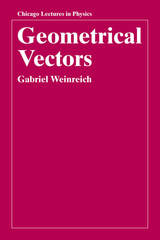 Geometrical Vectors
Gabriel Weinreich
University of Chicago Press, 1998 Every advanced undergraduate and graduate student of physics must master the concepts of vectors and vector analysis. Yet most books cover this topic by merely repeating the introductory-level treatment based on a limited algebraic or analytic view of the subject.
Geometrical Vectors introduces a more sophisticated approach, which not only brings together many loose ends of the traditional treatment, but also leads directly into the practical use of vectors in general curvilinear coordinates by carefully separating those relationships which are topologically invariant from those which are not. Based on the essentially geometric nature of the subject, this approach builds consistently on students' prior knowledge and geometrical intuition.
Written in an informal and personal style, Geometrical Vectors provides a handy guide for any student of vector analysis. Clear, carefully constructed line drawings illustrate key points in the text, and problem sets as well as physical examples are provided.
 Geometry and Chronometry in Philosophical Perspective
Adolf Grunbaum
University of Minnesota Press, 1968
Geometry and Chronometry in Philosophical Perspective was first published in 1968. Minnesota Archive Editions uses digital technology to make long-unavailable books once again accessible, and are published unaltered from the original University of Minnesota Press editions.
In this volume Professor Grünbaum substantially extends and comments upon his essay "Geometry, Chronometry, and Empiricism," which was first published in Volume III of the Minnesota Studies in the Philosophy of Science. Commenting on the essay when it first appeared J. J. C. Smart wrote in Mind (England): "In my opinion Adolf Grünbaum's paper ... supersedes nearly all that has been written on the logical status of physical geometry and chronometry." The full text of the essay is given here with the author's extension of it and his discussion of some of the critical comment it has evoked, particularly, a critique published by Hilary Putnam.
Adolph Grünbaum is Andrew Mellon Professor of Philosophy at the University of Pittsburgh and the current president of the Philosophy of Science Association.
Geometry and Meaning
Dominic Widdows
CSLI, 2004 From Pythagoras's harmonic sequence to Einstein's theory of relativity, geometric models of position, proximity, ratio, and the underlying properties of physical space have provided us with powerful ideas and accurate scientific tools. Currently, similar geometric models are being applied to another type of space—the conceptual space of information and meaning, where the contributions of Pythagoras and Einstein are a part of the landscape itself. The rich geometry of conceptual space can be glimpsed, for instance, in internet documents: while the documents themselves define a structure of visual layouts and point-to-point links, search engines create an additional structure by matching keywords to nearby documents in a spatial arrangement of content. What the Geometry of Meaning provides is a much-needed exploration of computational techniques to represent meaning and of the conceptual spaces on which these representations are founded.
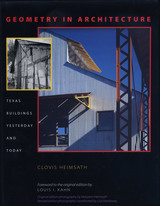 Geometry in Architecture: Texas Buildings Yesterday and Today
By Clovis Heimsath
University of Texas Press, 2002 Pioneer Texas Buildings opened people's eyes when it was first published in 1968. At a time when "progress" meant tearing down the weathered houses, barns, churches, and stores built by the original settlers of Central Texas, this book taught people to see the beauty, simplicity, and order expressed in the unadorned geometric forms of early Texas buildings. It inspired the preservation and restoration of many of the remaining pioneer buildings, as well as the design of modern buildings that employ the same simple geometries. This revised edition of Pioneer Texas Buildings juxtaposes the historic structures with works by twenty contemporary architects who are inspired by the pioneer tradition to show how seamlessly the basic geometries translate from one era to another. As in the first edition, sketches and brief commentary by Clovis Heimsath explain how squares, triangles, and circles take shape in the cubic, triangular, and cylindrical forms that comprise houses and other buildings. Then black-and-white photographs, the heart of the book, illustrate these geometric forms in historic and modern buildings. The book also includes two essays in which Heimsath discusses the factors that led him and his wife Maryann to document early Texas buildings and the results in historic preservation and timeless architectural designs that have followed from their efforts.
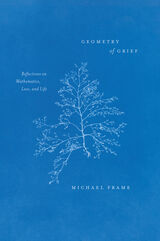 Geometry of Grief: Reflections on Mathematics, Loss, and Life
Michael Frame
University of Chicago Press, 2021 In this profound and hopeful book, a mathematician and celebrated teacher shows how mathematics may help all of us—even the math-averse—to understand and cope with grief.
We all know the euphoria of intellectual epiphany—the thrill of sudden understanding. But coupled with that excitement is a sense of loss: a moment of epiphany can never be repeated. In Geometry of Grief, mathematician Michael Frame draws on a career’s worth of insight—including his work with a pioneer of fractal geometry Benoit Mandelbrot—and a gift for rendering the complex accessible as he delves into this twinning of understanding and loss. Grief, Frame reveals, can be a moment of possibility.
Frame investigates grief as a response to an irrevocable change in circumstance. This reframing allows us to see parallels between the loss of a loved one or a career and the loss of the elation of first understanding a tricky concept. From this foundation, Frame builds a geometric model of mental states. An object that is fractal, for example, has symmetry of magnification: magnify a picture of a mountain or a fern leaf—both fractal—and we see echoes of the original shape. Similarly, nested inside great loss are smaller losses. By manipulating this geometry, Frame shows us, we may be able to redirect our thinking in ways that help reduce our pain. Small‐scale losses, in essence, provide laboratories to learn how to meet large-scale losses.
Interweaving original illustrations, clear introductions to advanced topics in geometry, and wisdom gleaned from his own experience with illness and others’ remarkable responses to devastating loss, Frame’s poetic book is a journey through the beautiful complexities of mathematics and life. With both human sympathy and geometrical elegance, it helps us to see how a geometry of grief can open a pathway for bold action.
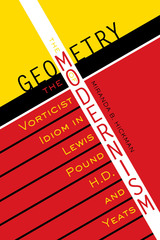 The Geometry of Modernism: The Vorticist Idiom in Lewis, Pound, H.D., and Yeats
By Miranda B. Hickman
University of Texas Press, 2006 Addressing both the literature and the visual arts of Anglo-American modernism, The Geometry of Modernism recovers a crucial development of modernism's early years that until now has received little sustained critical attention: the distinctive idiom composed of geometric forms and metaphors generated within the early modernist movement of Vorticism, formed in London in 1914. Focusing on the work of Wyndham Lewis, leader of the Vorticist movement, as well as Ezra Pound, H.D., and William Butler Yeats, Hickman examines the complex of motives out of which Lewis initially forged the geometric lexicon of Vorticism—and then how Pound, H.D., and Yeats later responded to it and the values that it encoded, enlisting both the geometric vocabulary and its attendant assumptions and ideals, in transmuted form, in their later modernist work. Placing the genesis and appropriation of the geometric idiom in historical context, Hickman explores how despite its brevity as a movement, Vorticism in fact exerted considerable impact on modernist work of the years between the wars, in that its geometric idiom enabled modernist writers to articulate their responses to both personal and political crises of the 1930s and 1940s. Informed by extensive archival research as well as treatment of several of the least-known texts of the modernist milieu, The Geometry of Modernism clarifies and enriches the legacy of this vital period.
Geometry of Nonpositively Curved Manifolds
Patrick B. Eberlein
University of Chicago Press, 1997 Starting from the foundations, the author presents an almost entirely
self-contained treatment of differentiable spaces of nonpositive
curvature, focusing on the symmetric spaces in which every geodesic lies
in a flat Euclidean space of dimension at least two. The book builds to
a discussion of the Mostow Rigidity Theorem and its generalizations, and
concludes by exploring the relationship in nonpositively curved spaces
between geometric and algebraic properties of the fundamental group.
This introduction to the geometry of symmetric spaces of non-compact
type will serve as an excellent guide for graduate students new to the
material, and will also be a useful reference text for mathematicians
already familiar with the subject.
The Geometry of Visual Phonology
Linda Ann N. Uyechi
CSLI, 1996 Uyechi presents an extremely thorough and formal empirical description of the various features of ASL signs, of interest to any theoretician in developing a theory of sign phonology or in testing claims in the theory of the phonology of spoken languages against data from a signed language. The author also presents a formalism for representing signs and makes a number of theoretical proposals based on this formalism. The volume's analysis indicates that the properties of core constructs of the spoken-language phonology, namely the segment and the syllable, differ from the properties of the core constructs in a formal framework of visual phonology. The Geometry of Visual Phonology also differs from other analyses in concluding that such differences are not immediately reconcilable. This volume provides a framework for discussing crucial differences between signs and speech.
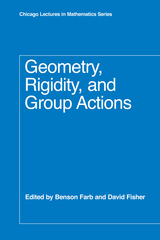 Geometry, Rigidity, and Group Actions
Edited by Benson Farb and David Fisher
University of Chicago Press, 2011 The study of group actions is more than a hundred years old but remains to this day a vibrant and widely studied topic in a variety of mathematic fields. A central development in the last fifty years is the phenomenon of rigidity, whereby one can classify actions of certain groups, such as lattices in semi-simple Lie groups. This provides a way to classify all possible symmetries of important spaces and all spaces admitting given symmetries. Paradigmatic results can be found in the seminal work of George Mostow, Gergory Margulis, and Robert J. Zimmer, among others.
The papers in Geometry, Rigidity, and Group Actions explore the role of group actions and rigidity in several areas of mathematics, including ergodic theory, dynamics, geometry, topology, and the algebraic properties of representation varieties. In some cases, the dynamics of the possible group actions are the principal focus of inquiry. In other cases, the dynamics of group actions are a tool for proving theorems about algebra, geometry, or topology. This volume contains surveys of some of the main directions in the field, as well as research articles on topics of current interest.
 Geo-Narratives of a Filial Son: The Paintings and Travel Diaries of Huang Xiangjian (1609–1673)
Elizabeth Kindall
Harvard University Press, 2016 Huang Xiangjian, a mid-seventeenth-century member of the Suzhou local elite, journeyed on foot to southwest China and recorded its sublime scenery in site-specific paintings. Elizabeth Kindall’s innovative analysis of the visual experiences and social functions Huang conveyed through his oeuvre reveals an unrecognized tradition of site paintings, here labeled geo-narratives, that recount specific journeys and create meaning in the paintings. Kindall shows how Huang created these geo-narratives by drawing upon the Suzhou place-painting tradition, as well as the encoded experiences of southwestern sites discussed in historical gazetteers and personal travel records, and the geography of the sites themselves. Ultimately these works were intended to create personas and fulfill specific social purposes among the educated class during the Ming-Qing transition. Some of Huang’s paintings of the southwest, together with his travel records, became part of a campaign to attain the socially generated title of Filial Son, whereas others served private functions. This definitive study elucidates the context for Huang Xiangjian’s painting and identifies geo-narrative as a distinct landscape-painting tradition lauded for its naturalistic immediacy, experiential topography, and dramatic narratives of moral persuasion, class identification, and biographical commemoration.
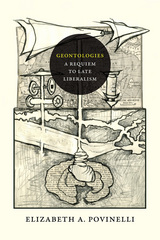 Geontologies: A Requiem to Late Liberalism
Elizabeth A. Povinelli
Duke University Press, 2016 In Geontologies Elizabeth A. Povinelli continues her project of mapping the current conditions of late liberalism by offering a bold retheorization of power. Finding Foucauldian biopolitics unable to adequately reveal contemporary mechanisms of power and governance, Povinelli describes a mode of power she calls geontopower, which operates through the regulation of the distinction between Life and Nonlife and the figures of the Desert, the Animist, and the Virus. Geontologies examines this formation of power from the perspective of Indigenous Australian maneuvers against the settler state. And it probes how our contemporary critical languages—anthropogenic climate change, plasticity, new materialism, antinormativity—often unwittingly transform their struggles against geontopower into a deeper entwinement within it. A woman who became a river, a snakelike entity who spawns the fog, plesiosaurus fossils and vast networks of rock weirs: in asking how these different forms of existence refuse incorporation into the vocabularies of Western theory Povinelli provides a revelatory new way to understand a form of power long self-evident in certain regimes of settler late liberalism but now becoming visible much further beyond.
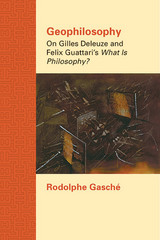 Geophilosophy: On Gilles Deleuze and Felix Guattari's What Is Philosophy?
Rodolphe Gasché
Northwestern University Press, 2014 Rodolphe Gasché’s commentary on Deleuze and Guattari’s last book, What Is Philosophy?, homes in on what the two thinkers define as philosophy in distinction from the sciences and the arts and what it is that they understand themselves to have done while doing philosophy. Gasché is concerned with the authors’ claim not only that philosophy is a Greek invention but also that it is, for fundamental reasons, geophilosophical in nature.
Gasché also intimates that, rather than a marginal issue of their conception of philosophy, geocentrism is a central dimension of their thinking. Indeed, Gasché argues, if all the principal traits that constitute philosophy according to What is Philosophy?—autochthony, philia, and doxa—imply in an essential manner a concern with Earth, it follows that what Deleuze and Guattari have been doing while engaging in philosophy has been marked by this concern from the start.
Geopolitical Economy: After US Hegemony, Globalization and Empire
Radhika Desai
Pluto Press, 2013 Geopolitical Economy radically reinterprets the historical evolution of the world order, as a multi-polar world emerges from the dust of the financial and economic crisis.
Radhika Desai offers a radical critique of the theories of US hegemony, globalisation and empire which dominate academic international political economy and international relations, revealing their ideological origins in successive failed US attempts at world dominance through the dollar.
Desai revitalizes revolutionary intellectual traditions which combine class and national perspectives on ‘the relations of producing nations’. At a time of global upheavals and profound shifts in the distribution of world power, Geopolitical Economy forges a vivid and compelling account of the historical processes which are shaping the contemporary international order.
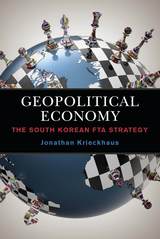 Geopolitical Economy: The South Korean FTA Strategy
Jonathan Krieckhaus
University of Michigan Press, 2018 Geopolitical Economy examines the significance and nature of free trade agreements (FTAs), the primary policy tool through which modern nations seek access to international markets and promote economic growth. The book focuses specifically on how South Korea, the world’s leader in the number and significance of FTAs as well as the world’s sixth largest export economy, uses FTAs.
Jonathan Krieckhaus argues that geopolitics—the struggle between powerful nations over specific geographic regions around the globe—influenced FTA strategy and economic policy in South Korea and beyond. This perspective illustrates the security approach to FTAs, but adds that the geographic specificity of security concerns deeply shape FTA policy.
Geopolitical Economy also looks at Korean FTAs through the lens of development strategy. South Korea is singularly successful in garnering FTAs with all three players in the global economy: the United States, the European Union, and China. This unprecedented success was built on a strong commitment from three consecutive Korean presidential administrations, each operating within a favorable state-society context that enjoyed the existence of a centralized and effective trade bureaucracy.
 Geopolitical Exotica: Tibet in Western Imagination
Dibyesh Anand
University of Minnesota Press, 2008 Geopolitical Exotica examines exoticized Western representations of Tibet and Tibetans and the debate over that land’s status with regard to China. Concentrating on specific cultural images of the twentieth century—promulgated by novels, popular films, travelogues, and memoirs—Dibyesh Anand lays bare the strategies by which “Exotica Tibet” and “Tibetanness” have been constructed, and he investigates the impact these constructions have had on those who are being represented. Although images of Tibet have excited the popular imagination in the West for many years, Geopolitical Exotica is the first book to explore representational practices within the study of international relations. Anand challenges the parochial practices of current mainstream international relations theory and practice, claiming that the discipline remains mostly Western in its orientation. His analysis of Tibet’s status with regard to China scrutinizes the vocabulary afforded by conventional international relations theory and considers issues that until now have been undertheorized in relation to Tibet, including imperialism, history, diaspora, representation, and identity. In this masterfully synthetic work, Anand establishes that postcoloniality provides new insights into themes of representation and identity and demonstrates how IR as a discipline can meaningfully expand its focus beyond the West. Dibyesh Anand is a reader in international relations at the University of Westminster, London.
 Geopolitics in the Danube Region: Hungarian Reconciliation Efforts, 1848–1998
Ignác Romsics
Central European University Press, 1998 Central and Eastern Europe has a long history of, on the one hand, ethnic conflicts and, on the other, of a revolutionary tradition against expansionism. Both have their roots in the geographical situation and ethnic composition of the region. All these problems have surfaced at times when the political status quo has been upset for some reason, such as after the two world wars and after the collapse of the Soviet Union. Both great powers bordering the Danube region-Germany and Russia-have strived to develop their own versions of confederations (Mitteleuropa and Pan-Slavic movements). Also, politicians and intellectuals of the countries affected have proposed various theories, and made initiatives for different forms of closer or looser confederative formations. This book examines the reasons for the failure of these initiatives, these reasons including such factors as ethnically-motivated political antagonism, and the lack of economic complementarity. Contributing valuable information on the problems of political and economic integration, which should not be forgotten in a period when the countries of the region are looking towards the European Union, expecting-realistically or not-the solution of their various conflicts.
A Geopolitics Of Academic Writing
A. Suresh Canagarajah
University of Pittsburgh Press, 2002 Milton Studies is published annually by the University of Pittsburgh Press as a forum for Milton scholarship and criticism. The journal defines the literary, intellectual, and historical contexts that impacted Milton by studying the work of his contemporaries, seventeenth century political and religious movements, his influence on other writers, and the history of critical response to his work.
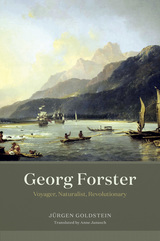 Georg Forster: Voyager, Naturalist, Revolutionary
Jürgen Goldstein
University of Chicago Press, 2019 “Marvelous. . . . Wonderfully imaginative. . . . Sparkling.”—Wall Street Journal
“Stunning. . . . Read this book: in equal measure it will give you hope and trouble your dreams.”—Laura Dassow Walls, author of Henry David Thoreau: A Life and Passage to Cosmos: Alexander von Humboldt’s Shaping of America
Georg Forster (1754–94) was in many ways self-taught and rarely had two cents to rub together, but he became one of the most dynamic figures of the Enlightenment: a brilliant writer, naturalist, explorer, illustrator, translator—and a revolutionary. Granted the extraordinary opportunity to sail around the world as part of Captain James Cook’s fabled crew, Forster touched icebergs, walked the beaches of Tahiti, visited far-flung foreign nations, lived with purported cannibals, and crossed oceans and the equator. Forster recounted the journey in his 1777 book A Voyage Round the World, a work of travel and science that not only established Forster as one of the most accomplished stylists of the time—and led some to credit him as the inventor of the literary travel narrative—but also influenced other German trailblazers of scientific and literary writing, most notably Alexander von Humboldt. A superb essayist, Forster made lasting contributions to our scientific—and especially botanical and ornithological—knowledge of the South Seas.
Having witnessed more egalitarian societies in the southern hemisphere, Forster returned after more than three years at sea to a monarchist Europe entering the era of revolution. When, following the French Revolution of 1789, French forces occupied the German city of Mainz, Forster became a leading political actor in the founding of the Republic of Mainz—the first democratic state on German soil.
In an age of Kantian reason, Forster privileged experience. He claimed a deep connection between nature and reason, nature and politics, nature and revolution. His politics was radical in its understanding of revolution as a natural phenomenon, and in this often overlooked way his many facets—as voyager, naturalist, and revolutionary—were intertwined.
Yet, in the constellation of the Enlightenment’s trailblazing naturalists, scientists, political thinkers, and writers, Forster’s star remains relatively dim today: the Republic of Mainz was crushed, and Forster died in exile in Paris. This book is the source of illumination that Forster’s journey so greatly deserves. Tracing the arc of this unheralded polymath’s short life, Georg Forster explores both his contributions to literature and science and the enduring relationship between nature and politics that threaded through his extraordinary four decades.
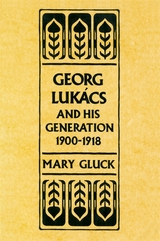 Georg Lukács and His Generation, 1900–1918
Mary Gluck
Harvard University Press, 1985 Mary Gluck introduces us to a Lukács we have never met. Here is Lukács among his friends, lovers, and peers in those important years before 1918, when he converted to Communism and Marxism at the age of thirty-nine.
Georg Lukács claimed in later life that his early achievements lacked genuine coherence, being expressions of a vague "romantic anticapitalism" that only found resolution in his conversion to Marxism. By integrating Lukács with his early generational grouping and making expert use of a new treasure trove of documents from his early years, Gluck demonstrates that revolutionary socialism was not the inevitable outcome of Lukács' early cultural radicalism, but only one of several possible options in the fragmented ideological climate of postwar Europe. From this new perspective, his pre-Marxist career takes on a cultural consistency that parallels and illuminates the inner strivings of the early modernists before the outbreak of World War I.
Lukács emerges in this generational portrait not only as dramatic and psychologically complex but also as a representative figure whose inner dilemmas were echoed in the lives of many other radical intellectuals who came of age during the fin de siêcle period. Gluck situates Lukács within a fascinating network of friends and associates, the so-called Sunday Circle, which included such people as Karl Mannheim, Arnold Hauser, Bela Balázs, and Anna Lesznai. She adeptly anchors this group within the context of social and economic transformations in Hungary that brought new conservative, antisemitic movements to the fore and that marginalized the assimilated Jewish middle classes to which Lukács and most of his friends belonged. Retracing their collective hopes and values helps to clarify the far-ranging cultural crisis associated with the decline of nineteenth-century liberal culture and the emergence of the modernist sensibility.
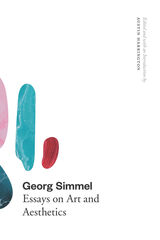 Georg Simmel: Essays on Art and Aesthetics
Georg Simmel
University of Chicago Press, 2020 Georg Simmel is one of the most original German thinkers of the twentieth century and is considered a founding architect of the modern discipline of sociology. Ranging over fundamental questions of the relationship of self and society, his influential writings on money, modernity, and the metropolis continue to provoke debate today.
Fascinated by the relationship between culture, society, and economic life, Simmel took an interest in myriad phenomena of aesthetics and the arts. A friend of writers and artists such as Auguste Rodin, Rainer Maria Rilke, and Stefan George, he wrote dozens of pieces engaging with topics such as the work of Michelangelo, Rembrandt, and Rodin, Japanese art, naturalism and symbolism, Goethe, “art for art’s sake”, art exhibitions, and the aesthetics of the picture frame.
This is the first collection to bring together Simmel’s finest writing on art and aesthetics, and many of the items appear in English in this volume for the first time. The more than forty essays show the protean breadth of Simmel’s reflections, covering landscape painting, portraiture, sculpture, poetry, theater, form, style, and representation. An extensive introduction by Austin Harrington gives an overview of Simmel’s themes and elucidates the significance of his work for the many theorists who would be inspired by his ideas.
Something of an outsider to the formal academic world of his day, Simmel wrote creatively with the flair of an essayist. This expansive collection of translations preserves the narrative ease of Simmel’s prose and will be a vital source for readers with an interest in Simmel’s trailblazing ideas in modern European philosophy, sociology, and cultural theory.
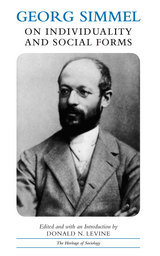 Georg Simmel on Individuality and Social Forms
Georg Simmel
University of Chicago Press, 1972 "Of those who created the intellectual capital used to launch the enterprise of professional sociology, Georg Simmel was perhaps the most original and fecund. In search of a subject matter for sociology that would distinguish it from all other social sciences and humanistic disciplines, he charted a new field for discovery and proceeded to explore a world of novel topics in works that have guided and anticipated the thinking of generations of sociologists. Such distinctive concepts of contemporary sociology as social distance, marginality, urbanism as a way of life, role-playing, social behavior as exchange, conflict as an integrating process, dyadic encounter, circular interaction, reference groups as perspectives, and sociological ambivalence embody ideas which Simmel adumbrated more than six decades ago."—Donald N. Levine
Half of the material included in this edition of Simmel's writings represents new translations. This includes Simmel's important, lengthy, and previously untranslated "Group Expansion and Development of Individuality," as well as three selections from his most neglected work, Philosophy of Money; in addition, the introduction to Probleme der Geschichtsphilosophie, chapter one of the Lebensanschauung, and three essays are translated for the first time.
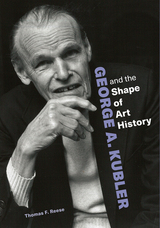 George A. Kubler and the Shape of Art History
Thomas F. Reese
J. Paul Getty Trust, The An illuminating intellectual biography of a pioneering and singular figure in American art history.
Art historian George A. Kubler (1912–1996) was a foundational scholar of ancient American art and archaeology as well as Spanish and Portuguese architecture. During over five decades at Yale University, he published seventeen books that included innovative monographs, major works of synthesis, and an influential theoretical treatise. In this biography, Thomas F. Reese analyzes the early formation, broad career, and writings of Kubler, casting nuanced light on the origins and development of his thinking.
Notable in Reese’s discussion and contextualization of Kubler’s writings is a revealing history and analysis of his Shape of Time—a book so influential to students, scholars, artists, and curious readers in multiple disciplines that it has been continuously in print since 1962. Reese reveals how pivotal its ideas were in Kubler’s own thinking: rather than focusing on problems of form as an ordering principle, he increasingly came to sequence works by how they communicate meaning. The author demonstrates how Kubler, who professed to have little interest in theory, devoted himself to the craft of art history, discovering and charting the rules that guided the propagation of structure and significance through time.
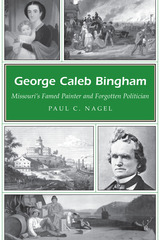 George Caleb Bingham: Missouri's Famed Painter and Forgotten Politician
Paul C. Nagel
University of Missouri Press, 2005 In this fascinating work, Paul Nagel tells the full story of George Caleb Bingham (1811–1879), one of America’s greatest nineteenth-century painters. While Nagel assesses Bingham’s artistic achievements, he also portrays another very important part of the artist’s career—his service as a statesman and political leader in Missouri. Until now, Bingham’s public service has been largely forgotten, overshadowed by his triumph as a great artist. Yet Nagel finds there were times when Bingham yearned more to be a successful politician than to be a distinguished painter. Born in Virginia, Bingham moved with his family to Missouri when he was eight years old. He spent his youth in Arrow Rock, Missouri, and returned there as an adult. He also kept art studios in Columbia and St. Louis. In his last years, he served as the first professor of art at the University of Missouri in Columbia. Because of his ties to the state, he was known nationally as “the Missouri artist.” Bingham began his distinguished public service to Missouri as a member of the legislature. During the Civil War, he grew even more politically involved, holding the office of state treasurer, and he remained active throughout the period of Reconstruction. From 1875 to 1877, Bingham served as Missouri’s adjutant general, with most of that time spent in Washington, D. C., where he attempted to settle Missourians’ war claims against the federal government. Contrary to the idyllic scenes portrayed in most of his paintings, Bingham’s life ranged from moments of high achievement to times of intense distress and humiliation. His career was often touched by controversy, sorrow, and frustration. Personal letters and other manuscripts reveal Bingham’s life to be quite complicated, and Paul Nagel attempts to uncover the truth in this biography. Beautifully illustrated, this book includes a magnificent landscape entitled Horse Thief, which had been missing since Bingham painted it sometime around 1852. Recently discovered by art historian Fred R. Kline, this splendid work will appear in print for the first time. Anyone who has an interest in art, Missouri history, or politics will find this new book extremely valuable.
George Campbell: Rhetoric in the Age of Enlightenment
Arthur E. Walzer
Southern Illinois University Press, 2003 This introductory book on George Campbell discusses details of his life and his intellectual milieu, including his role in the Scottish Enlightenment in Aberdeen. In addition, Arthur E. Walzer provides a thorough examination of Campbell's Philosophy of Rhetoric, the most important work in rhetorical theory of the Enlightenment. Brief analyses of Campbell's Dissertation on Miracles and Lectures on Pulpit Eloquence are also given.
 George Cruikshank's Life, Times, and Art: George Cruikshank's Life, Times, and Art, vol. 1
Patten, Robert L
Rutgers University Press, 1991 "Patten consistently manages with great deftness to intertwine the personal and the historical, the strands of Cruikshank's life and those of his caricatures, illustrations, and moralities without a sign of jargon or pedantry. . . . This is a monumental life and works."--Ronald Paulson, The Johns Hopkins University
"At last, an authoritative, exhaustively researched biography of one of nineteenth-century England's greatest popular artists! It will rescue him from the biographical obscurity in which he has dwelt and inspire a fresh estimate of his achievement as a rough-and-tumble caricaturist and prolific book illustrator."--Richard D. Altick, Ohio State University
The etchings and wood engravings by George Cruikshank (1792-1878) recorded, commented on, and satirized his times to such an extent that they have been frequently used to represent the age. Cruikshank, a popular artist in the propaganda war against Napoleon, an ardent campaigner for Reform and Temperance, and the foremost illustrator of such classics as Grimms' Fairy Tales, Scott's novels, and Dickens's Oliver Twist, is known for his versatility, imagination, humor, and incisive images. His long life, marked by a ceaseless struggle to win recognition for his art, intersected with many of Britain's important political, social, and cultural leaders.
Robert Patten provides the first documentary biography of Cruikshank. In this first volume of a two-volume work, which covers the artist's Regency caricatures and early book illustrations, Patten demonstrates the ways that Cruikshank was, as his contemporaries frequently declared, the Hogarth of the nineteenth century. Having reviewed over 8,500 unpublished letters and most of Cruikshank's 12,000 or more printed images, Patten gives a thorough and reliable account of the artist's career. He puts Cruikshank's achievement into a variety of larger contexts--publishing history, political and cultural history, the traditions of figurations practiced by Cruikshank's contemporaries, and the literary and social productions of nineteenth-century Britain.
Published to coincide with the Fall 1992 bicentennial celebrations of the artist's birth, this biography provides both the general reader and the specialist with a wealth of new information conveyed in a lively, non-technical prose. Patten's book contributes to current investigation of the rich interactions between high art and low art, texts and pictures, politics and imagination.
 George Dixon: The Short Life of Boxing's First Black World Champion, 1870–1908
Jason Winders
University of Arkansas Press, 2021 Winner, 2022 NASSH Book Award (Monograph)
On September 6, 1892, a diminutive Black prizefighter brutally dispatched an overmatched white hope in the New Orleans Carnival of Champions boxing tournament. That victory sparked celebrations across Black communities nationwide but fostered unease among sporting fans and officials, delaying public acceptance of mixed-race fighting for half a century. This turn echoed the nation’s disintegrating relations between whites and Blacks and foreshadowed America’s embrace of racial segregation. In this work of sporting and social history we have a biography of Canadian-born, Boston-raised boxer George Dixon (1870–1908), the first Black world champion of any sport and the first Black world boxing champion in any division. George Dixon: The Short Life of Boxing’s First Black World Champion, 1870–1908 chronicles the life of the most consequential Black athlete of the nineteenth century and details for the first time his Carnival appearance, perhaps the most significant bout involving a Black fighter until Jack Johnson began his reign in 1908. Yet despite his triumphs, Dixon has been lost to history, overshadowed by Black athletes whose activism against white supremacy far exceeded his own. George Dixon reveals the story of a man trapped between the white world he served and the Black world that worshipped him. By ceding control to a manipulative white promoter, Dixon was steered through the white power structure of Gilded Age prizefighting, becoming world famous and one of North America’s richest Black men. Unable to hold on to his wealth, however, and battered by his vices, a depleted Dixon was abandoned by his white supporters just as the rising tide of Jim Crow limited both his prospects and the freedom of Blacks nationwide.
 George Eliot and the Novel of Vocation
Alan Mintz
Harvard University Press, 1978 Alan Mintz has discovered a new sub-genre of fiction: the novel of vocation. In the nineteenth century, he maintains, work ceased to be merely what one did for a living or out of a sense of duty and became a vehicle for self-definition and self-realization. The change was prepared for by the growth of professions and the increase in middle-class career opportunities. He shows how George Eliot, in particular, linked these new social possibilities to the older Puritan doctrine of calling or vocation, achieving in her late novels a fictional structure that could encompass the conflicting energies of the age. In the idea of vocation she found a way to explore how far it is possible to be ambitious both for oneself and for a large cause, and a way to probe the contradictions between ambitious, self-defining work and the older institutions of family, community, and religion.
The book is solidly grounded in cultural and historical reality. Although Mintz concentrates on George Eliot and especially Middlemarch, he also examines the conceptions of self and work in Victorian biographies and autobiographies and the emergence in late-nineteenth-century fiction of the idea of the vocation of art.
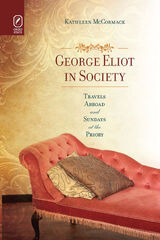 George Eliot in Society: Travels Abroad and Sundays at the Priory
Kathleen McCormack
Ohio State University Press, 2013 Sundays at the Priory, the salons that George Eliot and George Henry Lewes conducted throughout the winter seasons during their later years in the 1870s, have generally earned descriptions as at once scandalous and dull, with few women in attendance, and guests approaching the Sibyl one by one to express their almost pious devotion. But both the guest lists of the salons—which include significant numbers of women, a substantial gay and lesbian contingent, and a group of singers who performed repeatedly—together with the couple’s frequent travels to European spas, where they encountered many of the guests likely to visit the Priory, revise the conclusion that George Eliot lived her entire life as an ostracized recluse. Instead, newly mined sources reveal George Eliot as a member of a large and elite, if slightly Bohemian, international social circle in which she moved as a literary celebrity and through which she stimulated her creative imagination as she composed her later poetry and fiction. George Eliot in Society: Travels Abroad and Sundays at the Priory by Kathleen McCormack draws attention to the survival of the literary/musical/artistic salon in the Victorian era, at a time in which social interactions coexisted with rising tensions that would soon obliterate the European spa/salon culture in which the Leweses participated, both as they traveled abroad and at Sundays at the Priory.
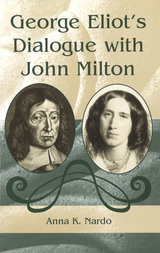 George Eliot's Dialogue with John Milton
Anna K. Nardo
University of Missouri Press, 2003
In George Eliot’s Dialogue with John Milton, Anna K. Nardo details how Eliot reimagined Milton’s life and art to write epic novels for an age of unbelief. Nardo demonstrates that Eliot directly engaged Milton’s poetry, prose, and the well-known legends of his life—transposing, reframing, regendering, and thus testing both the stories told about Milton and the stories Milton told.
In Romola and Middlemarch, Eliot’s contemporary audience would immediately have recognized in her heroines’ stories the plight of Milton’s daughters—enlisted as readers for a blind poet and scholar. By evoking the well-known legends of Milton’s life in these novels, Eliot places Milton in dialogue with himself in order to imagine new possibilities. In Romola, a daughter uses what she has learned from one Miltonic father to liberate herself from subjugation to the other, and in Middlemarch, Eliot tests Milton’s fundamental assumptions about gender and knowledge by evoking, then reframing scenes from his life and his epic Paradise Lost.
This strategy for establishing a dialogue with authoritative discourse, which Eliot evolved in midcareer, is complex and elegant. Eliot’s first full-length novel, however, poses a direct challenge to the pastoral assumptions of Milton’s “L’Allegro” and “Il Penseroso”—a challenge that she extends to the theology of Milton’s epic of a lost pastoral paradise. In Adam Bede, Eliot summons Miltonic patterns into situations that expose their absence, leaving not the denial of these patterns, but their echo. Having separated Milton’s characteristic patterns of choice from his theology, Eliot then began to experiment with transformations of the Miltonic hero. By reimagining the story of the virtuous Lady of Comus, Eliot discovers the possibility for a heroic deliverance for the beleaguered heroine of The Mill on the Floss. In Felix Holt and Daniel Deronda, she first characterizes a male protagonist as a Miltonic hero, and then confronts her female, rather than her male, protagonist with the trials faced by that hero.
In these complex transformations, we see Eliot’s strenuous and lifelong dialogue with Milton—a dialogue that liberated Eliot’s imagination. The author shows that Eliot opens the authoritative discourse by and about Milton to new possibilities envisioned by a towering female intellect. Scholars of both seventeenth-century and nineteenth-century British literature, especially those specializing in Eliot or Milton, as well as theorists engaged in the ongoing debate about intertextuality, will find this book of great interest.
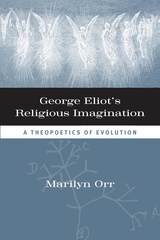 George Eliot's Religious Imagination: A Theopoetics of Evolution
Marilyn Orr
Northwestern University Press, 2018 George Eliot's Religious Imagination addresses the much-discussed question of Eliot’s relation to Christianity in the wake of the sociocultural revolution triggered by the spread of theories of evolution. The standard view is that the author of Middlemarch and Silas Marner “lost her faith” at this time of religious crisis. Orr argues for a more nuanced understanding of the continuity of Eliot’s work, as one not shattered by science, but shaped by its influence.
Orr’s wide-ranging and fascinating analysis situates George Eliot in the fertile intellectual landscape of the nineteenth century, among thinkers as diverse as Ludwig Feuerbach, David Strauss, and Søren Kierkegaard. She also argues for a connection between George Eliot and the twentieth-century evolutionary Christian thinker Pierre Teilhard de Chardin. Her analysis draws on the work of contemporary philosopher Richard Kearney as well as writers on mysticism, particularly Karl Rahner.
The book takes an original look at questions many believe settled, encouraging readers to revisit George Eliot’s work. Orr illuminates the creative tension that still exists between science and religion, a tension made fruitful through the exercise of the imagination. Through close readings of Eliot's writings, Orr demonstrates how deeply the novelist's religious imagination continued to operate in her fiction and poetry.
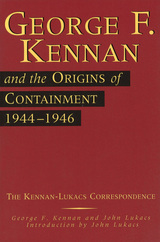 George F. Kennan and the Origins of Containment, 1944-1946: The Kennan-Lukacs Correspondence
George F. Kennan & Jonh Lukacs
University of Missouri Press, 1997 In 1945 the United States saw the Soviet Union as its principal ally. By 1947, it saw the Soviet Union as its principal opponent. How did this happen? Historian John Lukacs has provided an answer to this question through an exchange of letters with George F. Kennan. Their correspondence deals with the antecedents of containment between 1944 and 1946, during most of which time Kennan was at the American embassy in Moscow. Kennan had strong opinions about America's appropriate role during and after World War II and is perhaps best known as the architect of America's containment policy. Much has been written about Kennan and containment, but relatively little is known about the events that made him compose and send the Long Telegram in 1946 that ultimately became the draft for foreign policy dealing with the Soviets in the following forty years. These letters show Kennan's fear of the extent to which the United States misunderstood the Soviet regime. Especially in 1944, at the time of the Russians' betrayal of the Warsaw Uprising, it became evident that the Soviets were interested in establishing their rigid domination of Eastern and Central Europe and dividing the continent. Kennan's letters to Lukacs are thorough and detailed, suggesting that the Truman administration was not in the least premature in opposing the Soviet Union. Indeed, both correspondents suggest that these decisions should have been made earlier. This series of letters will add greatly to our understanding of what preceded containment and the Cold War in 1947.
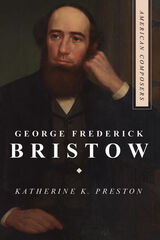 George Frederick Bristow
Katherine K. Preston
University of Illinois Press, 2020 As American classical music struggled for recognition in the mid-nineteenth century, George Frederick Bristow emerged as one of its most energetic champions and practitioners. Katherine K. Preston explores the life and works of a figure admired in his own time and credited today with producing the first American grand opera and composing important works that ranged from oratorios to symphonies to chamber music. Preston reveals Bristow's passion for creating and promoting music, his skills as a businessman and educator, the respect paid him by contemporaries and students, and his tireless work as both a composer and in-demand performer. As she examines Bristow against the backdrop of the music scene in New York City, Preston illuminates the little-known creative and performance culture that he helped define and create.
Vivid and richly detailed, George Frederick Bristow enriches our perceptions of musical life in nineteenth-century America.
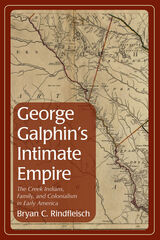 George Galphin's Intimate Empire: The Creek Indians, Family, and Colonialism in Early America
Bryan C. Rindfleisch
University of Alabama Press, 2019 A revealing saga detailing the economic, familial, and social bonds forged by Indian trader George Galphin in the early American South
A native of Ireland, George Galphin arrived in South Carolina in 1737 and quickly emerged as one of the most proficient deerskin traders in the South. This was due in large part to his marriage to Metawney, a Creek Indian woman from the town of Coweta, who incorporated Galphin into her family and clan, allowing him to establish one of the most profitable merchant companies in North America. As part of his trade operations, Galphin cemented connections with Indigenous and European peoples across the South, while simultaneously securing links to merchants and traders in the British Empire, continental Europe, and beyond.
In George Galphin’s Intimate Empire: The Creek Indians, Family, and Colonialism in Early America, Bryan C. Rindfleisch presents a complex narrative about eighteenth-century cross-cultural relationships. Reconstructing the multilayered bonds forged by Galphin and challenging scholarly understandings of life in the Native South, the American South more broadly, and the Atlantic World, Rindfleisch looks simultaneously at familial, cultural, political, geographical, and commercial ties—examining how eighteenth-century people organized their world, both mentally and physically. He demonstrates how Galphin’s importance emerged through the people with whom he bonded. At their most intimate, Galphin’s multilayered relationships revolved around the Creek, Anglo-French, and African children who comprised his North American family, as well as family and friends on the other side of the Atlantic.
Through extensive research in primary sources, Rindfleisch reconstructs an expansive imperial world that stretches across the American South and reaches into London and includes Indians, Europeans, and Africans who were intimately interconnected and mutually dependent. As a whole, George Galphin’s Intimate Empire provides critical insights into the intensely personal dimensions and cross-cultural contours of the eighteenth-century South and how empire-building and colonialism were, by their very nature, intimate and familial affairs.
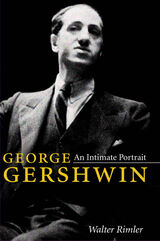 George Gershwin: An Intimate Portrait
Walter Rimler
University of Illinois Press, 2009 George Gershwin lived with purpose and gusto, but with melancholy as well, for he was unable to make a place for himself--no family of his own and no real home in music. He and his siblings received little love from their mother and no direction from their father. Older brother and lyricist Ira managed to create a home when he married Leonore Strunsky, a hard-edged woman who lived for wealth and status. The closest George came to domesticity was through his longtime relationship with Kay Swift. She was his lover, musical confidante, and fellow composer. But she remained married to another man while he went endlessly from woman to woman. Only in the final hours of his life, when they were separated by a continent, did he realize how much he needed her. Fatally ill, unprotected by (and perhaps estranged from) Ira, he was exiled by Leonore from the house she and the brothers shared, and he died horribly and alone at the age of thirty-eight. Nor was Gershwin able to find a satisfying musical harbor. For years his songwriting genius could be expressed only in the ephemeral world of show business, as his brilliance as a composer of large-scale works went unrecognized by highbrow music critics. When he resolved this quandary with his opera Porgy and Bess, the critics were unable to understand or validate it. Decades would pass before this, his most ambitious composition, was universally regarded as one of music's lasting treasures and before his stature as a great composer became secure. In George Gershwin: An Intimate Portrait, Walter Rimler makes use of fresh sources, including newly discovered letters by Kay Swift as well as correspondence between and interviews with intimates of Ira and Leonore Gershwin. It is written with spirited prose and contains more than two dozen photographs.
 George Henry Lewes: A Victorian Mind
Hock Guan Tjoa
Harvard University Press, 1977 George Henry Lewes, consort of George Eliot biographer of Robespierre and Goethe, novelist, editor, and critic, was also a scientist and philosopher. An intellectual figure of great importance on the Victorian scene, he has never before received adequate modern scholarly appreciation. In this book Professor Tjoa not only reconstructs Lewes’ theory of criticism and his social and political opinions but also evaluates his contributions to Darwinian science both as original thinker and as popularizer. With skillful discrimination, moreover, Mr. Tjoa has extracted from Lewes’ massive five-volume Problems of Life and Mind a clear and succinct account of Lewes’ metaphysical views. Literature and art, politics and societs science and an in- formed Victorian philosophy of man and the universe: the effervescent Lewes made important contributions to all. Hitherto in danger of surviving in our minds only as the lover, friend, and counselor of one of the Victorian age’s greatest novelists, Lewes emerges in Mr. Ijoa’s brief and lucid study as a thinker to he remembered for his writings as well.
George Herbert Mead on Social Psychology
George Herbert Mead
University of Chicago Press, 1964 One of the most brilliantly original of American pragmatists, George Herbert Mead published surprisingly few major papers and not a single book during his lifetime. Yet his influence on American sociology and social psychology since World War II has been exceedingly strong.
This volume is a revised and enlarged edition of the book formerly published under the title The Social Psychology of George Herbert Mead. It contains selections from Mead's posthumous books: Mind, Self, and Society; Movements of Thought in the Nineteenth Century; The Philosophy of the Act; and The Philosophy of the Present, together with an incisive, newly revised, introductory essay by Anselm Strauss on the importance of Mead for contemporary social psychology.
"Required reading for the social scientist."—Milton L. Barron, Nation
George Herbert Mead on Social Psychology
George Herbert Mead
University of Chicago Press, 1964 This is an auto-narrated audiobook version of this book.
One of the most brilliantly original of American pragmatists, George Herbert Mead published surprisingly few major papers and not a single book during his lifetime. Yet his influence on American sociology and social psychology since World War II has been exceedingly strong.
This volume is a revised and enlarged edition of the book formerly published under the title The Social Psychology of George Herbert Mead. It contains selections from Mead's posthumous books: Mind, Self, and Society; Movements of Thought in the Nineteenth Century; The Philosophy of the Act; and The Philosophy of the Present, together with an incisive, newly revised, introductory essay by Anselm Strauss on the importance of Mead for contemporary social psychology.
"Required reading for the social scientist."—Milton L. Barron, Nation
George Herbert Mead: THE MAKING OF A SOCIAL PRAGMATIST
Gary A. Cook
University of Illinois Press, 1993 This groundbreaking study details the intellectual development of George Herbert Mead as a thinker of great originality and as a practitioner of social reform. Gary Cook traces the genesis of Mead's social psychological and philosophical ideas by analyzing his journal articles and posthumously published writings.
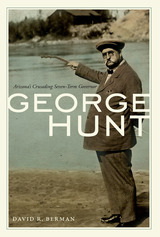 George Hunt: Arizona's Crusading Seven-Term Governor
David R. Berman
University of Arizona Press, 2015 George W. P. Hunt was a highly colorful Arizona politician. A territorial representative and seven-time Arizona state governor, Hunt joined Woodrow Wilson in making the Democratic Party the party of Progressive reform. This political biography follows Hunt through his years in the territorial legislature, and then as governor. Author David R. Berman’s well-researched and detailed work features Hunt’s battles to stem the powers of large corporations, democratize the political system, defend labor rights, reform the prison system, abolish the death penalty, and protect Arizona’s interests in the Colorado River. He had a special concern for the down and out. He found the "forgotten man" long before Franklin Roosevelt.
Hunt was proof that style and physical appearance neither guarantee nor preclude political success, for the three-hundred-pound man of odd dress and bumbling speech had a political career that spanned the state’s Populism of the 1890s to the 1930s New Deal. Driven by causes, he was very active in public office but took little pleasure in doing the job. Called names by opponents and embarrassed by his lack of formal education, Hunt sometimes showed rage, self-pity, and bitterness at what he saw as betrayals and conspiracies against him.
The author assesses Hunt’s successes and failings as a political leader and take-charge governor struggling to produce results in a political system hostile to executive authority. Berman offers a nuanced look at Arizona’s first governor, providing an important new understanding of Arizona’s complex political history.
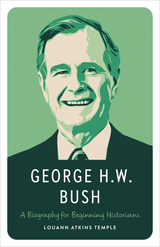 George H.W. Bush: A Biography for Beginning Historians
Louann Atkins Temple
University of Texas Press, 2025 A brief biography of George H.W. Bush for young readers. Louann Temple is a lifelong Texan with a personal passion for arts and education who believes that biography, with its emphasis on personalities, is ideal for introducing young people to history, with its focus on events. Temple is uniquely situated to write this biography for young readers, as she has been personally acquainted with many important people in presidential history, President George H. W. Bush included, and she has mentored countless middle and high school students, preparing them for college admission. George H. W. Bush highlights the key events in the life of the forty-first president; explores the life lessons afforded by his legacy; and reflects on the broad historical issues during his time in the White House as president from 1989 to 1993. George H. W. Bush’s legacy as president is remarkable as he guided America through the end of the Cold War and helped to reunite a divided Germany. Enhanced with a carefully curated selection of black and white photographs from three presidential libraries, this biography for beginning historians is poised to bring the best of biography and history to a new generation of readers.
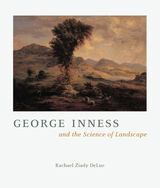 George Inness and the Science of Landscape
Rachael Ziady DeLue
University of Chicago Press, 2005 George Inness (1825-94), long considered one of America's greatest landscape painters, has yet to receive his full due from scholars and critics. A complicated artist and thinker, Inness painted stunningly beautiful, evocative views of the American countryside. Less interested in representing the details of a particular place than in rendering the "subjective mystery of nature," Inness believed that capturing the spirit or essence of a natural scene could point to a reality beyond the physical or, as Inness put it, "the reality of the unseen."
Throughout his career, Inness struggled to make visible what was invisible to the human eye by combining a deep interest in nineteenth-century scientific inquiry—including optics, psychology, physiology, and mathematics—with an idiosyncratic brand of mysticism. Rachael Ziady DeLue's George Inness and the Science of Landscape—the first in-depth examination of Inness's career to appear in several decades—demonstrates how the artistic, spiritual, and scientific aspects of Inness's art found expression in his masterful landscapes. In fact, Inness's practice was not merely shaped by his preoccupation with the nature and limits of human perception; he conceived of his labor as a science in its own right.
This lavishly illustrated work reveals Inness as profoundly invested in the science and philosophy of his time and illuminates the complex manner in which the fields of art and science intersected in nineteenth-century America. Long-awaited, this reevaluation of one of the major figures of nineteenth-century American art will prove to be a seminal text in the fields of art history and American studies.
George Magoon and the Down East Game War: History, Folklore, and the Law
Edward D. Ives
University of Illinois Press, 1988 George Magoon (1851-1929), a notorious
moose and deer poacher in Maine, was the hero of scores of funny stories of
how he outwitted game wardens. Preserving these oral histories, Edward Ives
documents Magoon's life and explores his significance as a folk hero within
the context of the conservation movement, the cult of the sportsman, and Maine's
increasingly restrictive game laws.
"A rich and subtle book, an
important work by a major scholar. . . . It is a major contribution to folklore
studies, and to history and American studies as well."
-- Journal of American Folklore
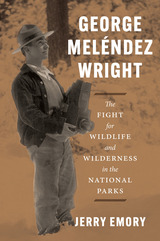 George Meléndez Wright: The Fight for Wildlife and Wilderness in the National Parks
Jerry Emory
University of Chicago Press, 2023 The first biography of a visionary biologist whose groundbreaking ideas regarding wildlife and science revolutionized national parks.
When twenty-three-year-old George Meléndez Wright arrived in Yosemite National Park in 1927 to work as a ranger naturalist—the first Hispanic person to occupy any professional position in the National Park Service (NPS)—he had already visited every national park in the western United States, including McKinley (now Denali) in Alaska. Two years later, he would organize the first science-based wildlife survey of the western parks, forever changing how the NPS would manage wildlife and natural resources. At a time when national parks routinely fed bears garbage as part of “shows” and killed “bad” predators like wolves, mountain lions, and coyotes, Wright’s new ideas for conservation set the stage for the modern scientific management of parks and other public lands.
Tragically, Wright died in a 1936 car accident while working to establish parks and wildlife refuges on the US-Mexico border. To this day, he remains a celebrated figure among conservationists, wildlife experts, and park managers. In this book, Jerry Emory, a conservationist and writer connected to Wright’s family, draws on hundreds of letters, field notes, archival research, interviews, and more to offer both a biography of Wright and a historical account of a crucial period in the evolution of US parks and the wilderness movement. With a foreword by former NPS director Jonathan B. Jarvis, George Meléndez Wright is a celebration of Wright’s unique upbringing, dynamism, and enduring vision that places him at last in the pantheon of the great American conservationists.
George Mercer Papers: Relating to the Ohio Company of Virginia
Lois Mulkearn
University of Pittsburgh Press, 1994 George Mercer was a lieutenant and later captain of the First Virginia Regiment during the French and Indian War, and a land surveyor. He served as agent for the Ohio Company in England. In this book, Lois Mulkearn interprets George Mercer's documents on the activities of the Ohio Company.Through the eyes of Indians, French, and English we see the political and military efforts to control the vast area of the Ohio frontier, and witness treaties signed at Logstown, and those between Pennsylvania and the Weas and Piankashaws in 1740. Among Mercer's other papers are directions for laying out the first British town to be called “Saltsburg” at present day McKees Rocks, outside Pittsburgh. With this extensive collection, Mulkearn enlightens our knowledge of colonial history and the western frontier.
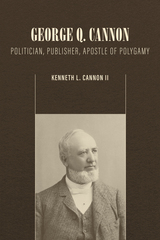 George Q. Cannon: Politician, Publisher, Apostle of Polygamy
Kenneth L. Cannon II
Signature Books, 2023 George Q. Cannon is generally acknowledged as second only to Brigham Young as the most visible leader of Mormonism in the mid- to late-nineteenth century. He became Young’s protégé and was an influential first counselor in the First Presidency of the Church of Jesus Christ of Latter-day Saints for almost twenty-five years, serving with presidents Brigham Young, John Taylor, Wilford Woodruff, and Lorenzo Snow. Known as the “spokesman for the kingdom,” Cannon was the central political figure of the church, not only serving as Utah territory’s delegate to Congress for ten years but also as chief political advisor and long-term editor of the Deseret News. Cannon helped shape doctrine, church governance, and administration during a period of significant change, defending and promulgating plural marriage both before and after the 1890 Manifesto. He was at the center of business life in Salt Lake City, serving as president of the largest publishing house, banks, a railroad, mining companies, electric companies, and other businesses. Though Cannon was loved and revered by his people, controversy sometimes touched his life and family.
 George Sand: Writing for Her Life
Isabelle Hoog Naginski
Rutgers University Press, 1991 Sand was a prolific writer of nearly 60 novels who dealt with the serious issues of her time and was identified with the Romantic literary movement. Yet serious study of her works is lacking, for Sand became known more for her eccentric lifestyle and love affairs with famous contemporaries, i.e., Alfred de Musset and Frederic Chopin, than her career as a writer. Moreover, she was unique in her approach as a woman who refused to trivialize her craft because of her gender. The author of this critical study sets the record straight, belatedly bestowing upon Sand the academic acclaim that is long past due. Through extensive analysis of her principal works, she delineates her progression from mal du siecle pessimism to utopian optimism and from diagnosing society's ills to prescribing a cure for them. The author (French, Russian, and comparative literature, Tufts Univ.) has aptly illuminated Sand's unique narrative approach and has opened the door for further examination of her works.
 George Sanders, Zsa Zsa, and Me
David R. Slavitt
Northwestern University Press, 2009 Taking its inspiration from Sanders’s own autobiography Memoirs of a Professional Cad (1960), this book is part witty, bawdy, and irreverent memoir, part moving meditation on the price of fame; like most of David Slavitt’s work, it defies easy categorization.In George Sanders, Zsa Zsa, and Me, Slavittlooks back to his career as a film critic in the glamorous—at least superficially—world of 1950s Hollywood, when he traveled in circles that included the talented British actor George Sanders (1906–1972) and his then-wife, Zsa Zsa Gabor, who was talented at, well, being famous. Sanders, who seemed to maintain an ironic detachment from roles that were often beneath him, nonetheless couldn’t bear the decline of his later years and committed suicide at the age of sixty-five. Darkly humorous to the end, his note read, "Dear World, I am leaving because I am bored. I feel I have lived long enough. I am leaving you with your worries in this sweet cesspool. Good luck." Zsa Zsa, on the other hand, remains in the headlines (with her dubiously named husband Frédéric Prinz von Anhalt) at age ninety-two. Although he punctuates his story with witty asides—the author’s encounter with Marilyn Monroe is particularly memorable—Slavitt turns a critic’s eye toward questions of talent and art, while also tackling the difficult and universal questions of aging, relationships, and mortality.
 George Sherwood: Wind, Waves, and Light
June LaCombe
The Artist Book Foundation, 2024 George Sherwood’s kinetic sculptures invite us to observe, experience, contemplate and engage more fully in the natural world around us. His intricate and innovatively designed works explore aesthetic systems of space, time, and the dynamic relationships of objects in motion. The choreography of each piece is governed by a set of basic movements, facilitated by an arrangement of aerodynamic surfaces connected by rotational points. The Artist Book Foundation is pleased to present George Sherwood: Wind, Waves, and Light, the first monograph on this award-winning artist’s lustrous, subtly transformative works.
Featuring 100 sculptures from Sherwood’s early whimsical explorations to his monumental commissions that have graced private and public gardens, city sites, and exhibition spaces around the world, readers will witness how changing winds, shades of light, times of day, precipitation, and the seasons’ changing colors alter the sculptures, animate their surroundings, and ignite the imagination. Sherwood’s sculptures are often made of stainless steel, a reflective material that serves to integrate the works into the unique and often transient light of their environments.
Based in Ipswich, Massachusetts, Sherwood has been featured in numerous solo exhibitions including the Currier Museum, Manchester, New Hampshire; Saint Gauden’s National Historic Site in Cornish, New Hampshire; The Rose Kennedy Greenway in Boston, Massachusetts; and the Katonah Museum, in Katonah, New York. In 2007 he was awarded the Lillian Heller Award for Contemporary Art at Chesterwood in Stockbridge, Massachusetts. His works can be found in the permanent collections of The Currier Museum; The Dana Farber Cancer Institute 20th and 21st century Contemporary Art Collection in Boston, Massachusetts; the Coastal Maine Botanical Gardens in Boothbay, Maine, the Atlanta Botanical Garden in Atlanta, Georgia; and the Contemporary Sculpture Path at the Forest Hills Educational Trust in Jamaica Plain, Massachusetts.
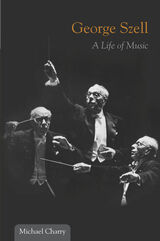 George Szell: A Life of Music
Michael Charry
University of Illinois Press, 2014 This book is the first full biography of George Szell, one of the greatest orchestra and opera conductors of the twentieth century. From child prodigy pianist and composer to world-renowned conductor, Szell's career spanned seven decades, and he led most of the great orchestras and opera companies of the world, including the New York Philharmonic, the NBC and Chicago Symphonies, the Berlin Philharmonic, the Vienna Philharmonic and Opera, and the Concertgebouw Orchestra. A protégé of composer-conductor Richard Strauss at the Berlin State Opera, his crowning achievement was his twenty-four-year tenure as musical director of the Cleveland Orchestra, transforming it into one of the world's greatest ensembles, touring triumphantly in the United States, Europe, the Soviet Union, South Korea, and Japan. Michael Charry, a conductor who worked with Szell and interviewed him, his family, and his associates over several decades, draws on this first-hand material and correspondence, orchestra records, reviews, and other archival sources to construct a lively and balanced portrait of Szell's life and work from his birth in 1897 in Budapest to his death in 1970 in Cleveland. Readers will follow Szell from his career in Europe, Great Britain, and Australia to his guest conducting at the New York Philharmonic and his distinguished tenure at the Metropolitan Opera and Cleveland Orchestra. Charry details Szell's personal and musical qualities, his recordings and broadcast concerts, his approach to the great works of the orchestral repertoire, and his famous orchestrational changes and interpretation of the symphonies of Robert Schumann. The book also lists Szell's conducting repertoire and includes a comprehensive discography. In highlighting Szell's legacy as a teacher and mentor as well as his contributions to orchestral and opera history, this biography will be of lasting interest to concert-goers, music lovers, conductors, musicians inspired by Szell's many great performances, and new generations who will come to know those performances through Szell's recorded legacy.
 George Szell's Reign: Behind the Scenes with the Cleveland Orchestra
Marcia Hansen Kraus
University of Illinois Press, 2019 George Szell was the Cleveland Orchestra's towering presence for over a quarter of a century. From the boardroom to the stage, Szell's powerful personality affected every aspect of a musical institution he reshaped in his own perfectionist image. Marcia Hansen Kraus's participation in Cleveland's classical musical scene allowed her an intimate view of Szell and his achievements. As a musician herself, and married to an oboist who worked under Szell, Kraus pulls back the curtain on this storied era through fascinating interviews with orchestra musicians and patrons. Their recollections combine with Kraus's own to paint a portrait of a multifaceted individual who both earned and transcended his tyrannical reputation. If some musicians hated Szell, others loved him or at the least respected his fair-minded toughness. A great many remember playing under his difficult leadership as the high point in their lives. Filled with vivid backstage stories, George Szell's Reign reveals the human side of a great orchestra ”and how one visionary built a premier classical music institution.
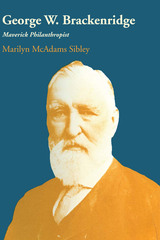 George W. Brackenridge: Maverick Philanthropist
By Marilyn McAdams Sibley
University of Texas Press, 1973 George W. Brackenridge (1832–1920) was a paradox to his fellow Texans. A Republican in a solidly Democratic state, a financier in a cattleman's country, a Prohibitionist in the goodtime town of San Antonio, he devoted his energies to making a fortune only to give it to philanthropic causes. Indiana born, Brackenridge came to Texas in 1853, but left the state during the Civil War to serve as U.S. Treasury agent and engage in the wartime cotton trade. Later he settled in San Antonio, where he founded a bank and invested in railroads, utilities, and other enterprises. Some of Brackenridge's contemporaries never forgave him for his Civil War career, but others knew him as a public-spirited citizen, educator, and advocate of civil rights. He cared little for what others thought of him. Yet, he confided once in a rare interview that his fondest ambition was to leave the world a better place for his having lived in it. To this end, he gave generously of himself and his means. His best-known benefaction is Brackenridge Park, which he gave to the city of San Antonio, but most of his contributions were in the field of education. As regent of the University of Texas for more than twenty-five years, he gave the institution its first dormitory, a large tract of land in Austin, and innumerable smaller gifts. He also offered to underwrite the expenses of the University when Governor James E. Ferguson vetoed the appropriation bill for 1917–1919. Other educational institutions to benefit from his largess were the public schools of San Antonio, a Negro college in Seguin, and the University of Texas Medical Branch at Galveston. In addition, he assisted individual students, especially women, through scholarships and loans. Believing that the betterment of humanity lay in education, Brackenridge arranged for the continuation of his philanthropies. By his will he created the George W. Brackenridge Foundation, the first of its kind in Texas and one of the first in the United States. Marilyn McAdams Sibley's study of George W. Brackenridge is the first biography of an important and, for his time, unusual Texan. It presents new material concerning the Mexican cotton trade during the Civil War, on the beginnings of banking in Texas, and on higher education in Texas.
 George W. Bush: A Biography for Beginning Historians
Louann Atkins Temple
University of Texas Press, 2025 A brief biography of George W. Bush for young readers. Louann Temple is a lifelong Texan with a personal passion for arts and education who believes that biography, with its emphasis on personalities, is ideal for introducing young people to history, with its focus on events. Temple is uniquely situated to write this biography for young readers, as she has been personally acquainted with many important people in presidential history, President George W. Bush included, and she has mentored countless middle and high school students, preparing them for college admission. George W. Bush highlights the key events in the life of the forty-third president; explores the life lessons afforded by his legacy; and reflects on the broad historical issues during his time in the White House as president from 2001 to 2009. George W. Bush’s legacy as president is significant as he guided America through the events of 9/11. Enhanced with a carefully curated selection of black and white photographs from three presidential libraries, this biography for beginning historians is poised to bring the best of biography and history to a new generation of readers.
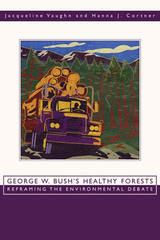 George W. Bush's Healthy Forests: Reframing the Environmental Debate
Jacqueline Vaughn
University Press of Colorado, 2005 In George W. Bush's Healthy Forests, Jacqueline Vaughn and Hanna Cortner detail how the Bush administration, by changing the terms and processes of debate, sidestepped opposition and put in place policies that restrict public and scientific involvement in environmental decisions. Their groundbreaking study analyzes the context and legal effects of the Healthy Forests Initiative, Healthy Forests Restoration Act, and related regulatory changes.
The authors show how the administration used news events such as wildfires to propel legislation through Congress. Focusing blame for wildfires on legal obstacles and environmentalists' use of appeals to challenge fuel-reduction projects, the administration restricted opportunities for environmental analysis, administrative appeals, and litigation. The authors argue that these tools have a history of use by diverse interests and have long protected Americans' right to question government decisions.
This readable study identifies the players, events, and strategies that expedited the policy shift and contextualizes it in the president's career and in legislative and administrative history. Revealing a policy change with major implications for the future of public lands and public process, George W. Bush's Healthy Forests will become required reading in environmental studies and political science.
George Washington: A Man of Action
John P. Kaminski
Wisconsin Historical Society Press, 2017 Perhaps no other person could ever achieve the preeminent position in American history and culture occupied by George Washington. Born in 1732, Washington’s life–long commitment to self-improvement and discipline helped him become a legend in his own lifetime. Whether as a statesman, military man, or America’s first president, Washington created a legacy that has scarcely diminished in over two centuries. Yet the passage of time and the superlatives reserved for Washington have knit together and made it difficult to find the real man. Historian and editor John P. Kaminski has amassed an extraordinary body of quotations by and about George Washington that brings us closer to the essence of this great leader. This collection paints an intricate picture of the man who Henry 'Lighthorse' Lee of Virginia eulogized as: "First in war, first in peace, first in the hearts of his countrymen."
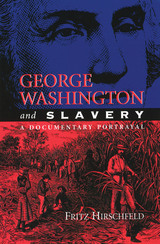 George Washington and Slavery: A Documentary Portrayal
Fritz Hirschfeld
University of Missouri Press, 1997 "I never mean (unless some particular circumstance should compel me to it) to possess another slave by purchase; it being among my first wishes to see some plan adopted, by which slavery in this country may be abolished by slow, sure and imperceptible degrees."—George Washington, September 9, 1786 No history of racism in America can be considered complete without taking into account the role that George Washington—the principal founding father—played in helping to mold the racist cast of the new nation. Because General Washington—the universally acknowledged hero of the Revolutionary War—in the postwar period uniquely combined the moral authority, personal prestige, and political power to influence significantly the course and the outcome of the slavery debate, his opinions on the subject of slaves and slavery are of crucial importance to understanding how racism succeeded in becoming an integral and official part of the national fabric during its formative stages. The successful end of the War for Independence in 1783 brought George Washington face-to-face with a fundamental dilemma: how to reconcile the proclaimed ideals of the revolution with the established institution of slavery. So long as black human beings in America could legally be considered the chattel property of whites, the rhetoric of equality and individual freedom was hollow. Progressive voices urged immediate emancipation as the only way to resolve the contradiction; the Southern slave owners, of course, stood firm for the status quo. Washington was caught squarely in the middle. As a Virginia plantation proprietor and a lifelong slaveholder, Washington had a substantial private stake in the economic slave system of the South. However, in his role as the acknowledged political leader of the country, his overriding concern was the preservation of the Union. If Washington publicly supported emancipation, he would almost certainly have to set an example and take steps to dispose of his Mount Vernon slaves. If he spoke out on the side of slavery, how could he legitimately and conscientiously expect to uphold and defend the humanistic goals and moral imperatives of the new nation as expressed in the Declaration of Independence and embodied in the Constitution and the Bill of Rights? His was a balancing act that became more and more difficult to sustain with the passing years. Relying primarily on Washington's own words—his correspondence, diaries, and other written records—supplemented by letters, comments, and eyewitness reports of family members, friends, employees, aides, correspondents, colleagues, and visitors to Mount Vernon, together with contemporary newspaper clippings and official documents pertaining to Washington's relationships with African Americans, Fritz Hirschfeld traces Washington's transition from a conventional slaveholder to a lukewarm abolitionist. George Washington and Slavery will be an essential addition to the historiography of eighteenth-century America and of Washington himself.
 The George Washington Bridge: Poetry in Steel
Michael Aaron Rockland
Rutgers University Press, 2020 Since opening in 1931, the George Washington Bridge, linking New York and New Jersey, has become the busiest bridge in the world, with 103 million vehicles crossing it in 2016. Many people also consider it the most beautiful bridge in the world, yet remarkably little has been written about this majestic structure. Intimate and engaging, this revised and expanded edition of Michael Rockland's rich narrative presents perspectives on the GWB, as it is often called, that span history, architecture, engineering, transportation, design, the arts, politics, and even post-9/11 mentalities. This new edition brings new insight since its initial publication in 2008, including a new chapter on the infamous “Bridgegate” Chris Christie-era scandal of 2013, when members of the governor's administration shut down access to the bridge, causing a major traffic jam and scandal and subsequently helping undermine Christie’s candidacy for the US presidency. Stunning photos, from when the bridge was built in the late 1920s through the present, are a powerful complement to the bridge's history. Rockland covers the competition between the GWB and the Brooklyn Bridge that parallels the rivalry between New Jersey and New York City. Readers will learn about the Swiss immigrant Othmar Ammann, an unsung hero who designed and built the GWB, and how a lack of funding during the Depression dictated the iconic, uncovered steel beams of its towers, which we admire today. There are chapters discussing accidents on the bridge, such as an airplane crash landing in the westbound lanes and the sad story of suicides off its span; the appearance of the bridge in media and the arts; and Rockland's personal adventures on the bridge, including scaling its massive towers on a cable. Movies, television shows, songs, novels, countless images, and even PlayStation 2 games have aided the GWB in becoming a part of the global popular culture. This tribute will captivate residents living in the shadow of the GWB, the millions who walk, jog, bike, skate, or drive across it, as well as tourists and those who will visit it someday. .
 The George Washington Bridge: Poetry in Steel
Michael Aaron Rockland
Rutgers University Press, 2008 Since opening in 1931, the George Washington Bridge, linking New York and New Jersey, has become the busiest bridge in the world, with 108 million vehicles crossing it in 2007. Many people also consider it the most beautiful bridge in the world, yet remarkably little has been written about this majestic structure.
Intimate and engaging, Michael Rockland's rich narrative presents perspectives on the GWB, as it is often called, that span history, architecture, engineering, transportation, design, the arts, politics, and even post-9/11 mentality. Stunning archival photos, from the late 1920s when the bridge was built through the present, are a powerful complement to the bridge's history. Rockland covers the competition between the GWB and the Brooklyn Bridge that parallels the rivalry between New Jersey and New York City. Readers will learn about the Swiss immigrant Othmar Ammann, an unsung hero who designed and built the GWB, and how a lack of funding during the Depression dictated the iconic, uncovered steel beams of its towers, which we admire today. There are chapters discussing accidents on the bridge, such as an airplane crash landing in the westbound lanes and the sad story of suicides off its span; the appearance of the bridge in media and the arts; and Rockland's personal adventures on the bridge, including scaling its massive towers on a cable.
Movies, television shows, songs, novels, countless images, and even PlayStation 2 games have aided the GWB in becoming a part of the global popular culture. This tribute will captivate residents living in the shadow of the GWB, the millions who walk, jog, bike, skate, or drive across it, as well as tourists and those who will visit it some day.
- First major book on the George Washington Bridge
- Full of amazing facts about the GWB that will surprise even bridge historians
- Includes over 30 spectacular illustrations, ranging from archival photographs of the building of the bridge to those that show it draped in an enormous flag after 9/11
- Includes personal accounts of the author's adventures on the bridge
George Washington Carver: In His Own Words
Edited by Gary R. Kremer
University of Missouri Press, 1987
George Washington Carver (1864-1943), best known for his work as a scientist and a botanist, was an anomaly in his own time—a black man praised by white America.
This selection of his letters and other writings reveals both the human side of Carver and the forces that shaped his creative genius. They show us a Carver who was both manipulated and manipulative who had inner tensions and anxieties. But perhaps more than anything else, these letters allow us to see Carver's deep love for his fellow man, whether manifested in his efforts to treat polio victims in the 1930s or in his incredibly intense and emotionally charged friendships that lasted a lifetime.
The editor has furnished commentary between letters to set them in context.
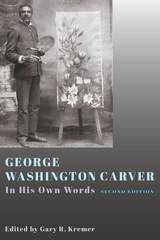 George Washington Carver: In His Own Words, Second Edition
Gary R. Kremer
University of Missouri Press, 2017 George Washington Carver (1864-1943) is best known for developing new uses for agricultural crops and teaching methods of soil improvement to southern farmers. This annotated selection of his letters and other writings from the collections at the Tuskegee Institute and the George Washington Carver National Monument in Diamond, Missouri, reveals the forces that shaped his creative genius—including the influence of persistent racism. His letters also show us Carver’s deep love for his fellow man, whether manifested in his efforts to treat polio victims in the 1930s or in his emotionally charged friendships that lasted a lifetime.
With a new chapter on the oral history interviews Dr. Kremer conducted (several years after publication of the first edition) with people who knew Carver personally, and the addition of newly uncovered documents and a bank of impressive photographs of Carver and some of his friends, this second edition of our classic title commemorates the 75th anniversary of Carver’s death on January 5, 2018.
|
|



